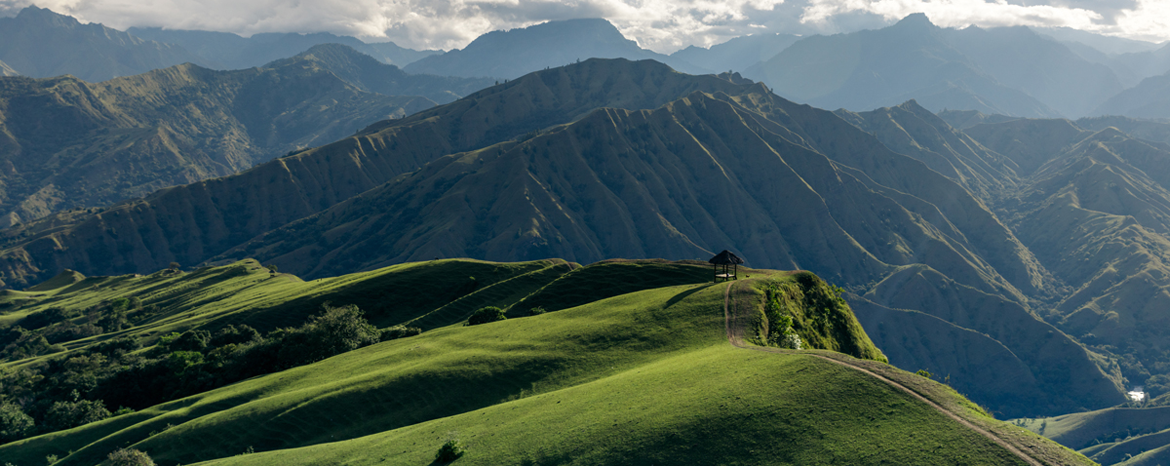Well, well, well… Here I am, unexpectedly back in Indonesia by the end of May 2023. My original plans for this time of year took an unexpected turn, leading me to Makassar, Sulawesi, Indonesia.
The “new plan”, get a motorcycle, and drive in Sulawesi for 2 months, because Indonesia allowed only 2 months on a single entry at that point.
Here’s the full gallery.
I will do 3 parts for this series about Sulawesi, there’s too much to cover for 1 post.
After shopping around, I settled on a 2023 Honda CRF 150L with just 802 kilometers on the odometer, priced at 30,000,000 IDR (approximately $1850 USD). Purchasing a motorcycle in Indonesia is a relatively straightforward affair. While you can’t officially transfer ownership, adherence to paperwork—such as the STNK and BPKB—is key. Luckily, as long as you have all the necessary documentation, nobody seems to mind. Agang Motor proved to be a reliable spot for finding the right bike.

I lingered in Makassar for an additional two days to gather some essentials for both the motorcycle and the upcoming journey.
Among Makassar’s prominent attractions, the 99 domes Mosque stands out as a must-visit destination
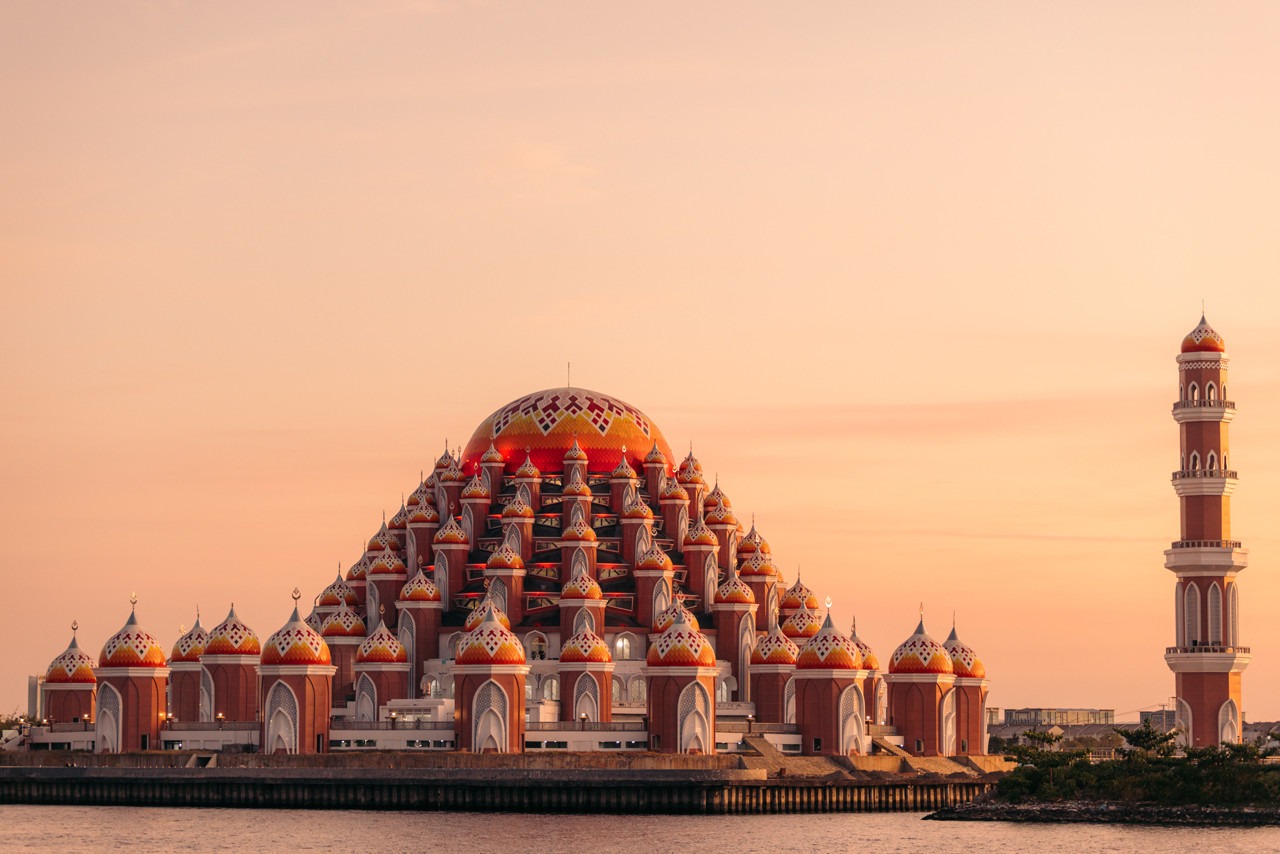
And it’s a start, my first destination was Bira, ~190km away from Makassar.
I first stopped in a place I saw on Maps, Padang Savana Ongkoa Takalar.
As you can see here my luggage was quite big, initially, I was geared up for camping with a tent and mattress, but I abandoned those plans just a few days later
I would’ve needed to carry much more stuff to make the camping doable. Logistically wise it was a bad idea.

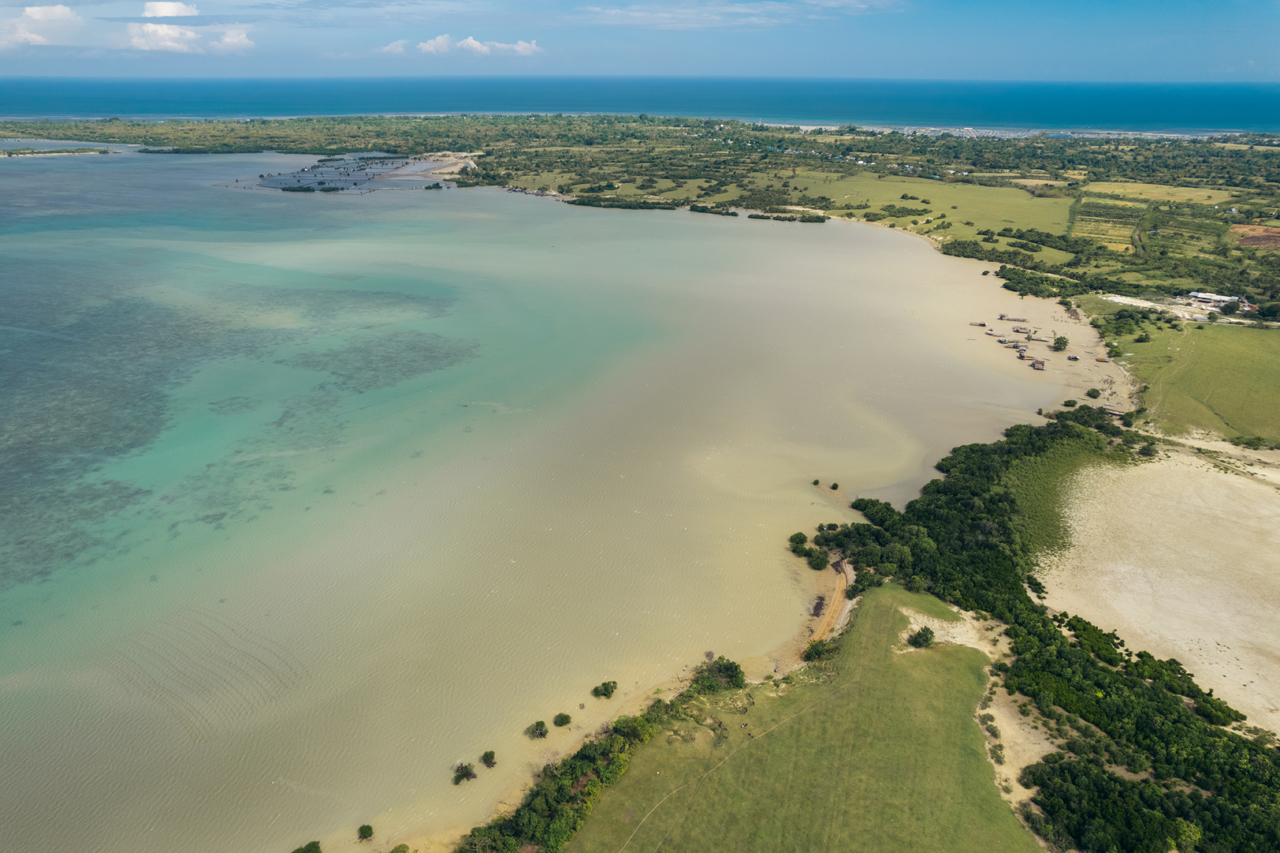
After this quick stop, I kept driving and stopped over at a random beach near an island called Pulau Libukang. Sadly all the resorts were shutdown and I couldn’t find a spot to sleep here.
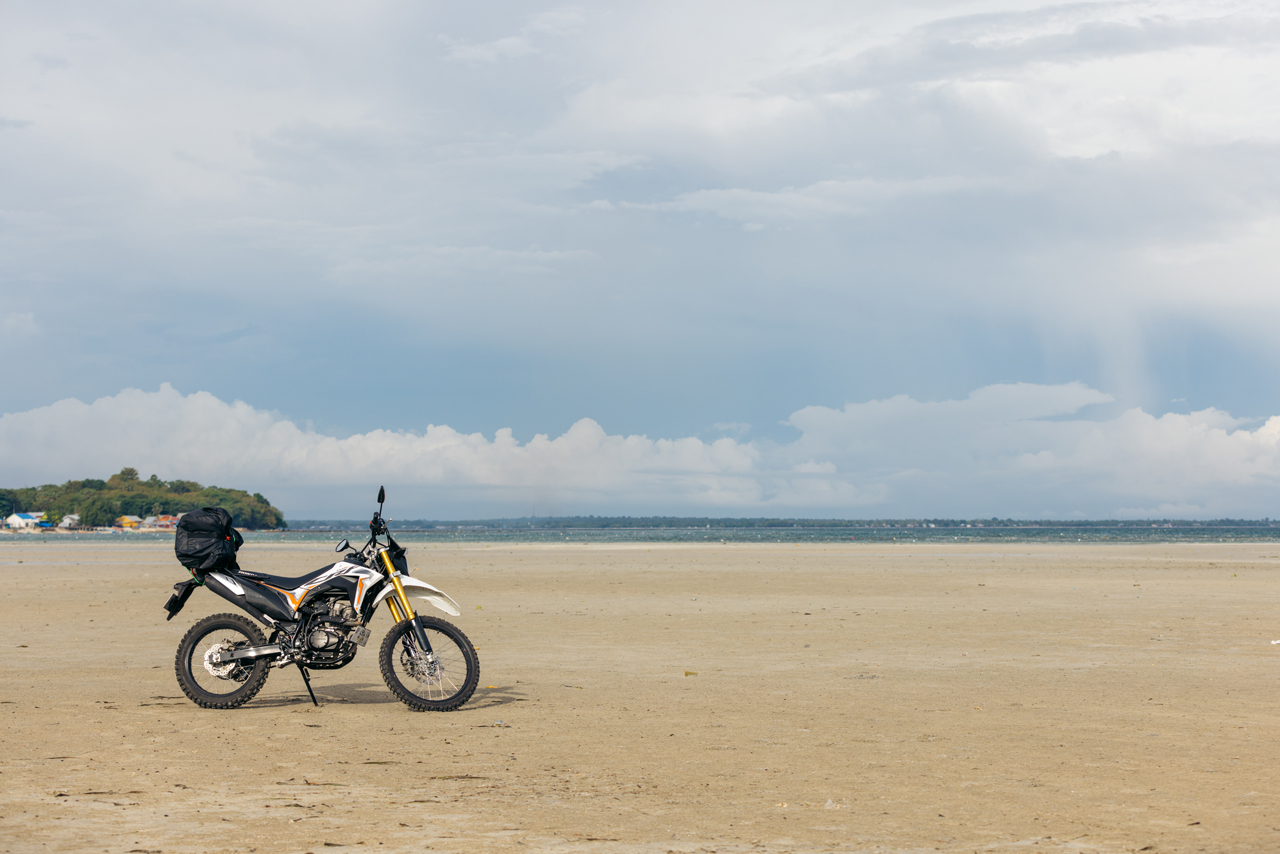
You can see the island is very nearby, especially at low tide. Here’s a drone shot of the island.
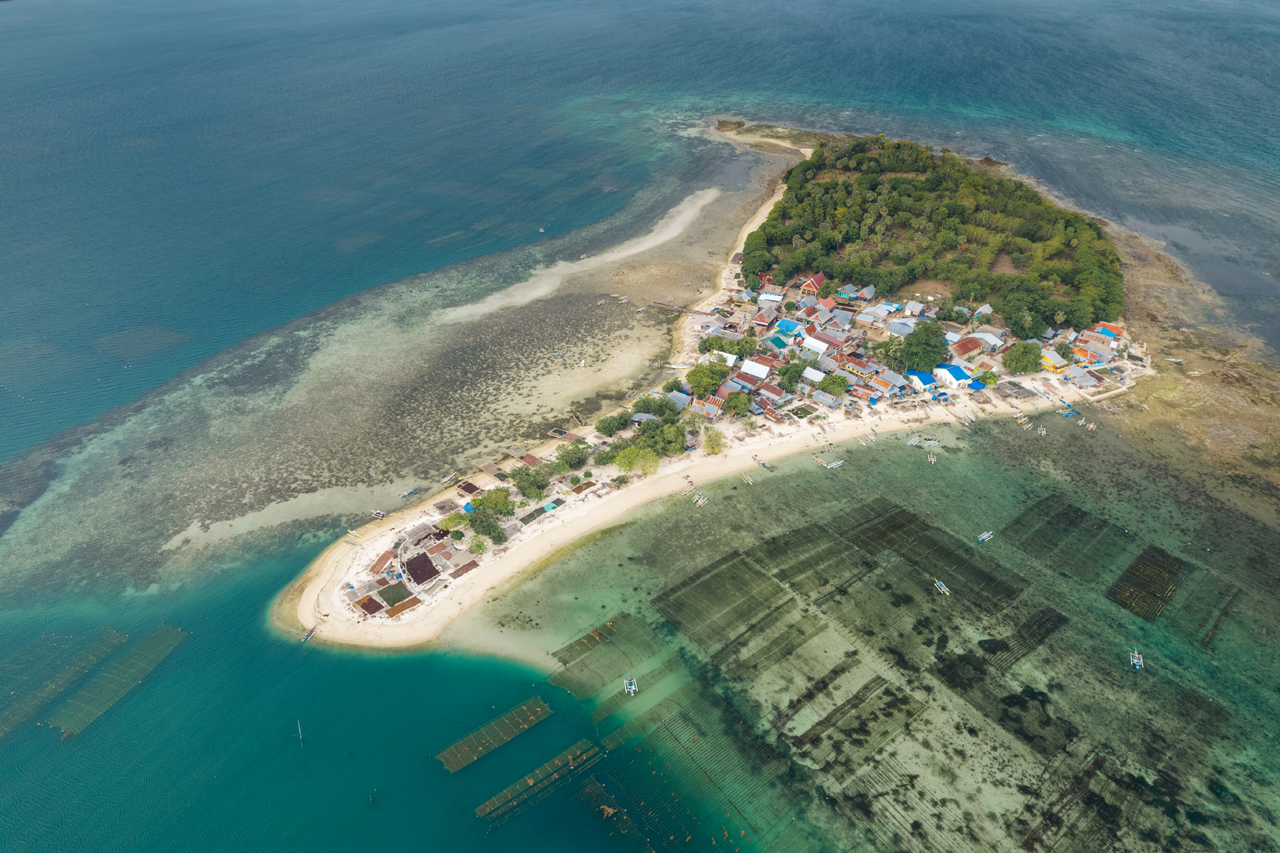
And one of the abandoned resorts on the shore, sad to see this, probably due to COVID.
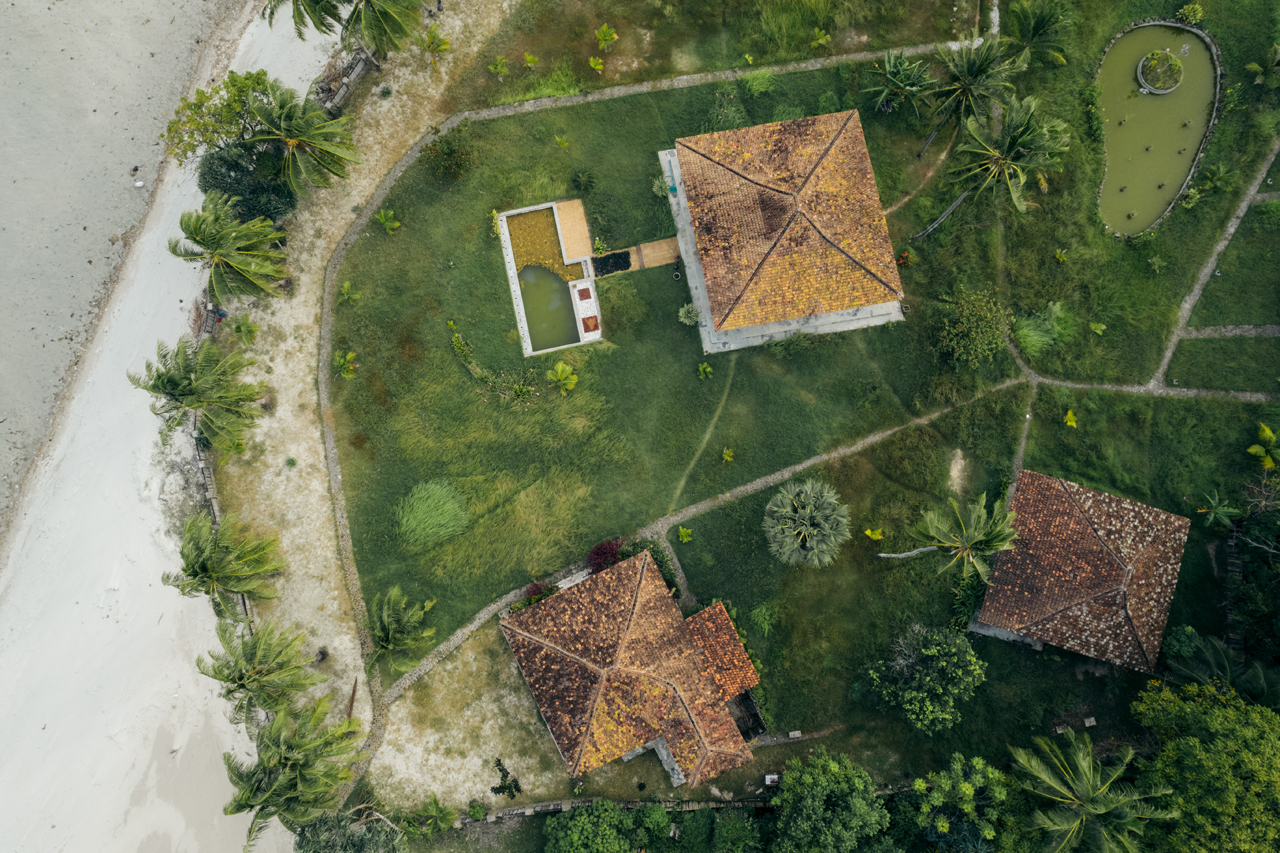
Ended up sleeping in Jeneponto, just a random town on the main road leading to Bira.
The next day the goal was to reach Bira, but first I had a few stops on the way. After breakfast, I headed to Air Terjun Bossolo.
A pretty cool waterfall, I didn’t go down to the bottom of it but the view from the Bukit (hill) was pretty cool, I also had the drone doing some exploration for me.



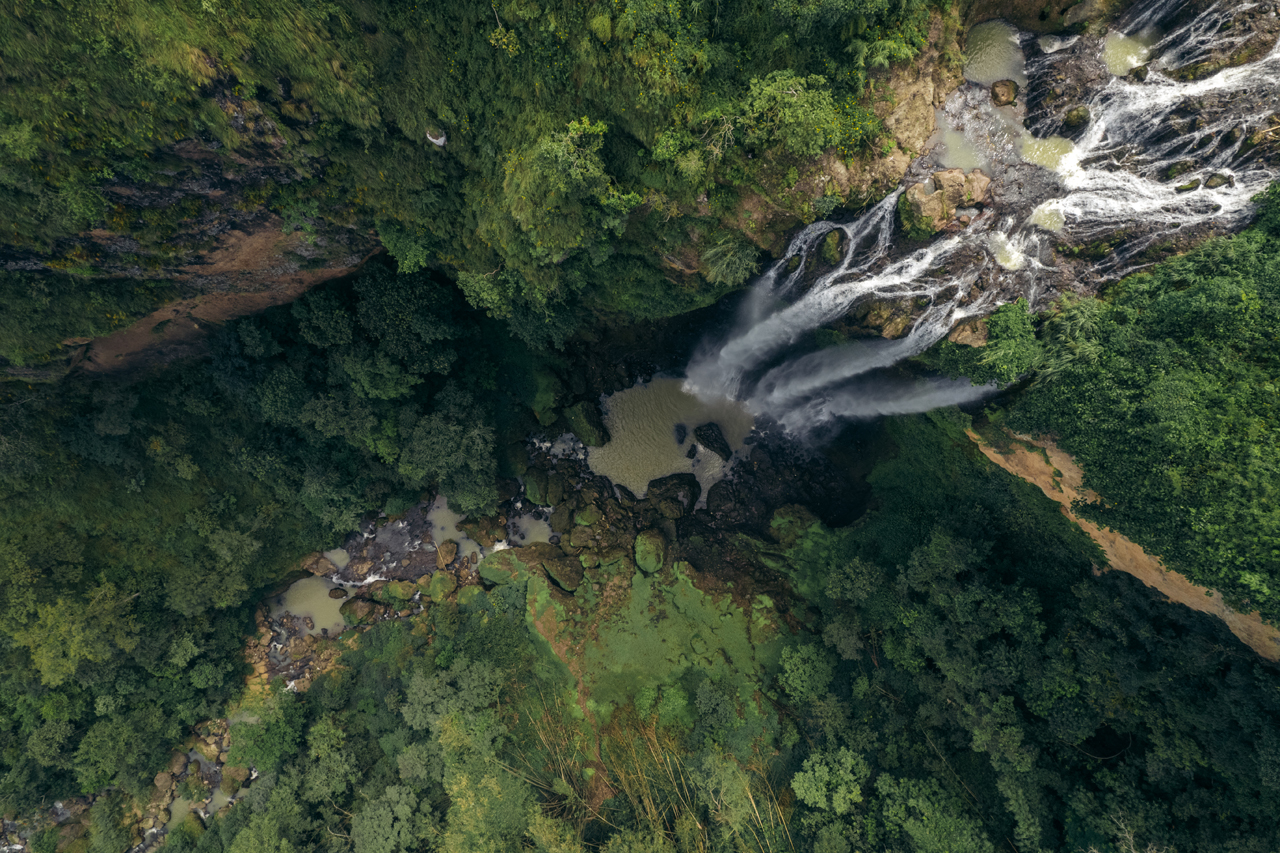
After that my last stop of the day, before Bira, a small beach village that makes a traditional boat style in Indonesia, The Pinisi.
This area is famous for building the boats. Quite interesting to see these being built here after seeing them in so many other areas in Indonesia.

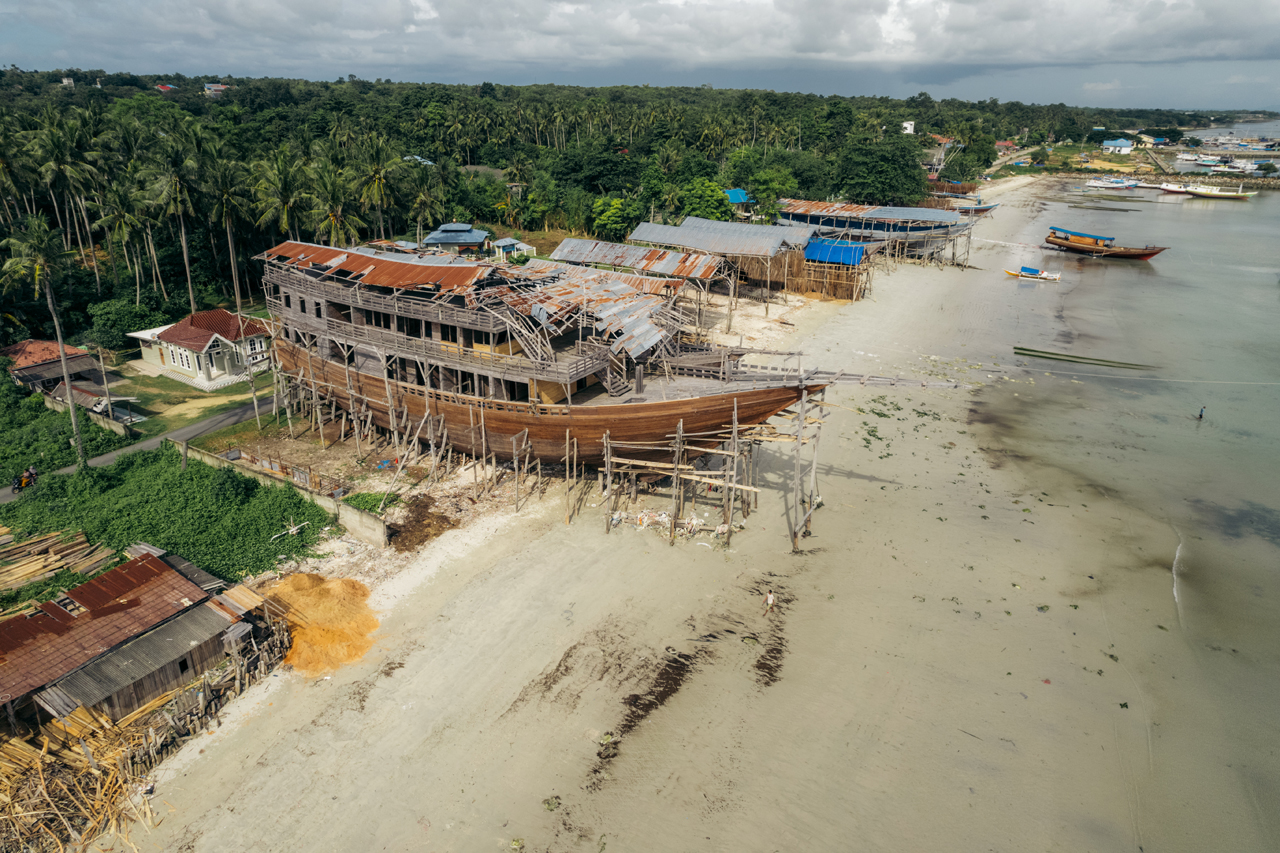

When I arrived in the Bira area, I decided to stay about 5km away from the main beach of Bira, in a “homestay” called Dego-Dego. I’d recommend staying there for a peaceful stay, with amazing views and close access to beautiful snorkeling opportunities.
Here’s what this place looks like from the sky. (Structures on the bottom of the photo)

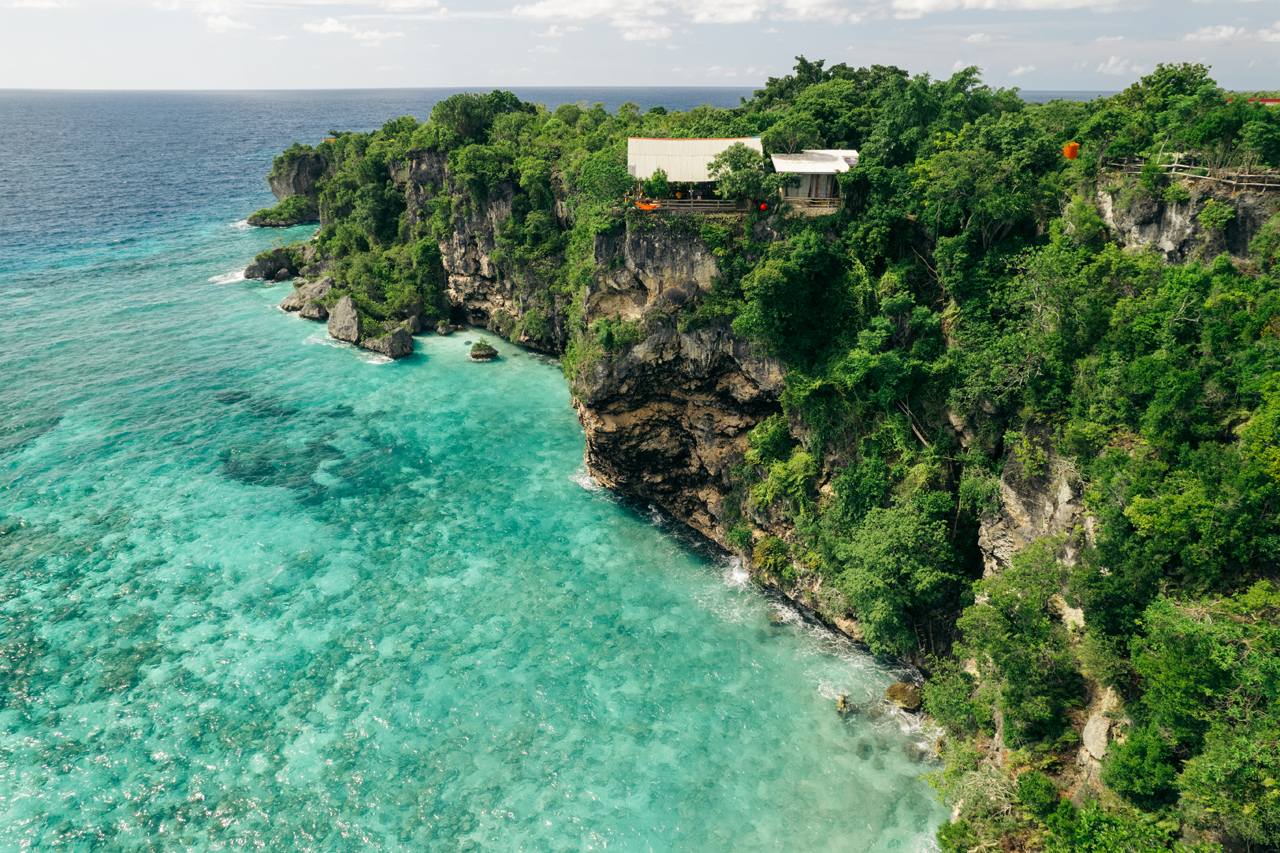
The view from the dining area is just amazing.

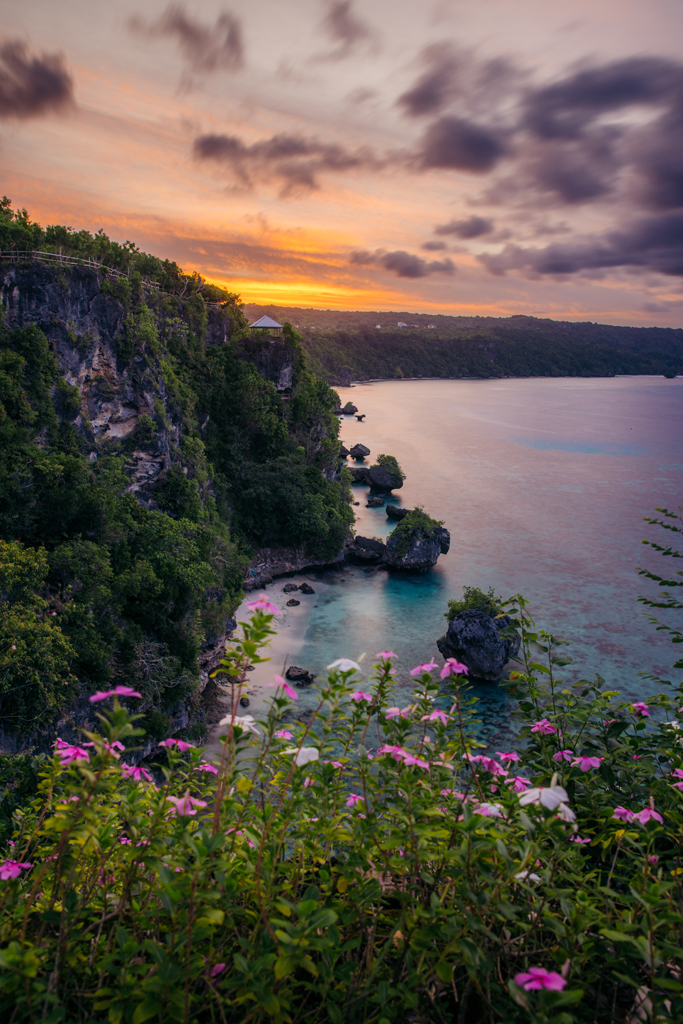
You can walk down the cliff to snorkel also. Quite the start to Sulawesi!

The water down at the main Bira Beach is amazingly clear, but I only went down there with my phone, here’s 3 photos with my phone.
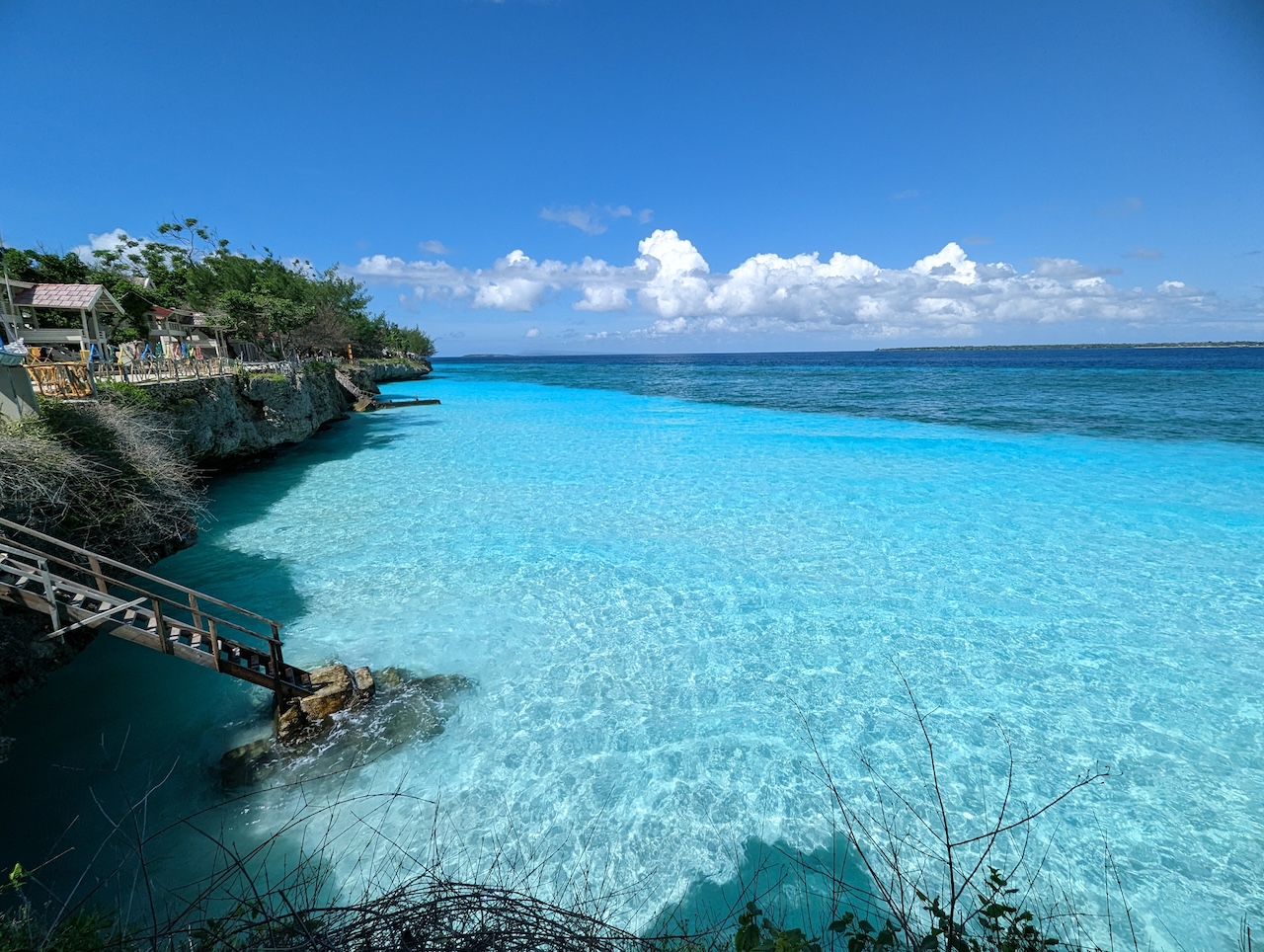
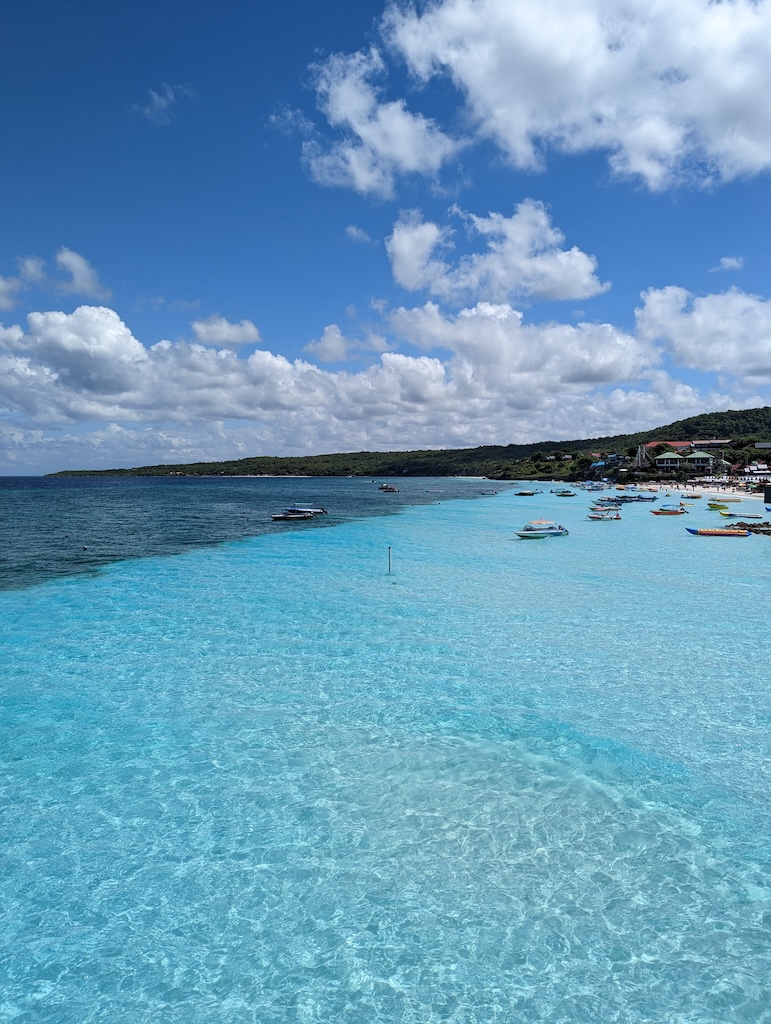
Never seen a mosque with a better view…

A few minutes further you can reach Bara, which is much more quiet. Amazing place.
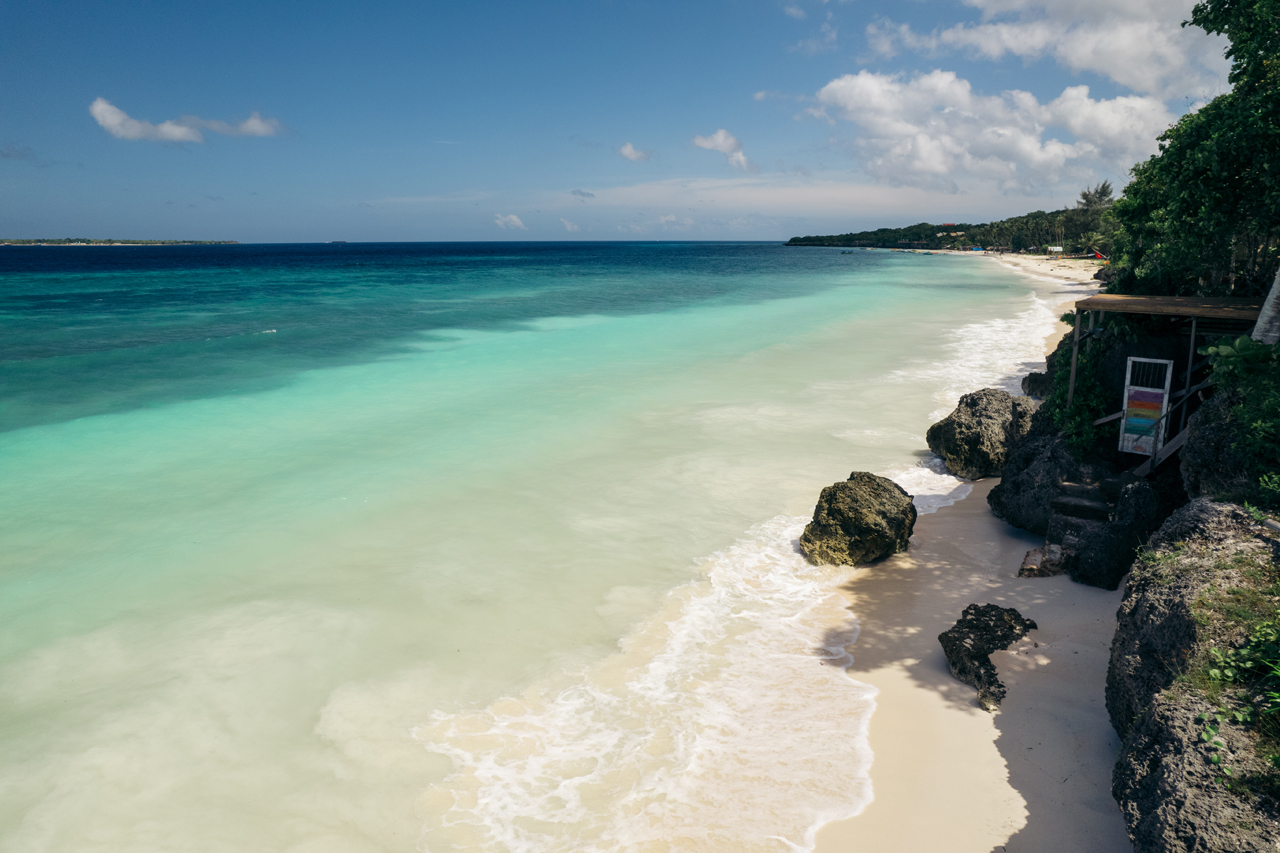
I found this empty piece of beach, there was am abandoned home on this land.

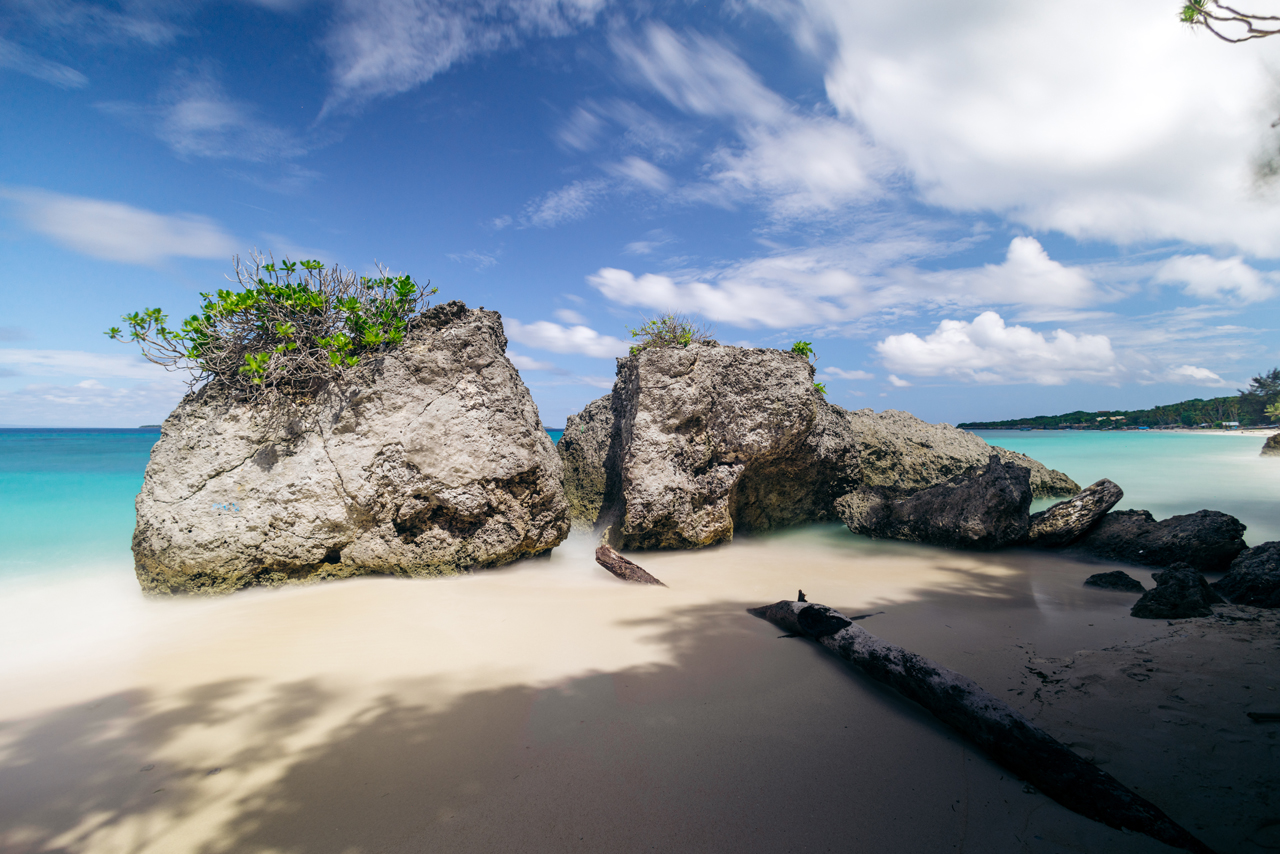
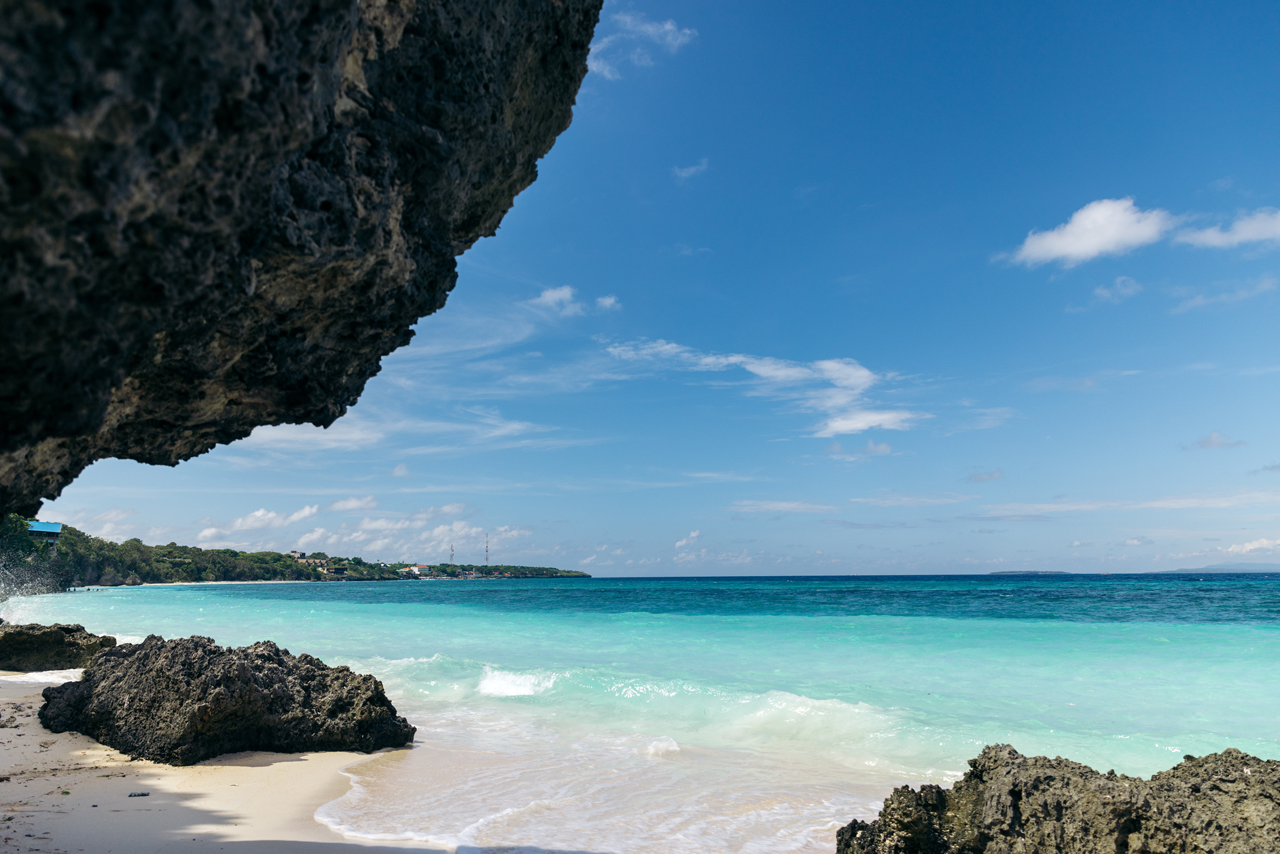
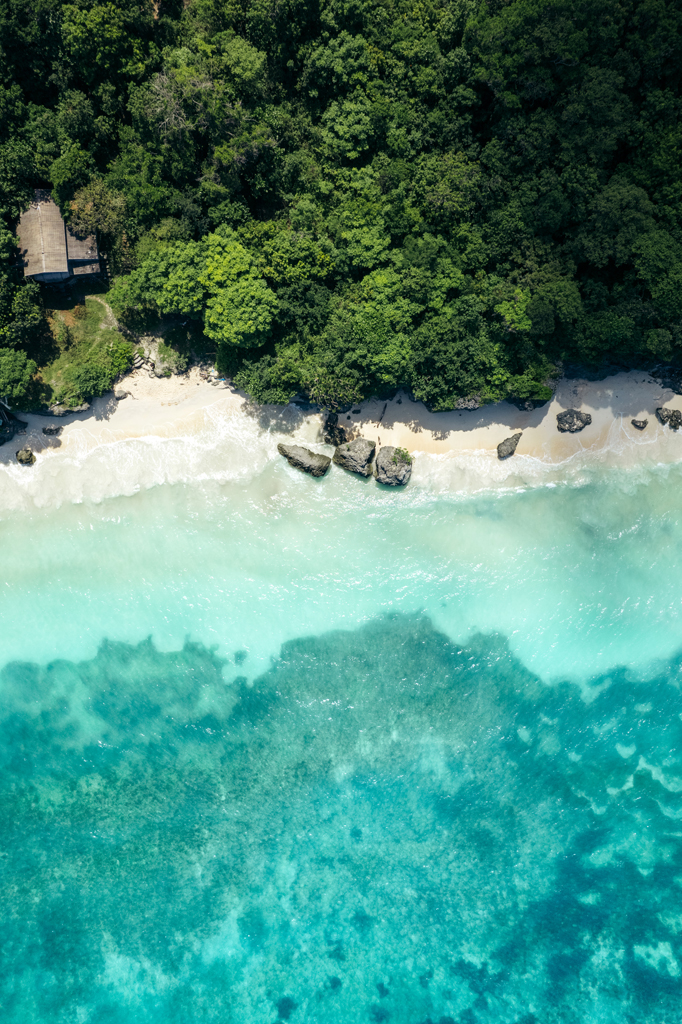
Unreal location.
For sunset, I went up to Tebing Apparalang, near my homestay. This is a tourist attraction with facilities to enjoy the views of the cliff and sea.

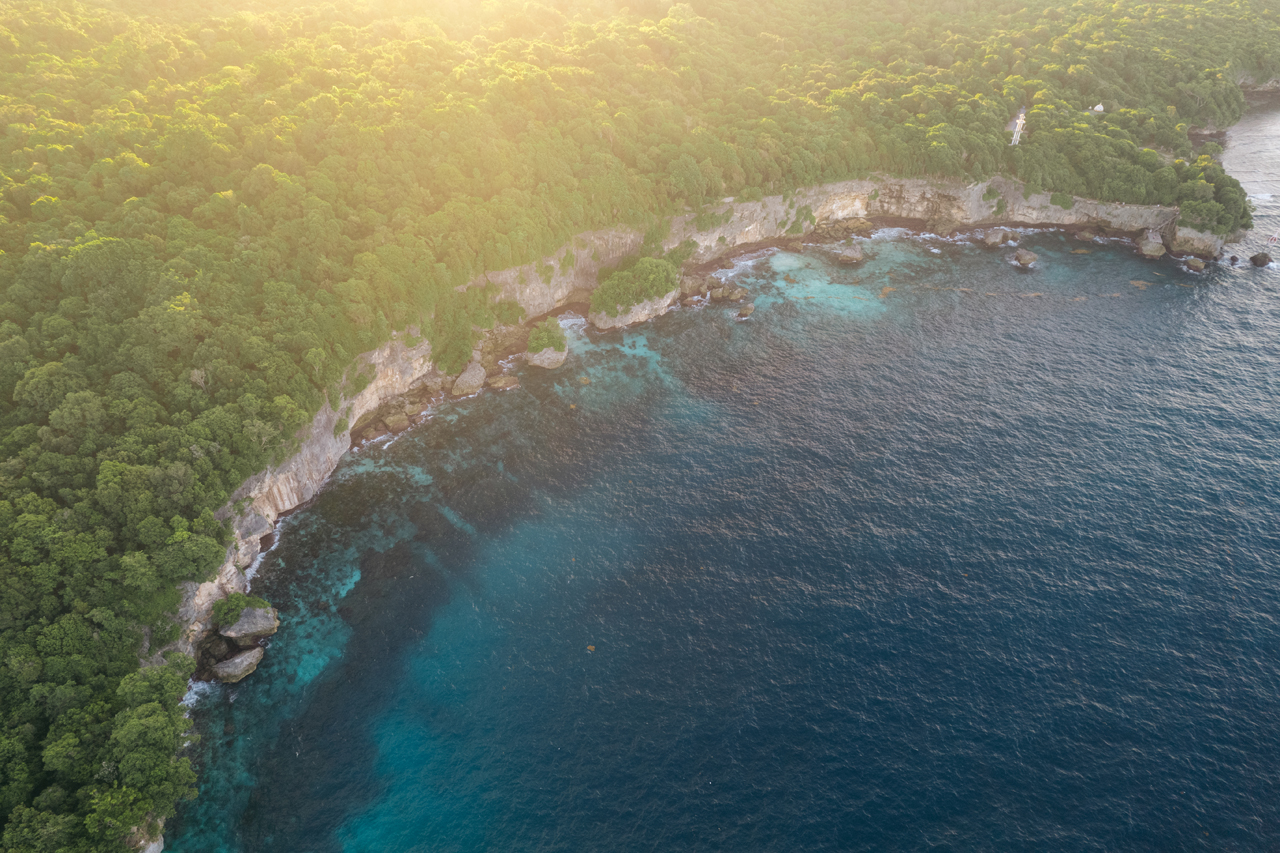
A lot of cheesy installations for photos, locals love this stuff.
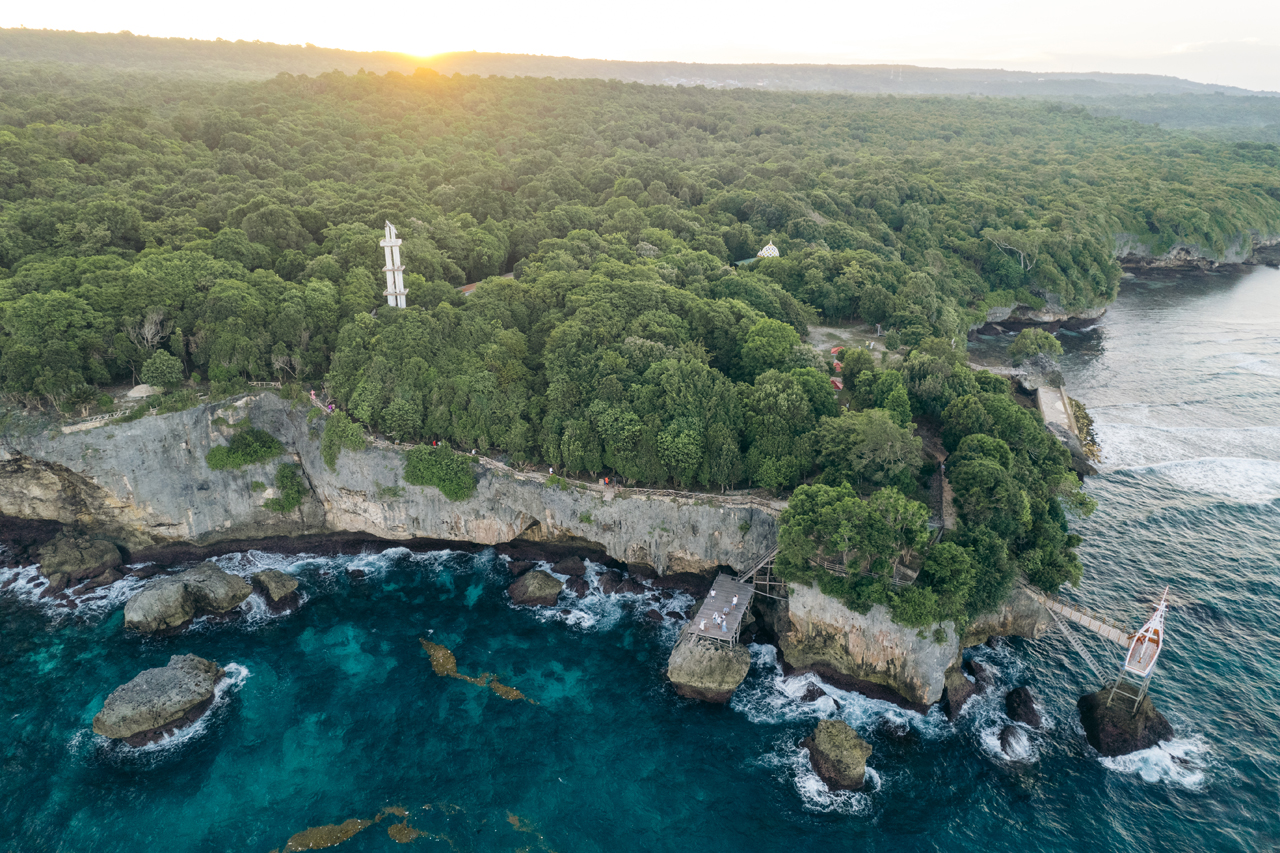
I rather focus on the natural aspect of this place. Again, the colors… unreal.
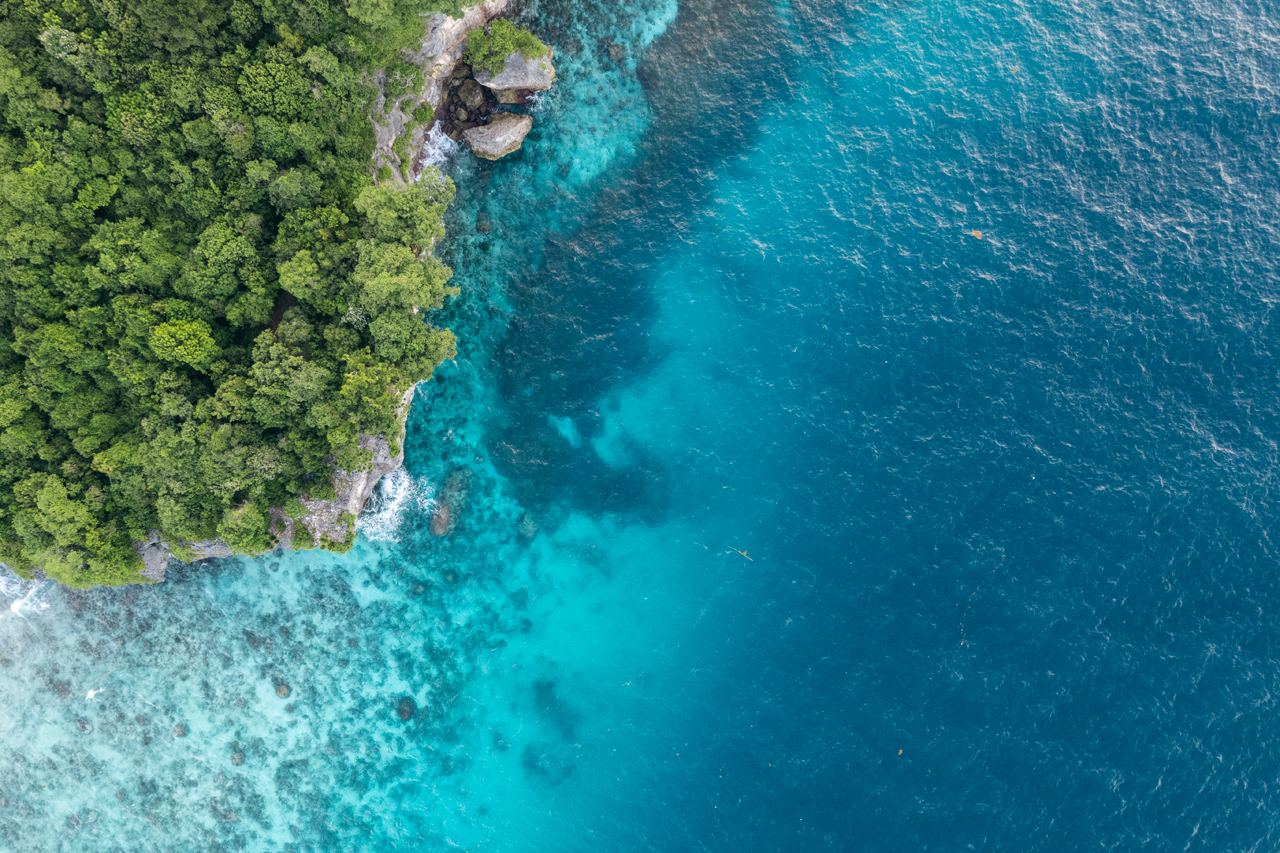
After 3 nights in this area, it was time to keep moving, little did I know this day would be pretty bad.
But before the bad part, I went up to another village I randomly found on Google Maps. It’s the Indigenous community of the Ammatoa people.
“The Ammatoa indigenous community is a traditional group that lives in the protected forest area of Kajang in Bulukumba Regency, South Sulawesi.”
There’s not much information about the people of the Ammatoa indigenous community such as where and how they live, but I was told I couldn’t bring my phone, camera, or other electronics into the village, I was also told to wear dark/black clothes to be able to walk around the village. The other thing I heard was you can’t wear any type of shoe/flip flop to go into the village.
When I got there, most of it was true, the only surprise I learned when I arrived at the entrance of the village was that they allowed me to use my phone. I left my stuff at the welcome center, also was given a sarong and hat to look like a villager.
The walk barefoot on the rocks that lead up to the village is quite arduous.

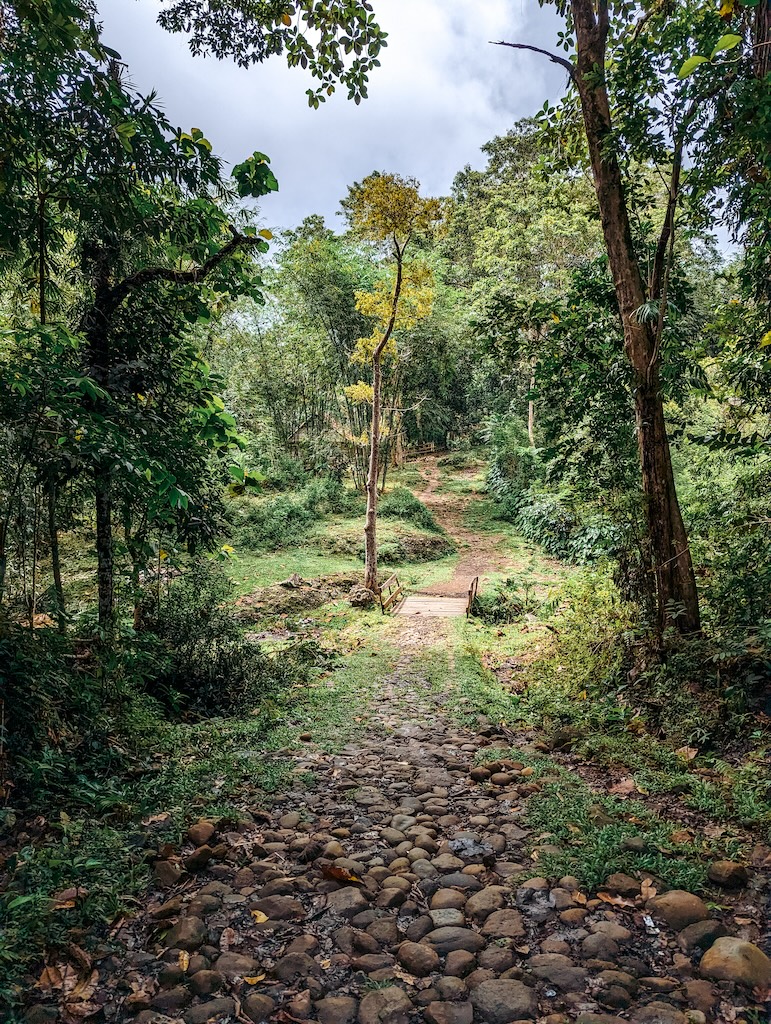
The villagers don’t like being photographed or filmed, but I had some friendly interaction with a few residents.


There’s no electricity and shoes are not allowed but the bra seems to be trendy.

The sad thing about this village is surely the lack of garbage management, hopefully one day they’ll fix this issue… here are a few more photos.
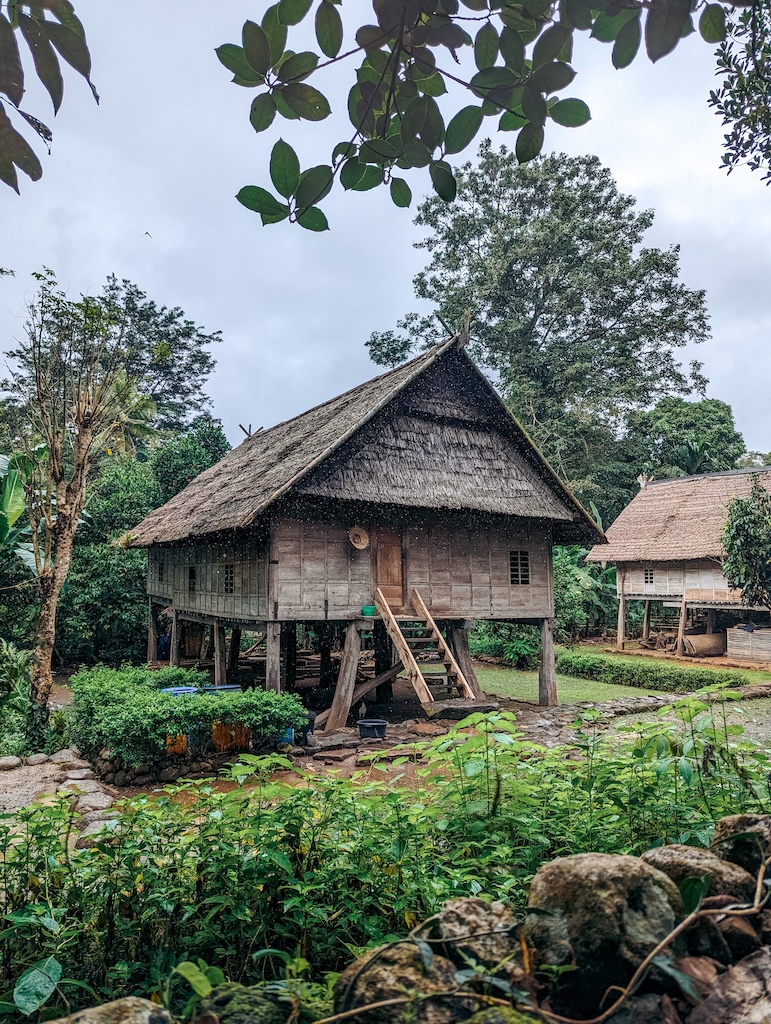
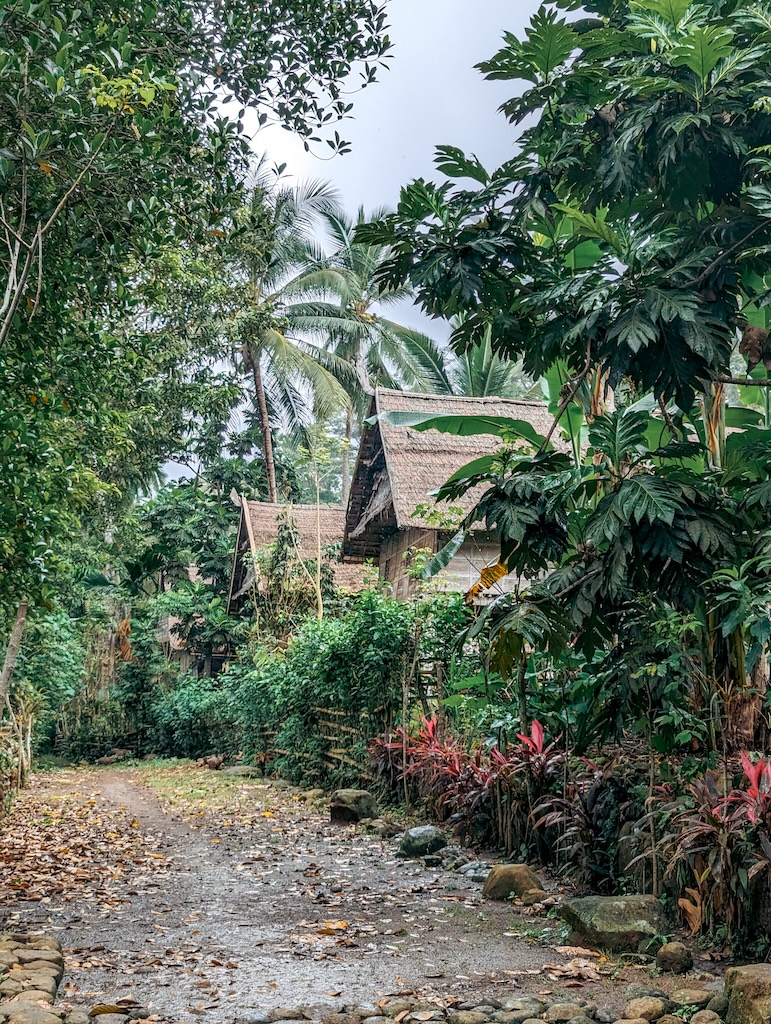
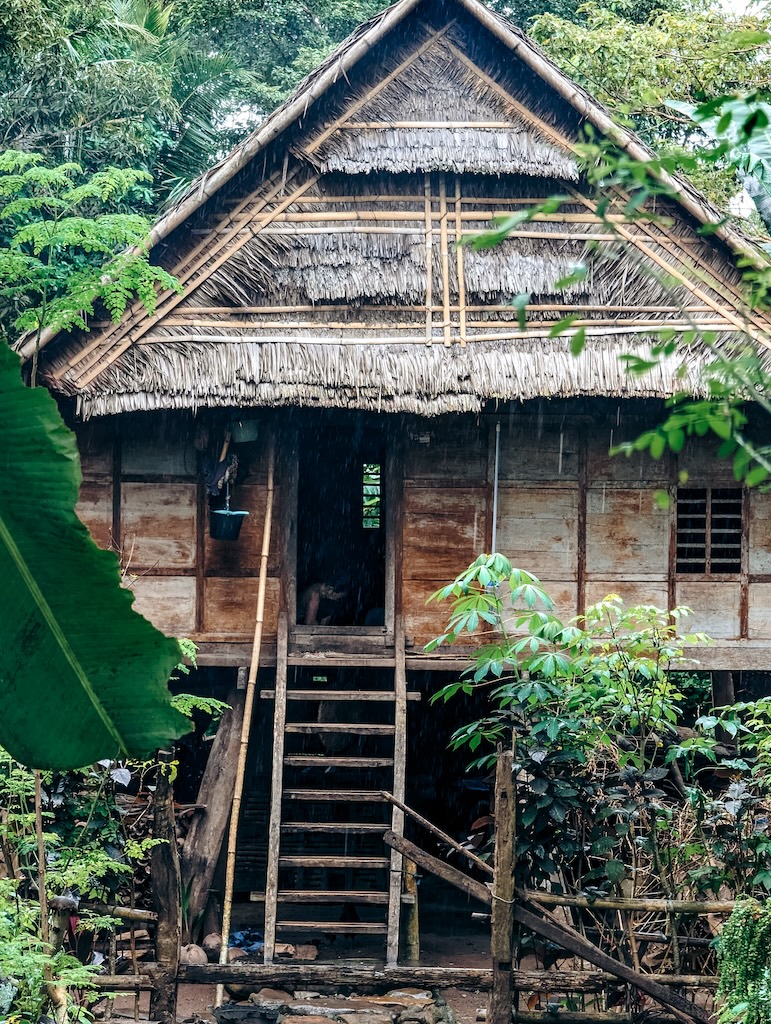
The cemetery of the village.
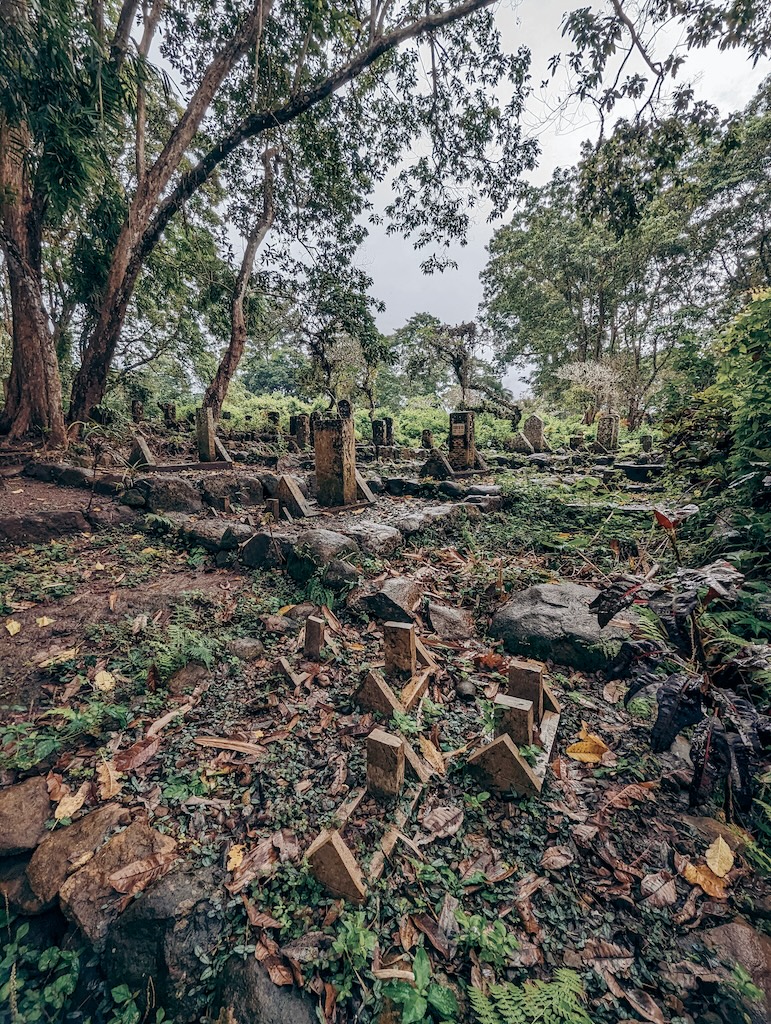
After this, I planned to head to Malino, a small town in the hills of South Sulawesi.
Here’s a few photos along the way
.
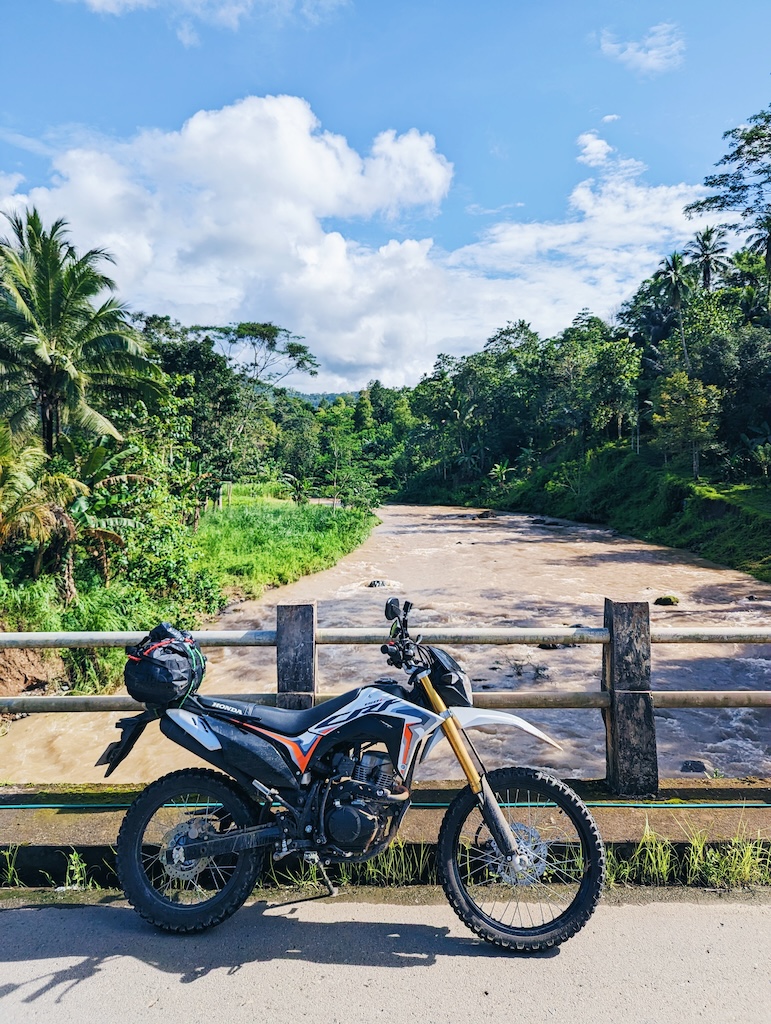
I rod about 45 minutes after this stop and this was when shit hit the fan, my first motorcycle accident.
A car turned into my lane and it’s tire hit my brake pedal/foot. Opening a deep cut between two of my toes.
Here’s the video, I don’t usually film my rides but I got a GoPro for this trip in Sulawesi.
After the stop at the hospital, I got a room in town, Sinjai, which is where I ended up after the accident. The hotel options were very limited and what seemed like the best option was a room without windows, no toilet sink, no space to sit normally on the toilet, and no hot water.
Not the best place when you are trying to heal up after an accident. Pretty depressing.
The room: (sorry for the horribly blurry photo)
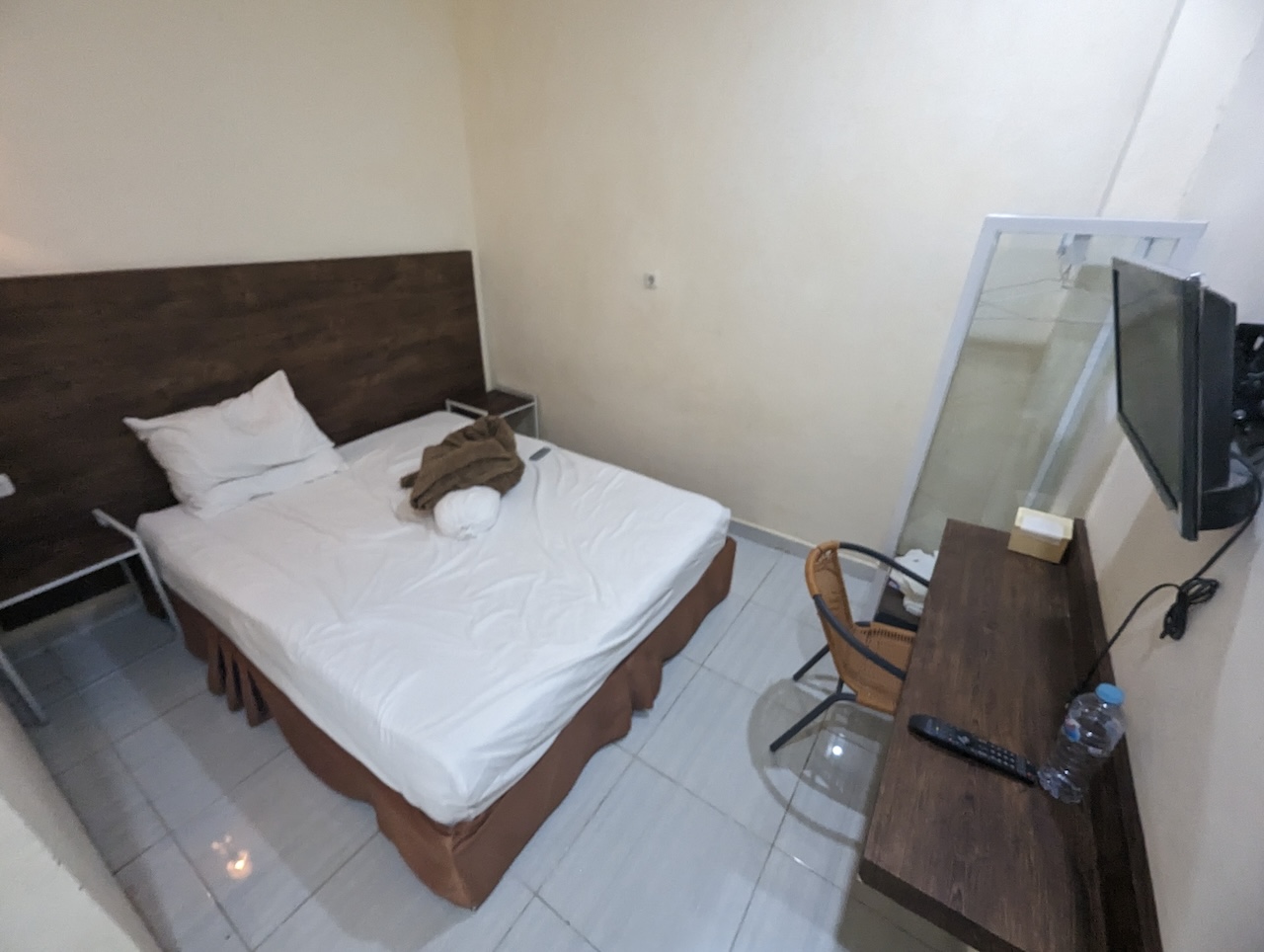
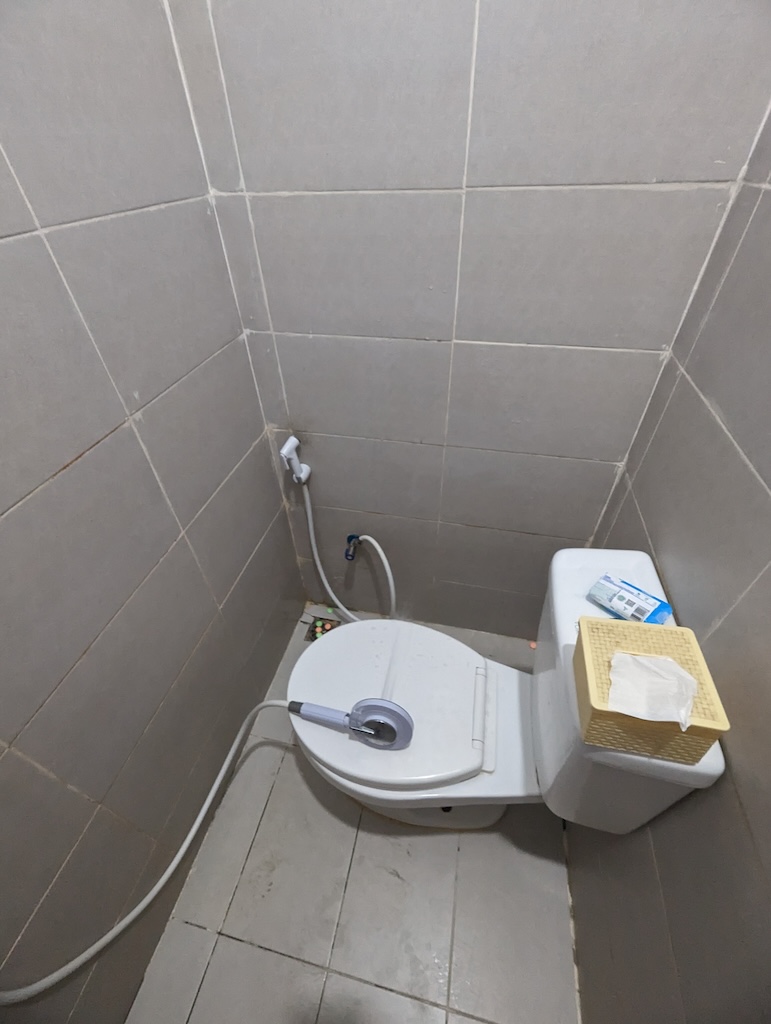
Just living the dream!

After 3 nights I was getting really low-spirited in that room and town, I decided I would drive back to Makassar, even though I could barely walk, I was able to ride the bike, using my heel to use the rear brake (bent) pedal, but first I had to get my bandage changed.
I was quite the attraction at the clinic when I showed up for the bandage change.
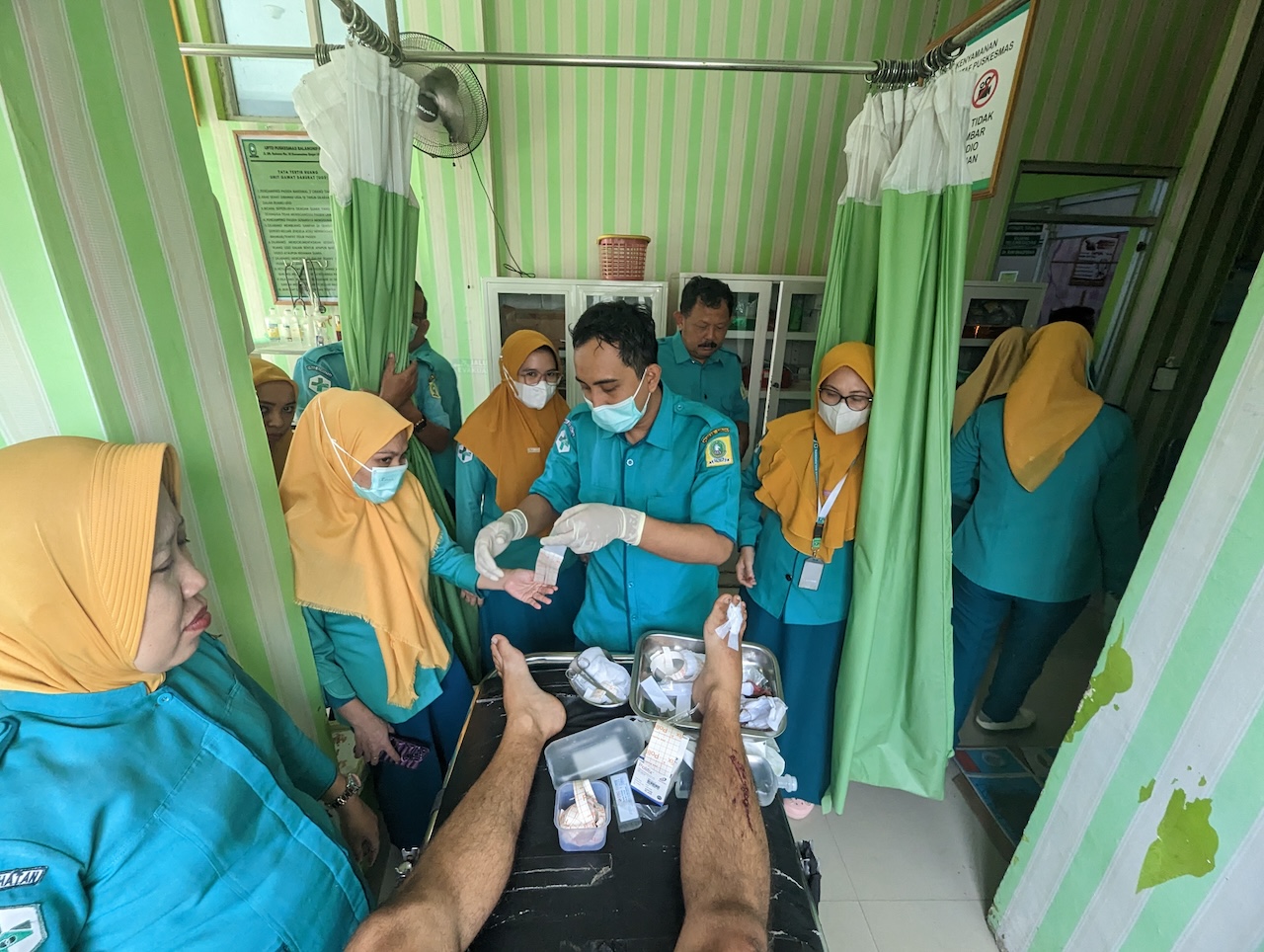
After the bandage change, I was able to drive all the way to Makassar in one go! But I did stop along the way for some photos.



I went back to Makassar and stayed in a hotel, with a nice window and all the standard amenities one would expect in a hotel room.

About a week moving to Makassar I decided I would need to leave Indonesia, I still couldn’t walk properly yet and I could see I would lose too many days on my visa and wouldn’t be able to make the road trip I wanted to do in just ~30 days. At this point, I left before I was well to rest in Kuala Lumpur and not do a super quick visa run.
So 11 days after the accident, I flew to Kuala Lumpur. I left my bike at Ge JacMart Homestay, when I first arrived in Makassar I stayed there. Very nice people and a beautiful place.
Anyway, after almost two weeks in Kuala Lumpur, I finally felt like I could get back on the road and be able to enjoy my trip. In total I lost 25 days with this ordeal, it’s not so bad considering the situation.
The bike was mostly fine, it only needed a new brake pedal, and the luggage rack needed to be resoldered.
So I was ready to keep going the day after I landed back in Makassar.
Let’s goooooo! First stop Rammang Rammang Karst Village!
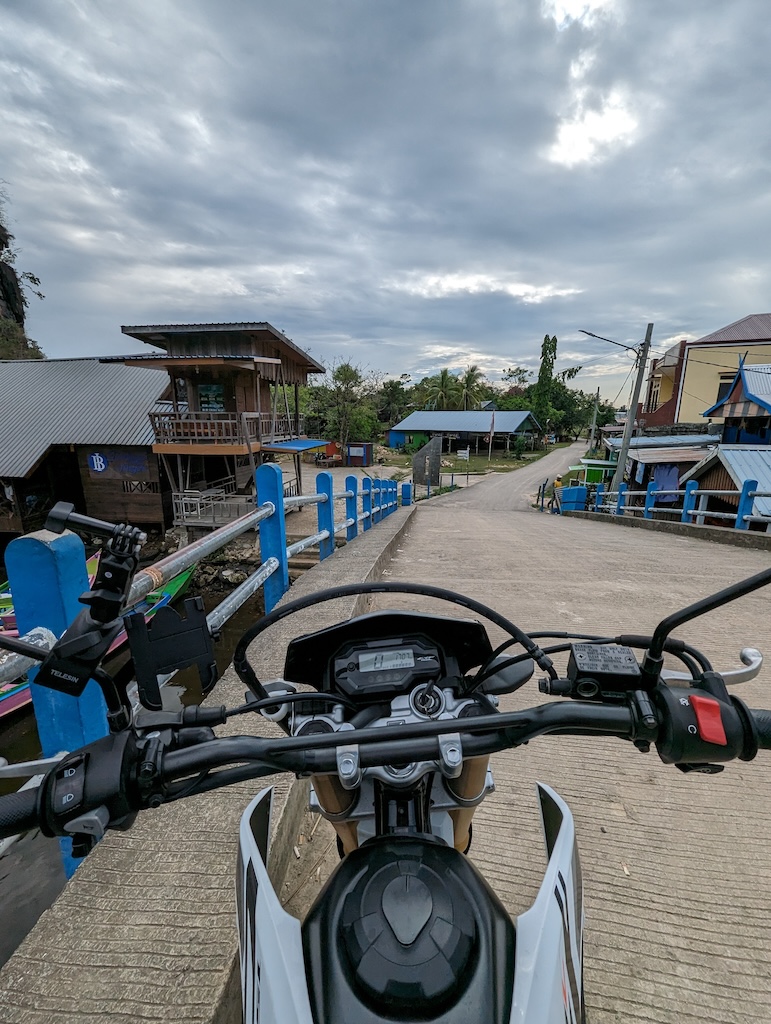
The drive from Makassar to Rammang Rammang is quick and easy, taking just a little over an hour before you arrive at this magical place. Initially, I was skeptical about how authentic this destination would be because of its proximity to the biggest city on the island, Makassar.
To reach the “live museum” part of this attraction you have to ride a little boat to get to a village that has been preserved in old traditions.
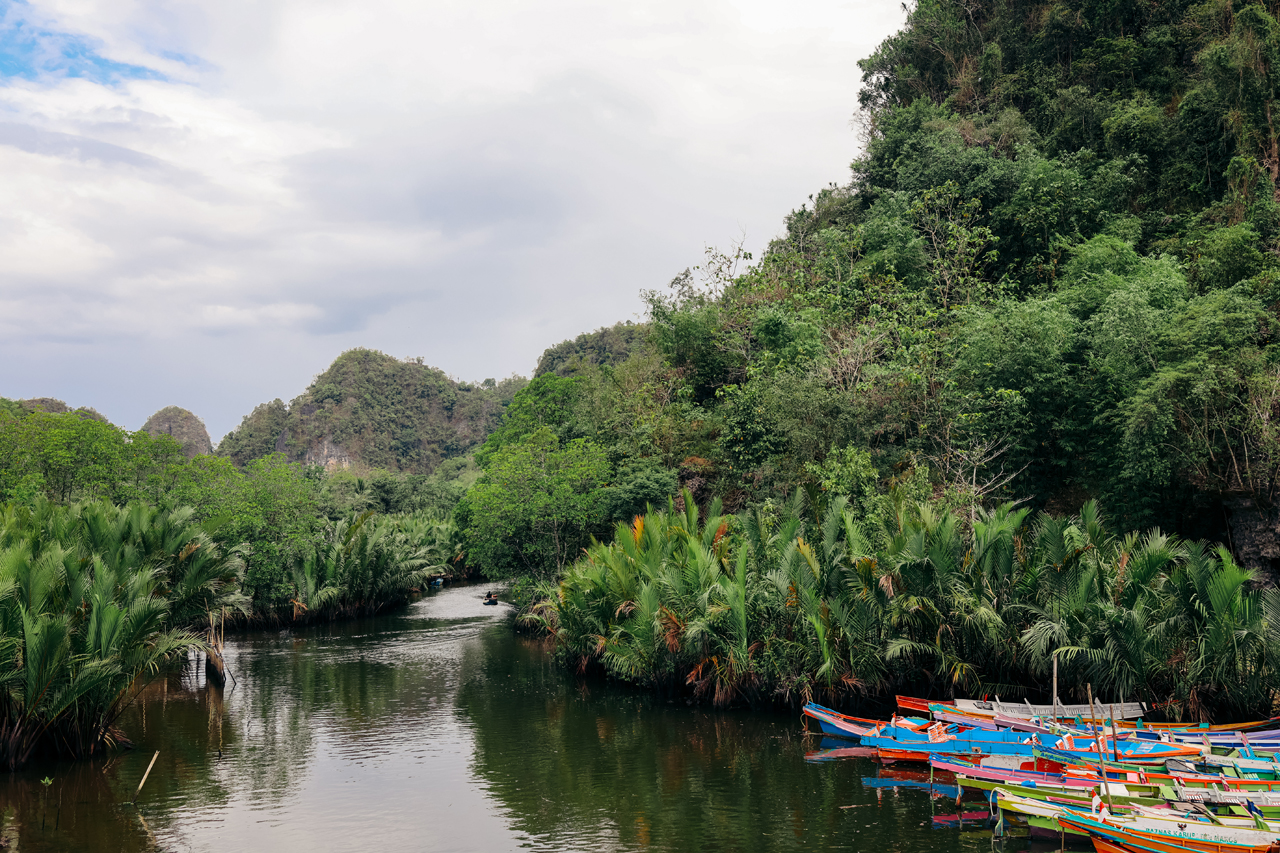
But first I will ride and walk around the area reachable by road. I stayed at Nasrul House Homestay.
Here are some photos from the area.
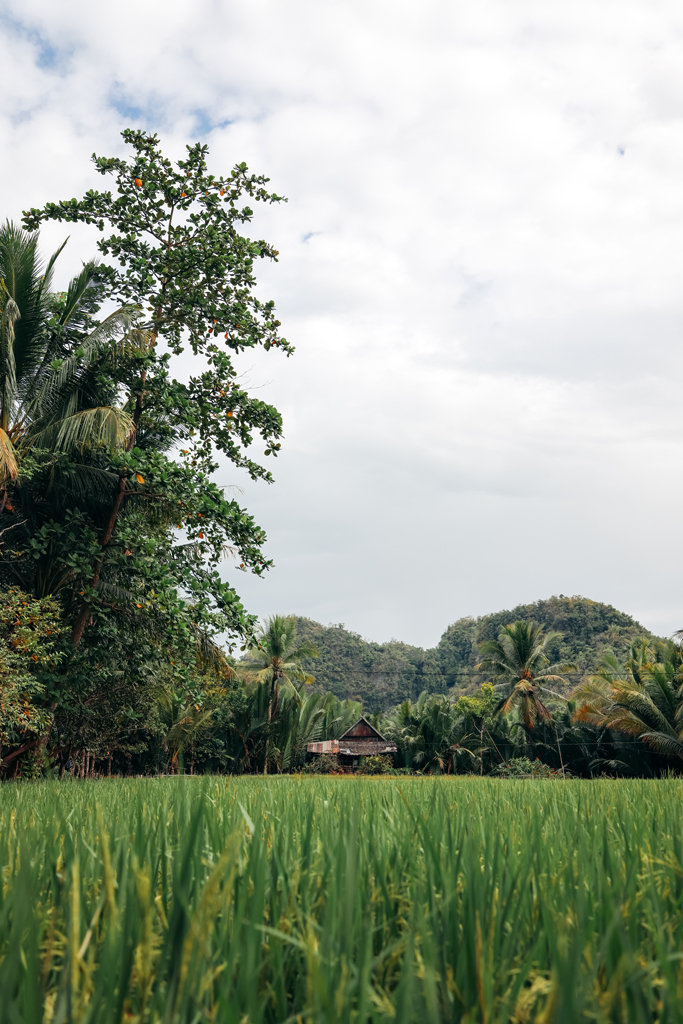
This is part of the “stone forest”:
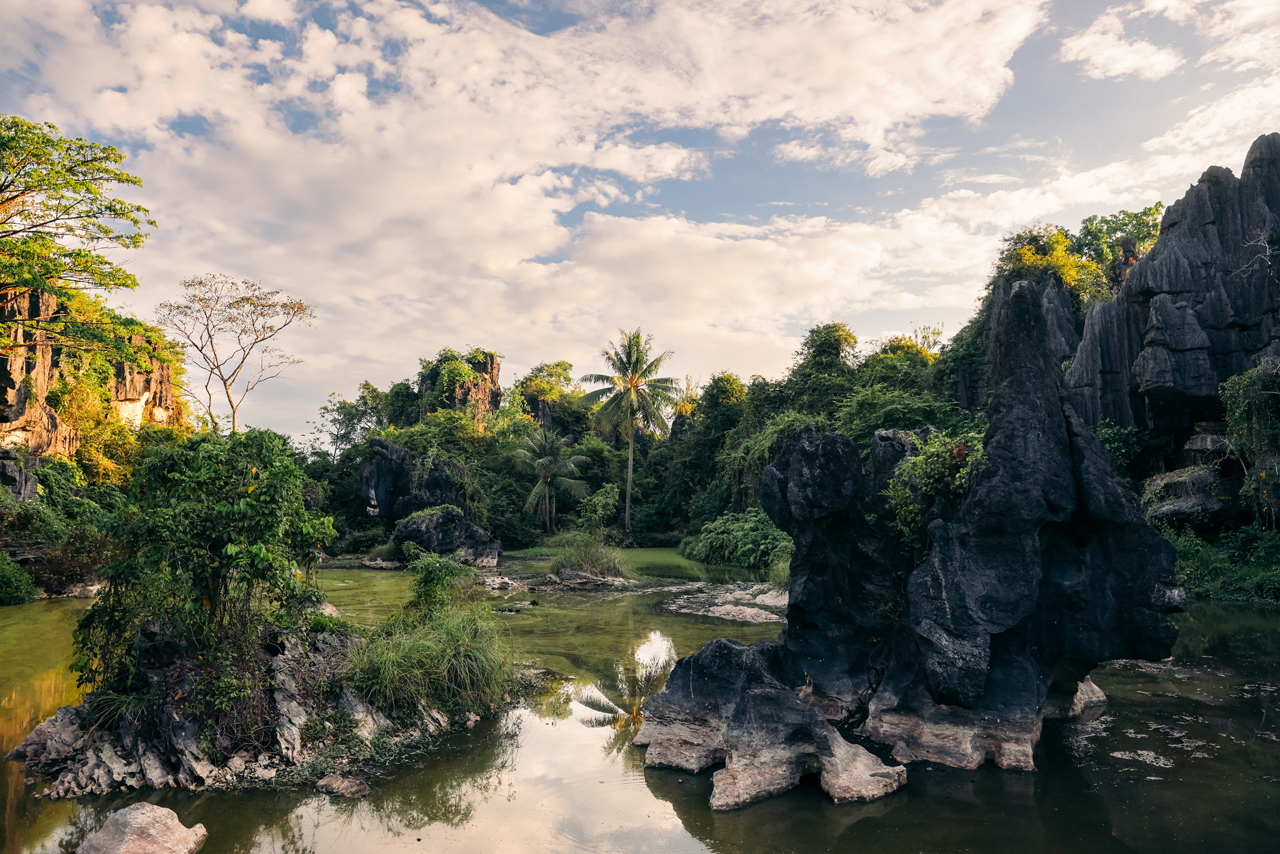
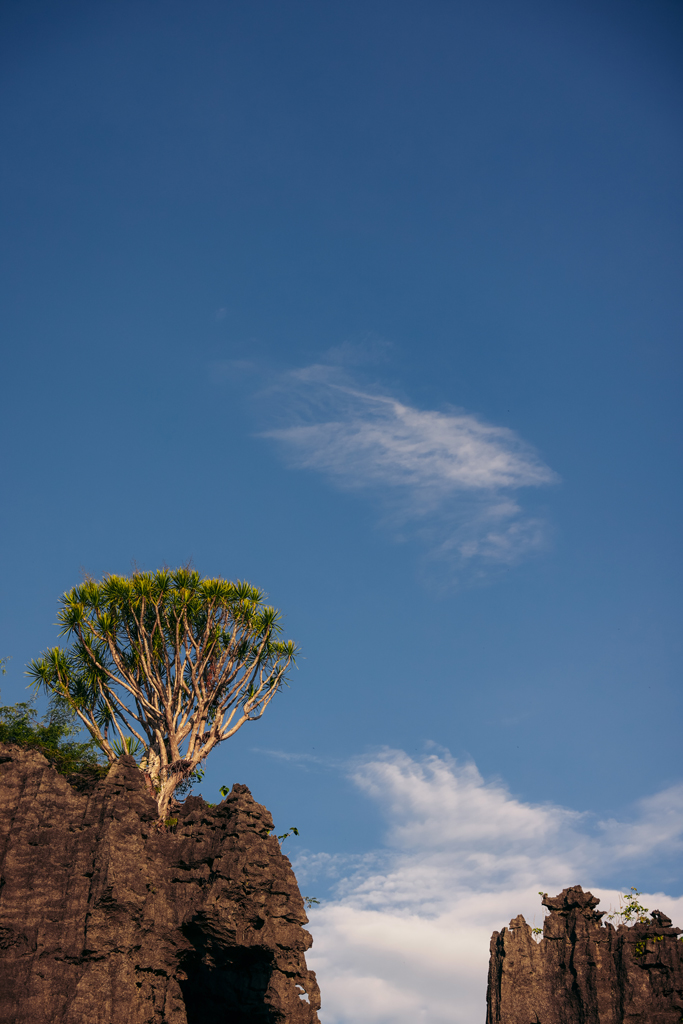
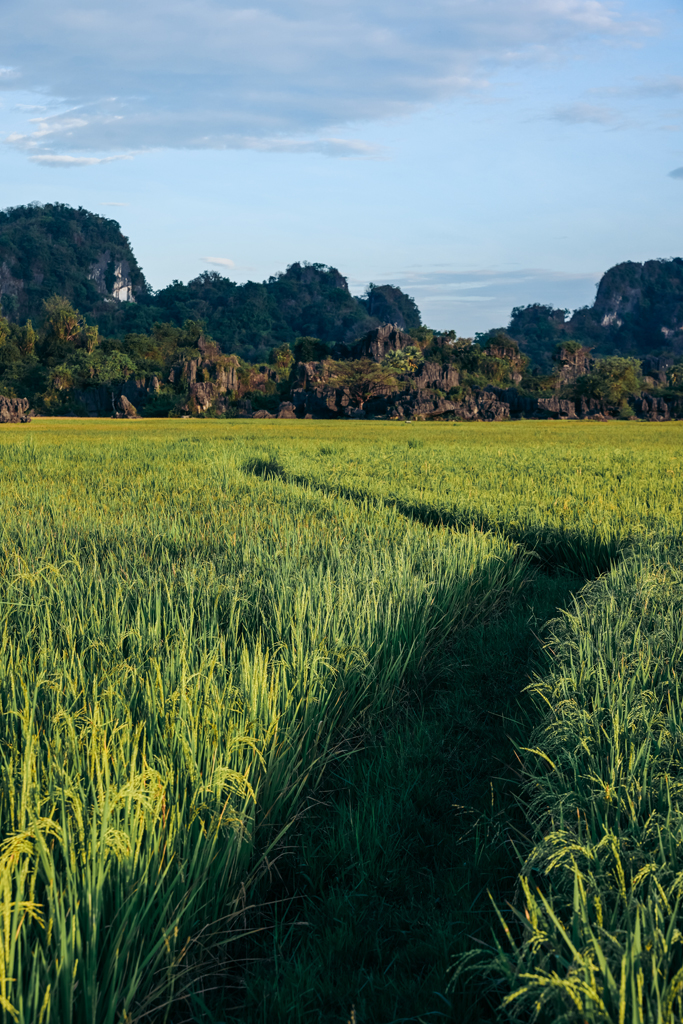
The bike modeling 😉
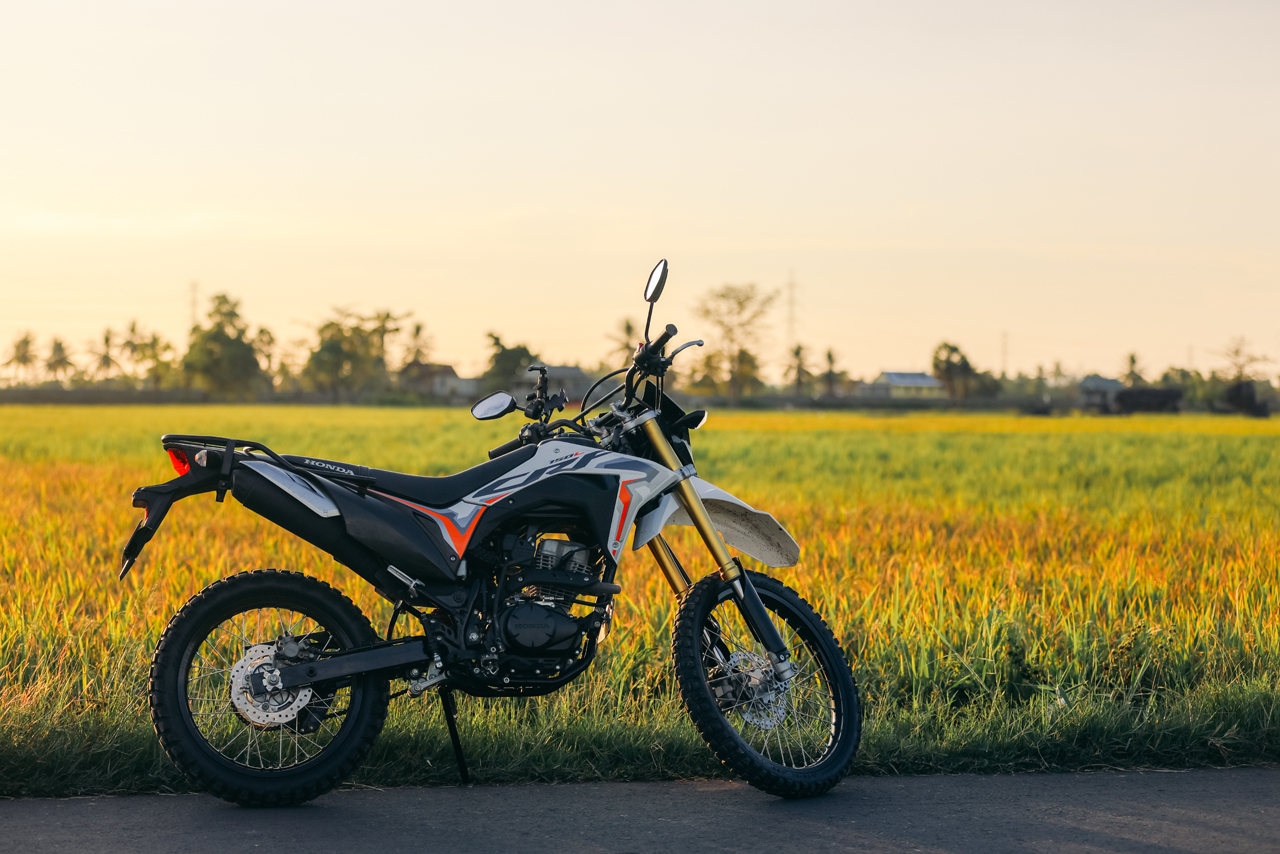

The local homes are very pretty.
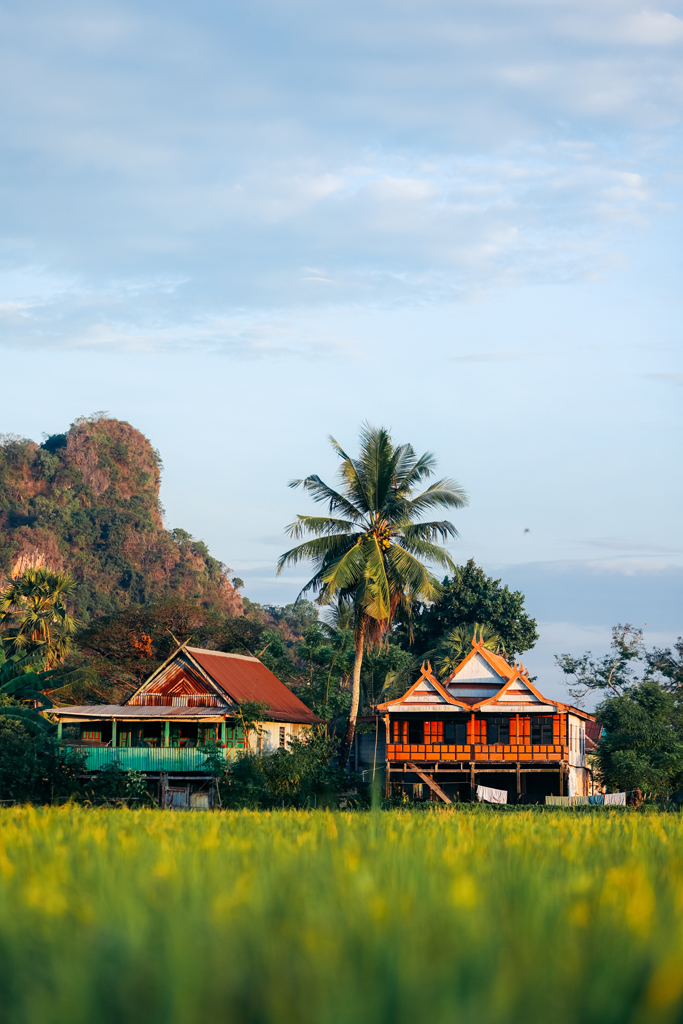

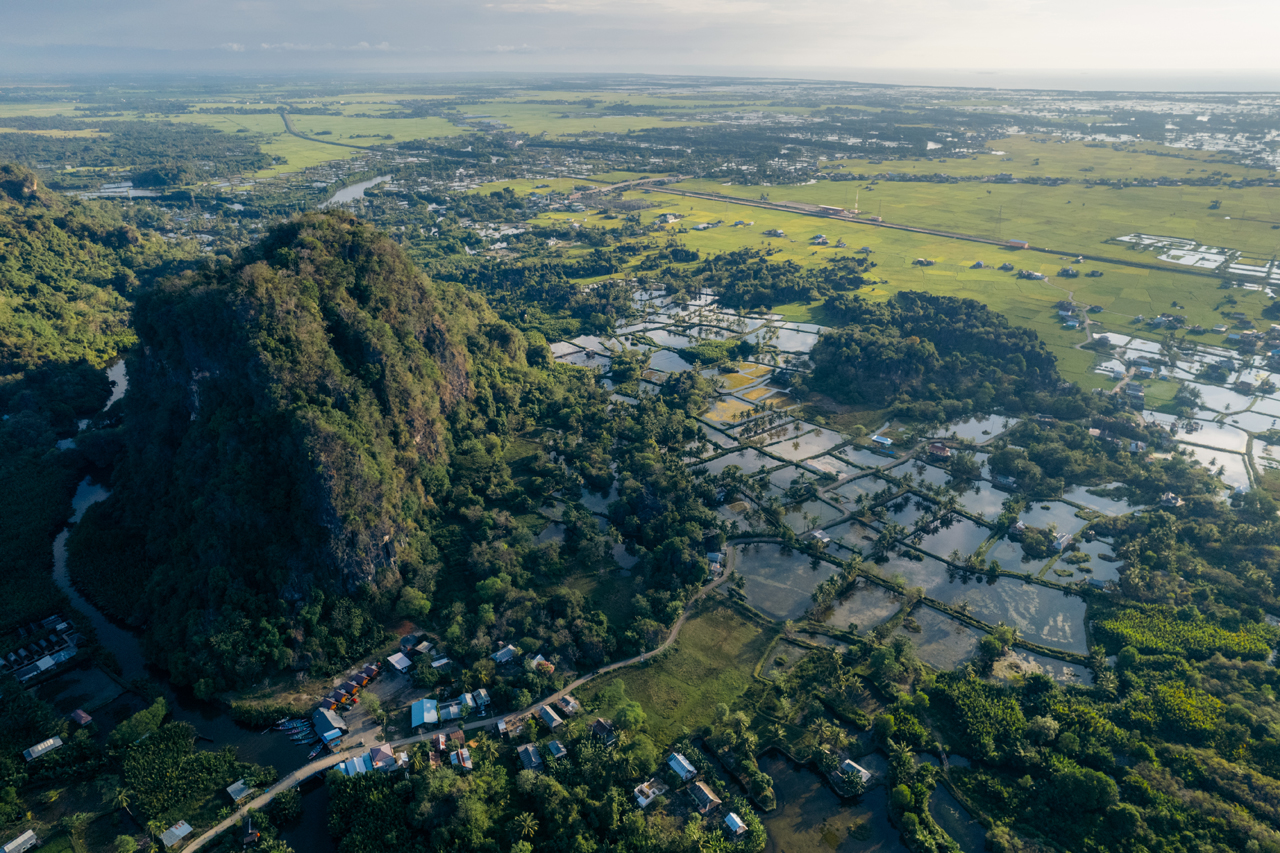
The next day I took the boat to visit the “other” village, “Kampung Berua”. There is a “secret path” to walk to the village but I took the boat ride, the boat is 200k for 1 or 2 people.
A little pricey but after bringing you to the village the captain will also bring you around to other spots.
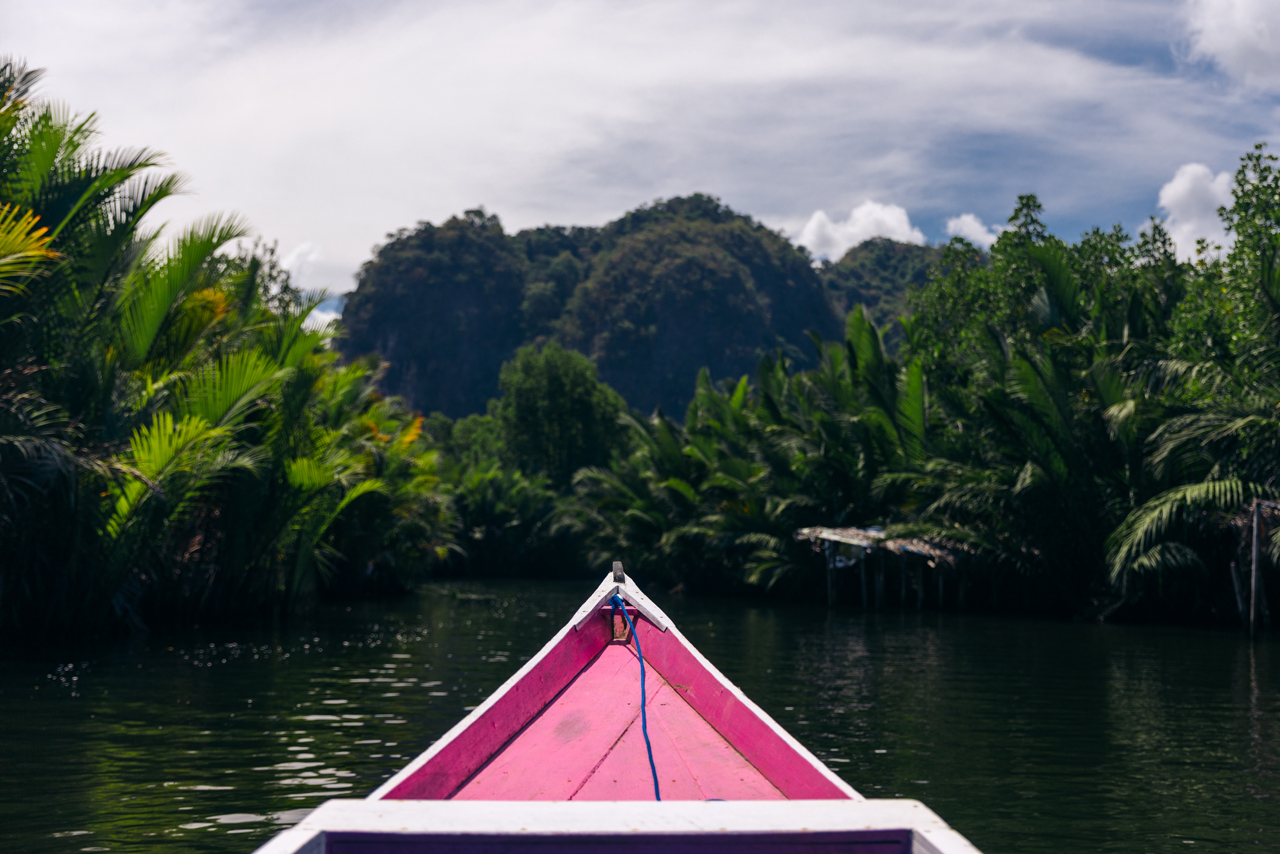
The river is in the middle of these palm trees, very nice to be on the boat and enjoy the scenery:

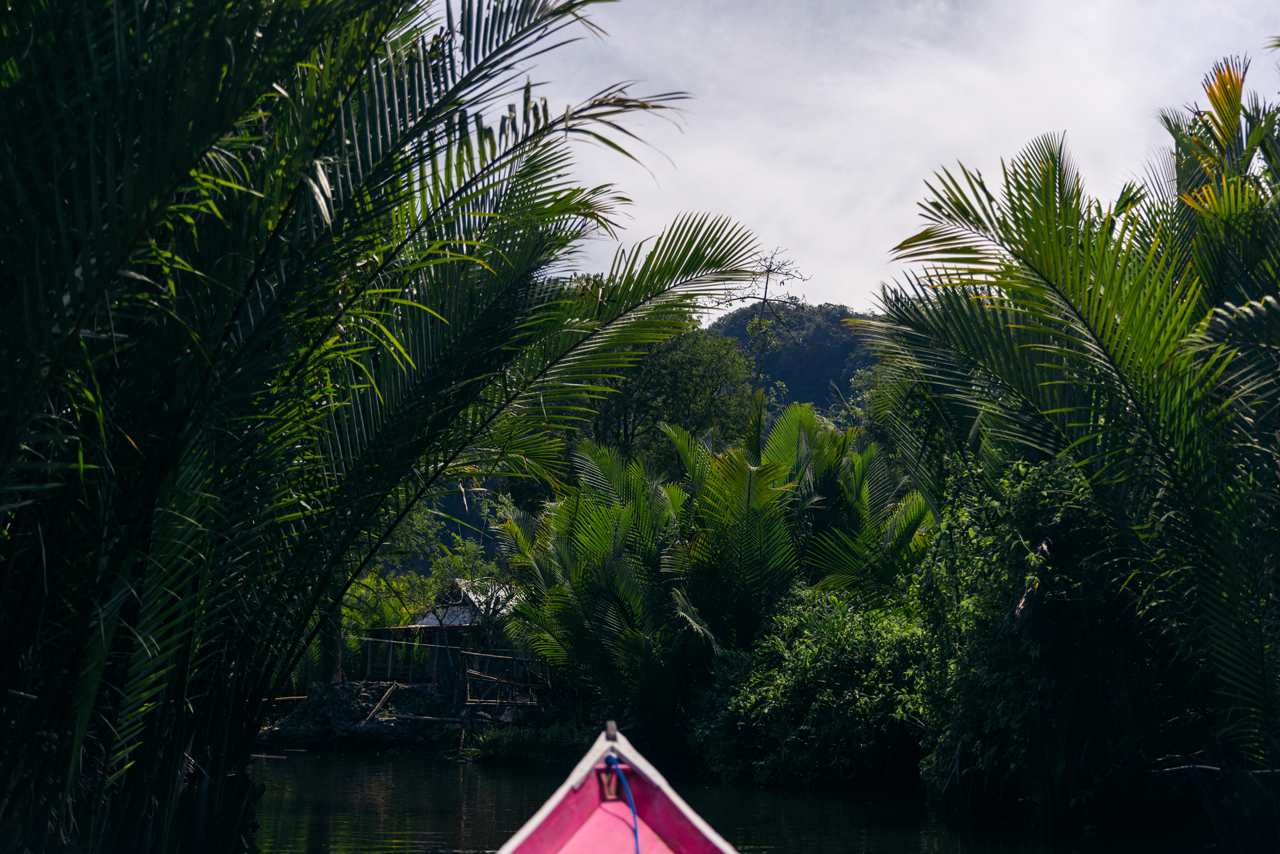
There’s quite the big sign when you arrive at the village.
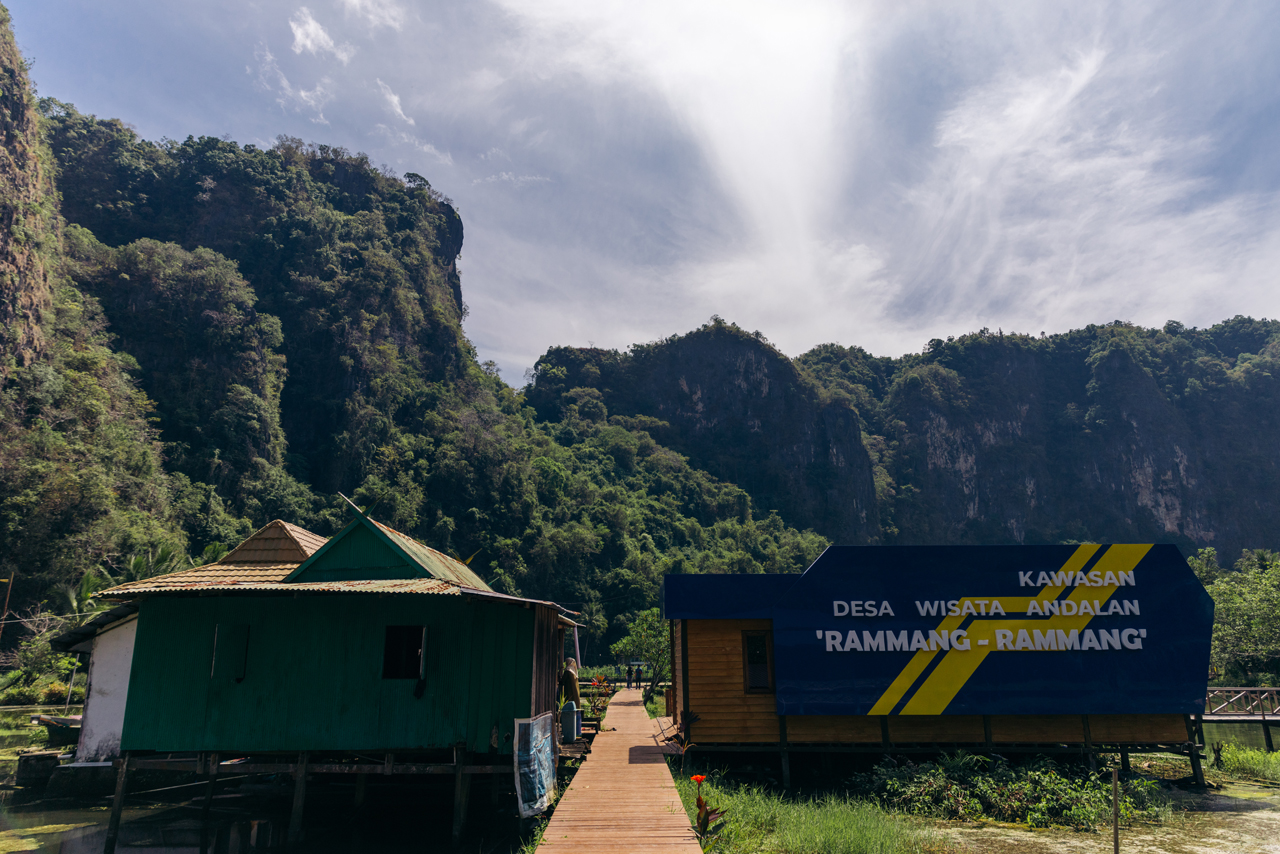
I was there on a Thursday, which is probably a little bit more quiet than the weekends but it was very peaceful for me, just a few other people and it’s a very spacious place you can walk around and find your own spaces to enjoy this picturesque place.


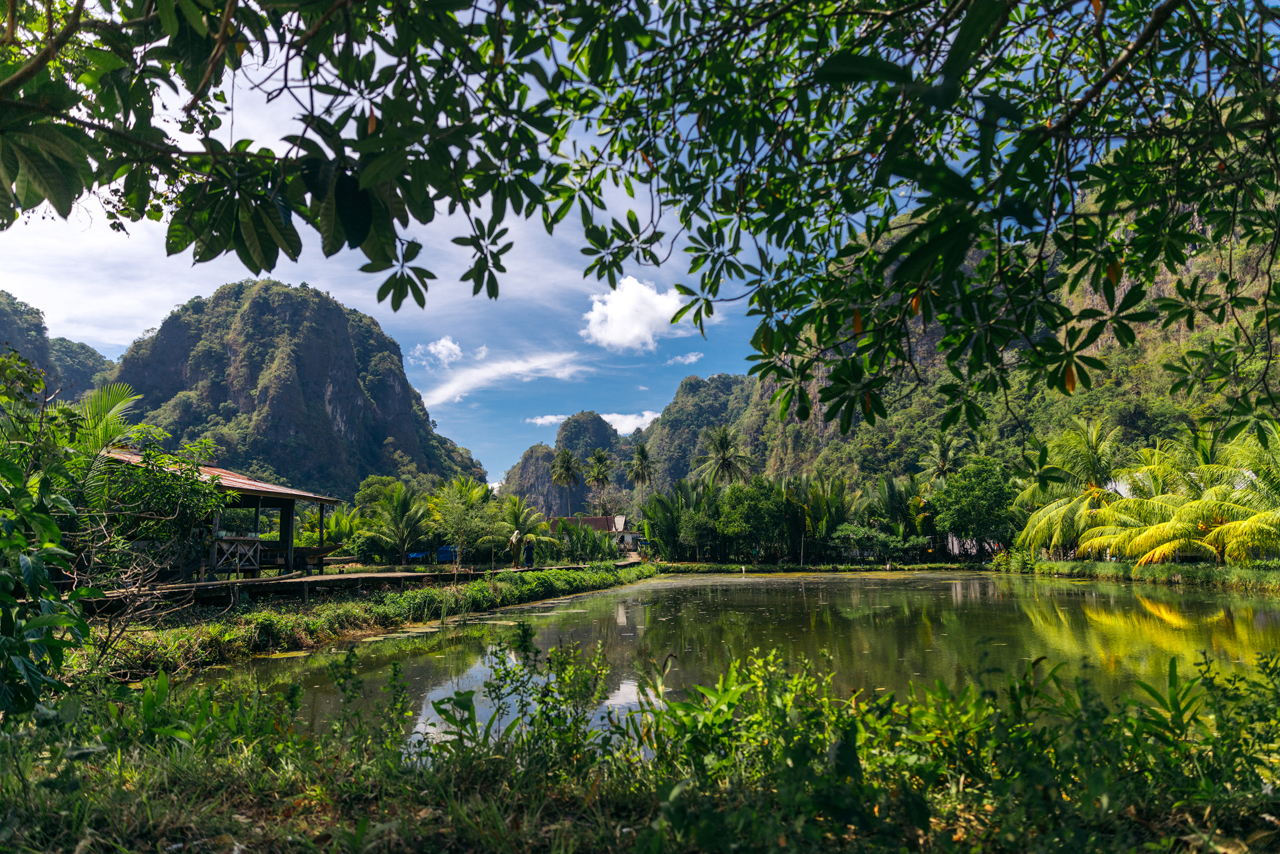
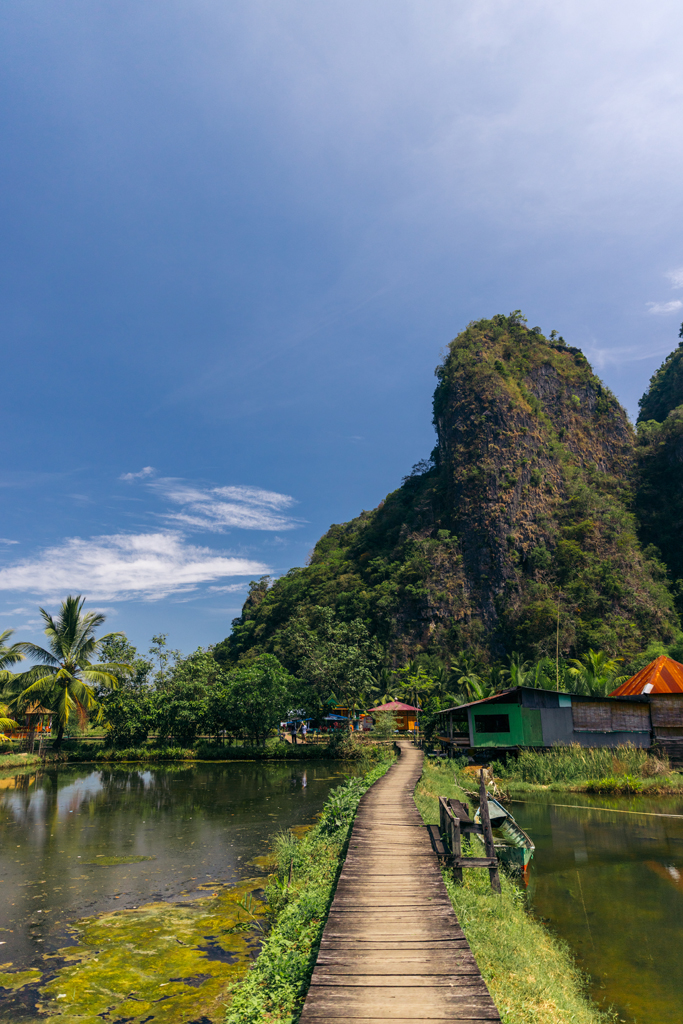
Stop a bit further in these huts to have a coconut and chit-chat with my limited Indonesian. Very friendly locals.

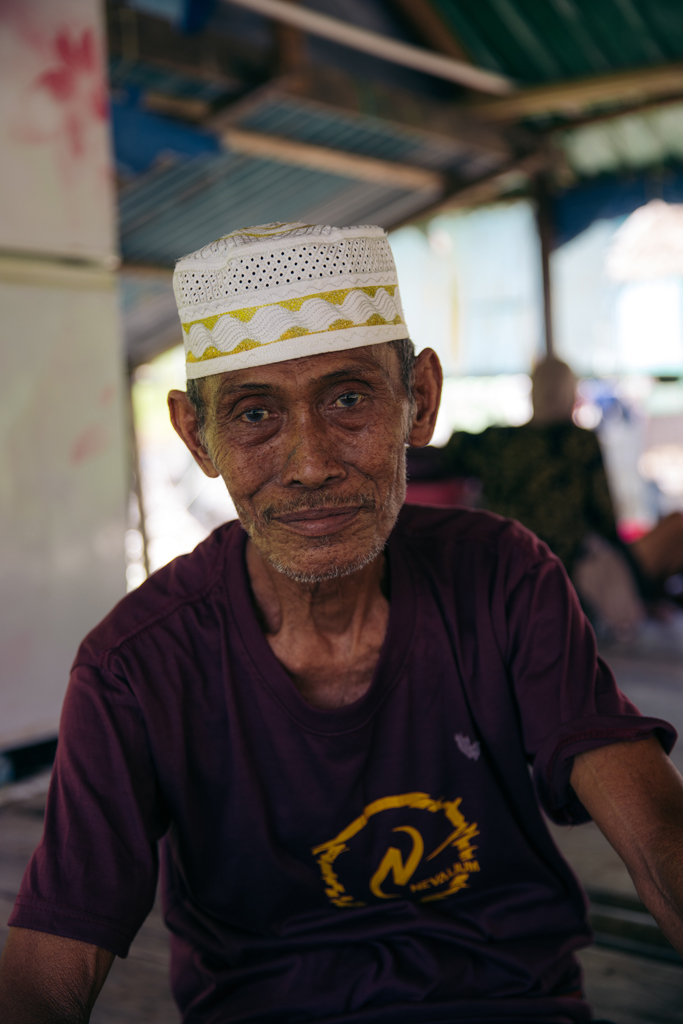
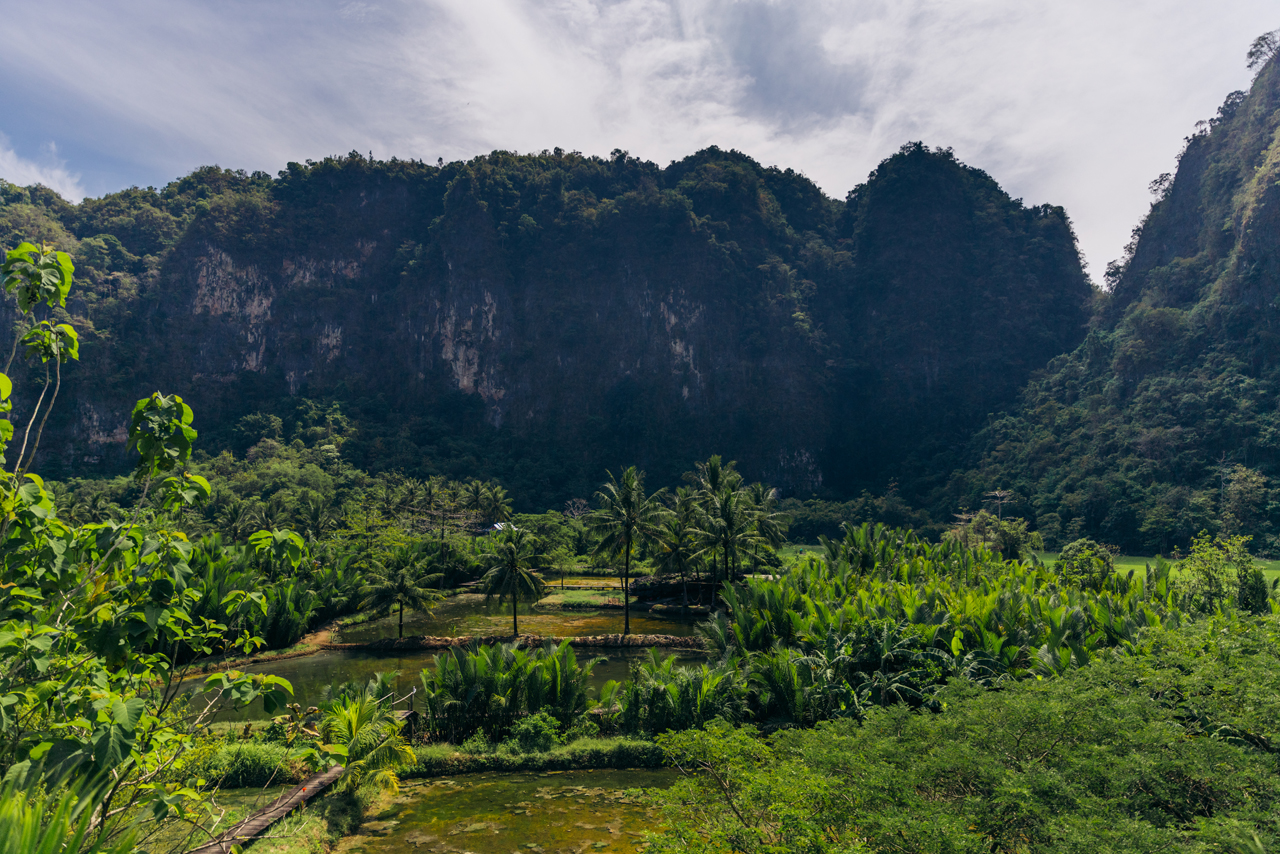
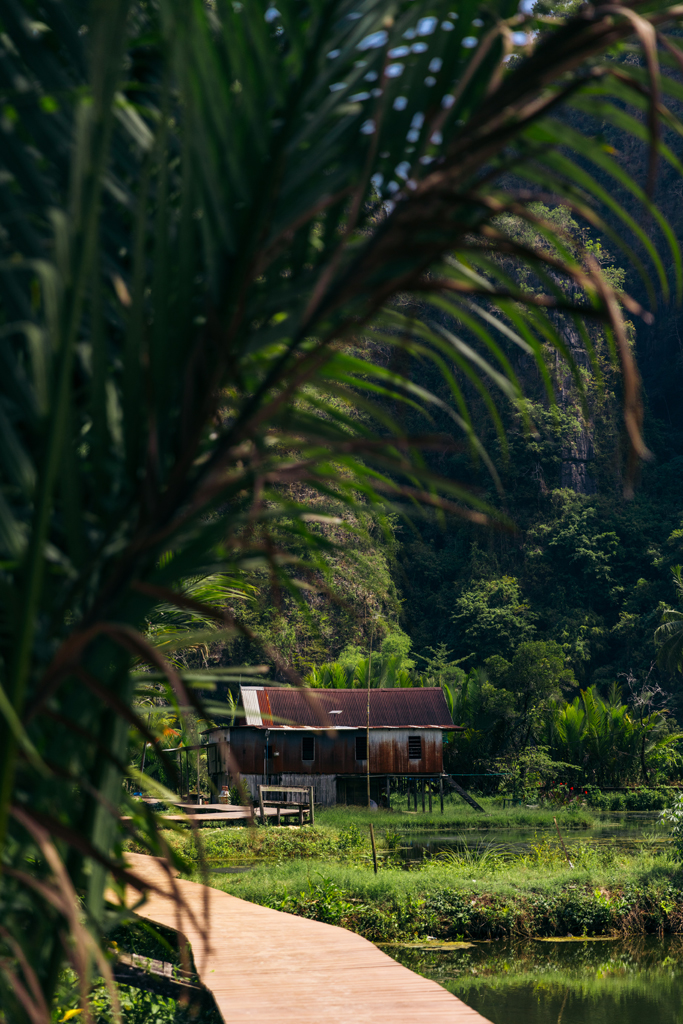
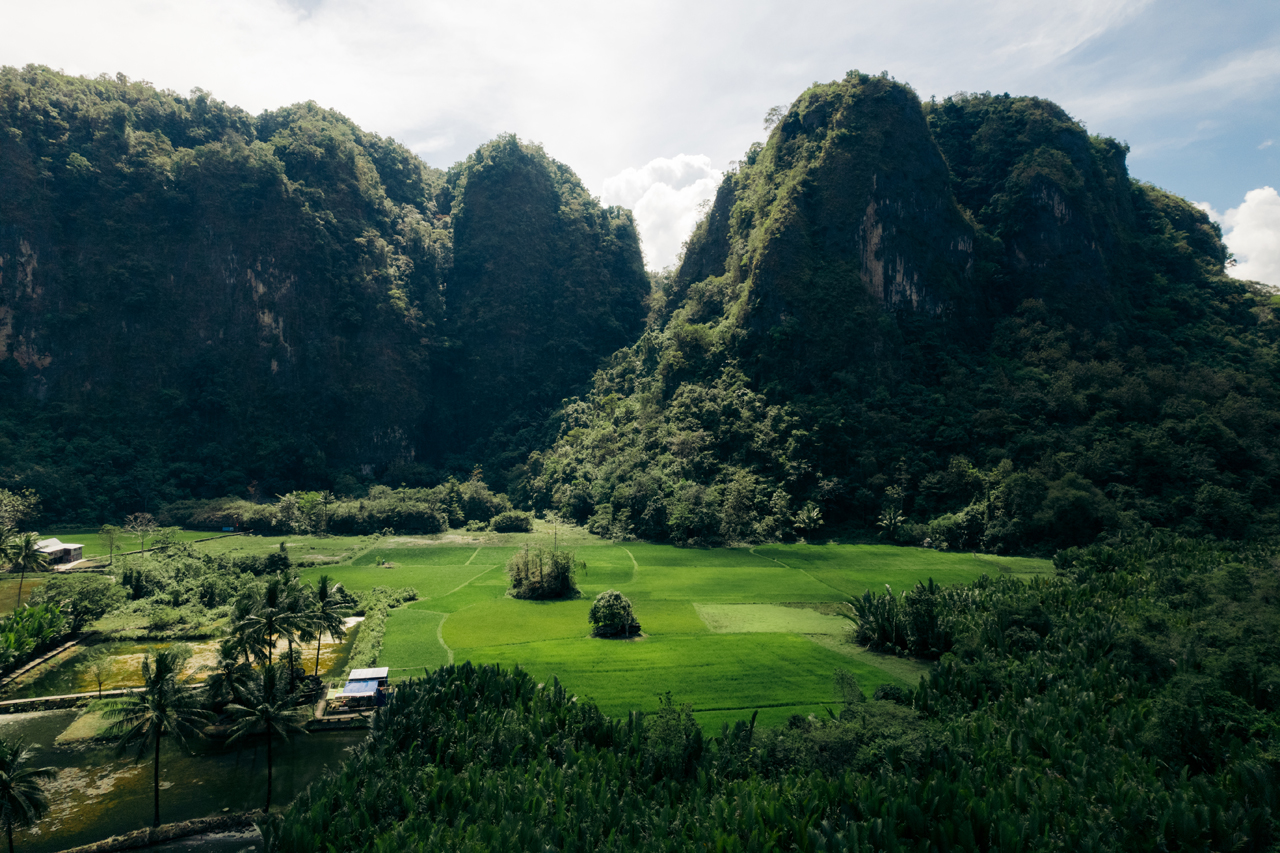
Back on the river and the captain brings me to the other side to visit another part of the stone forest. Pretty cool river.
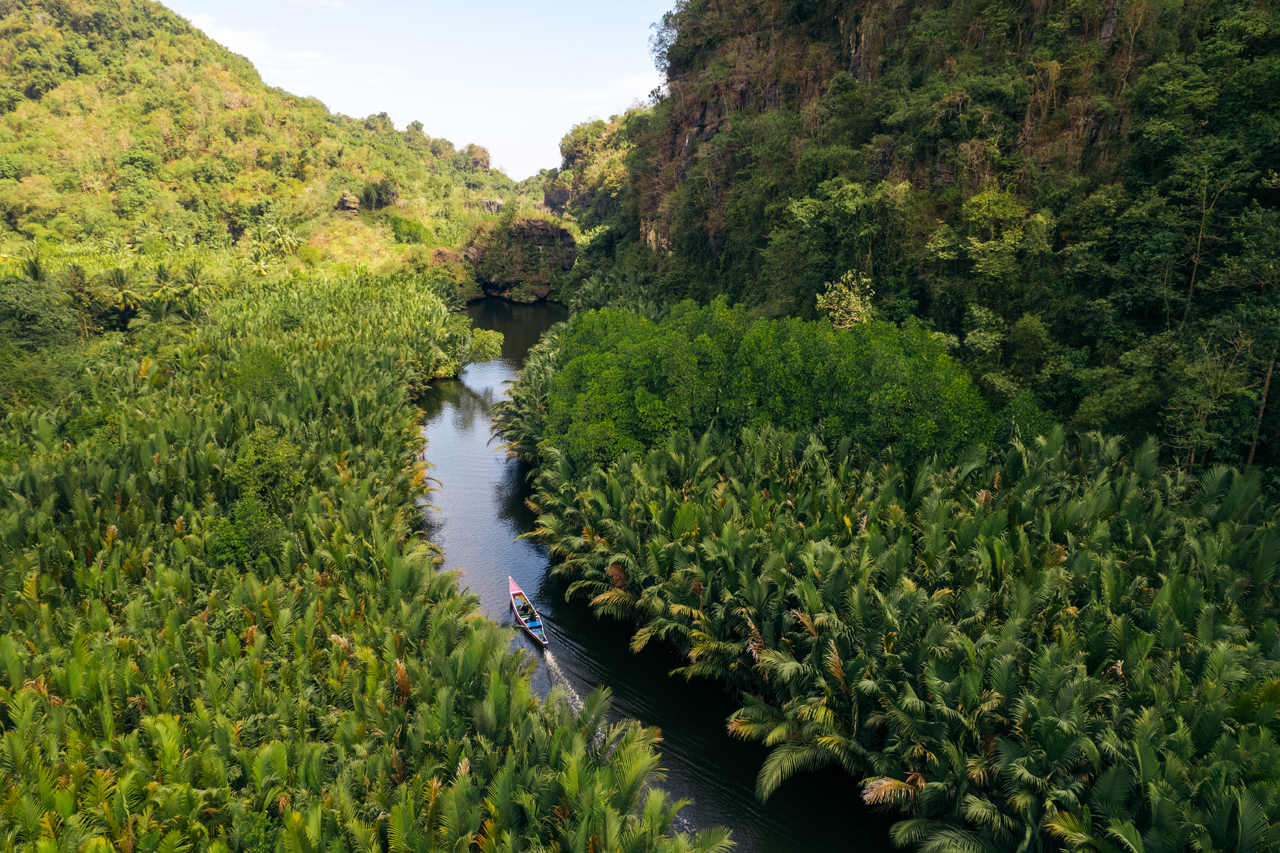
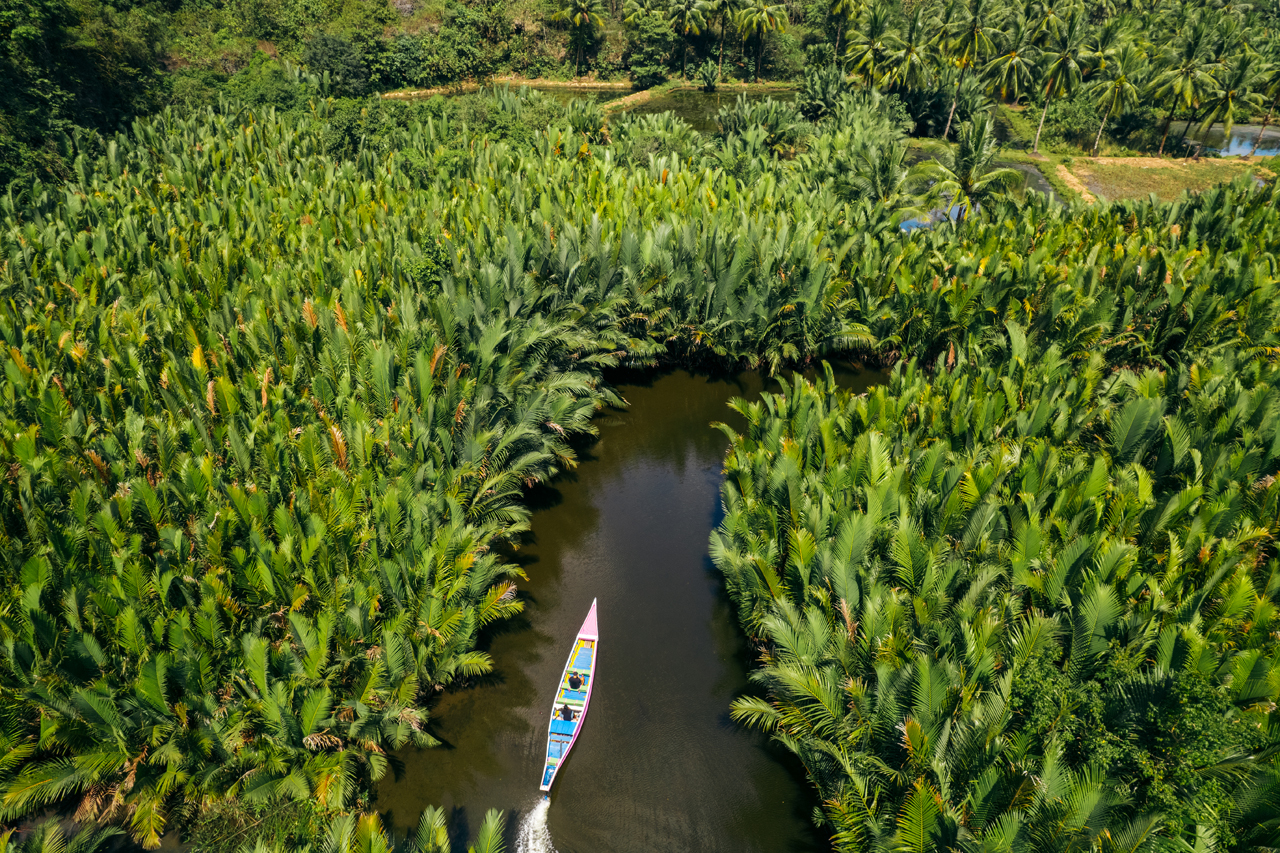
More in the Stone Forest:

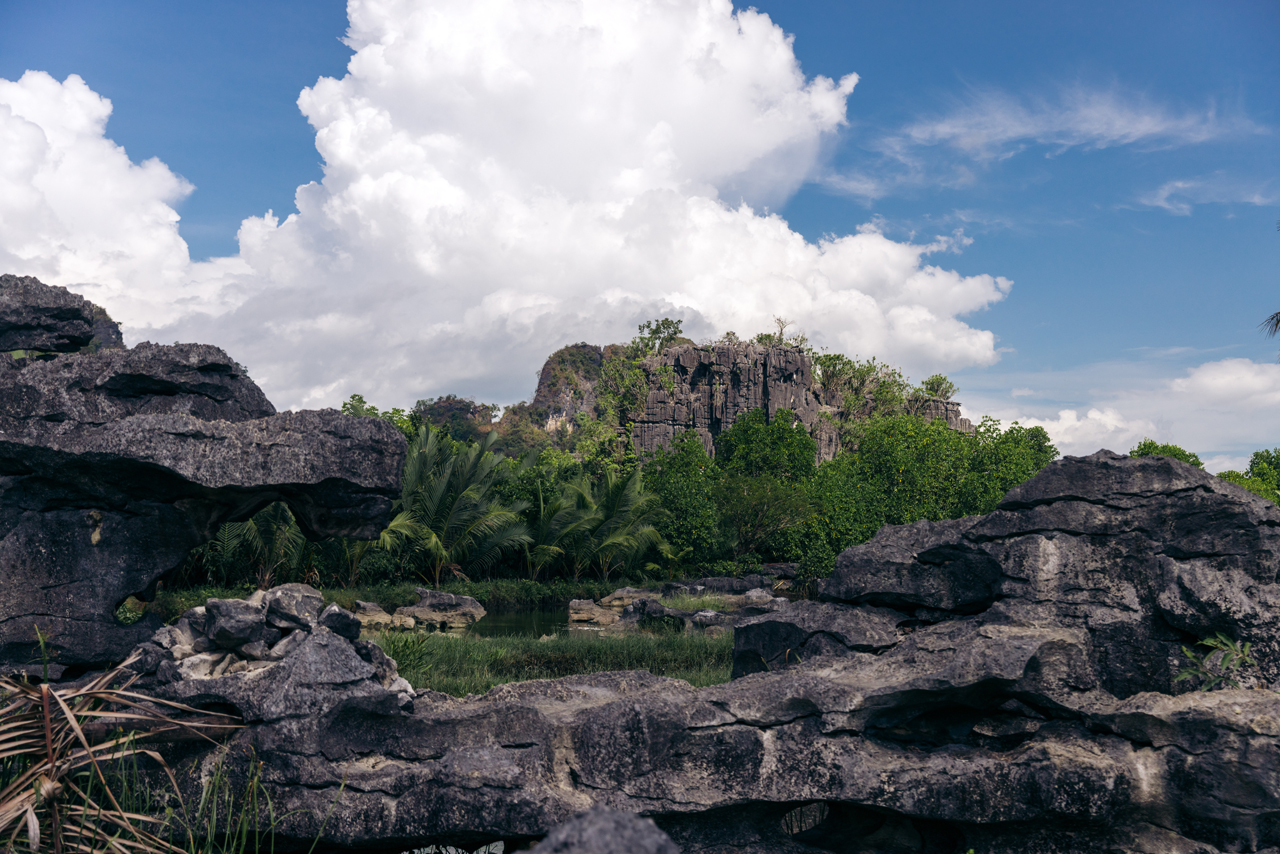
After that the boat captain got me back to land and I rode off to another “stone forest” a bit further, called Leang Leang Archaeological Park.
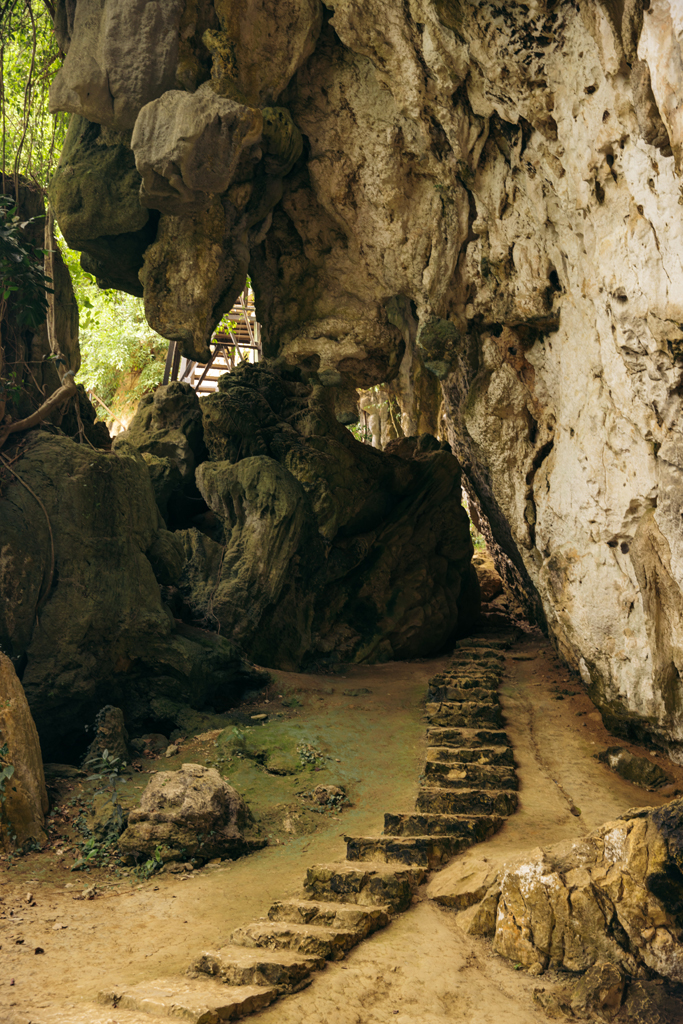
It’s pretty similar, I wouldn’t say it’s a must-see if you visited the “stone forest” of Rammang Rammang.
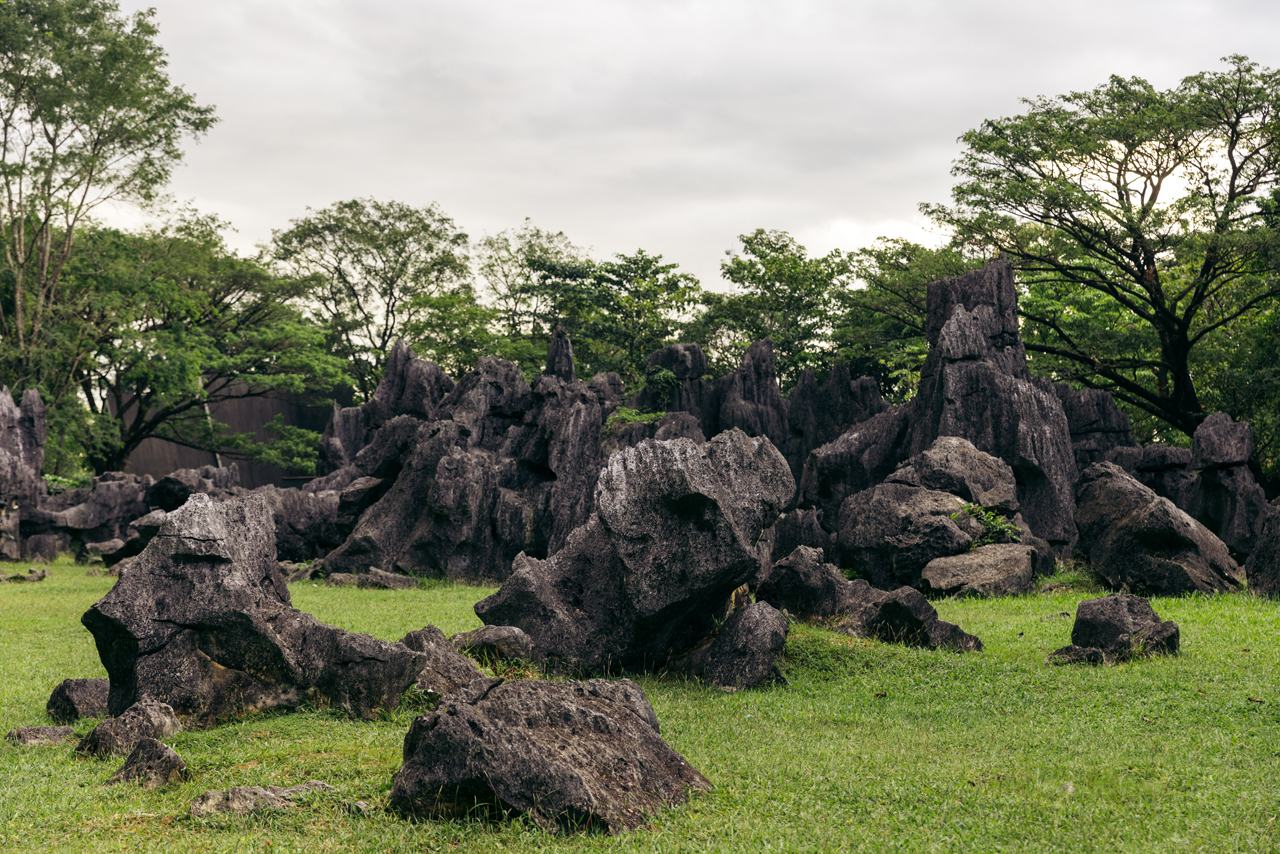
There are also a few caves to see around Rammang Rammang and Nasrul can probably show you even more stuff around but I was just happy to be back on the road and was taking it easy and didn’t feel like going crazy with activities on the first few days. You can see one cave I did visit, by following the link to my Instagram Stories.
The following day I kept riding north, with no definitive destination in mind other than to ride for 3-4 hours.
After a few hours of slow riding, I reached Parepare, a medium-sized city in South Sulawesi, but I didn’t enjoy the vibe or accommodations available there on that day. It was a holiday many hotels/homestays were fully booked and lots of places were closed.
After looking at the map and debating with myself about what to do I decided to ride 20 minutes south and get on this tiny island which is about 300m from the mainland, Pulau Dutungan.

This is a private resort/island. They have bungalows and other room types for rent but I was on a budget and just wanted a place to crash, so I rented a tent and planted it on the beach.
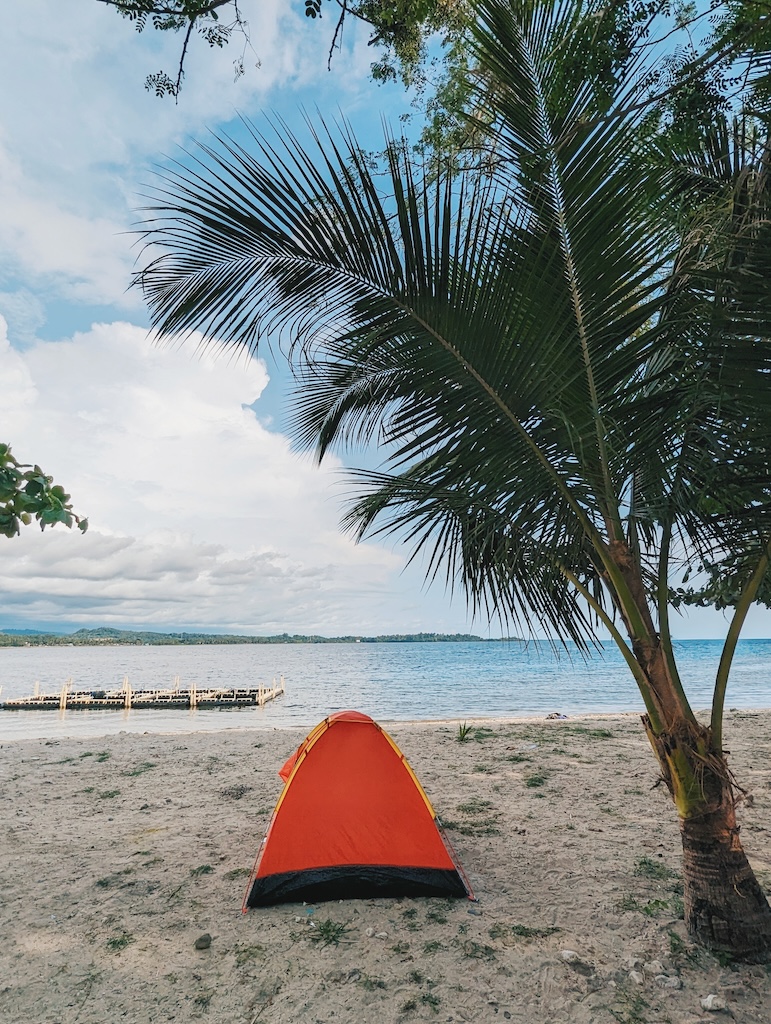
This could look like paradise but because it was a holiday in Indonesia, the night was quite sleepless. Loud music until the morning, at least 3 different giant speakers blasting different songs + Karaoke and then it started raining. My stuff was all with me in the tent and the tent wasn’t waterproof, luckily the rain stopped. Probably ended up sleeping 2 hours.
But, the people were all super friendly and I met a fellow photographer who takes care of the social media/marketing for the resort island, Andie.
It’s a cool little island if you are in the area during a “normal” day go check it out for a night or two.
You can see my tent on the bottom left.

You can see how close to the mainland this island is, that small boat goes back and forth all day, for about 20k IDR per person and there’s also a small fee to access the island. The tent was about 50k IDR for the night.
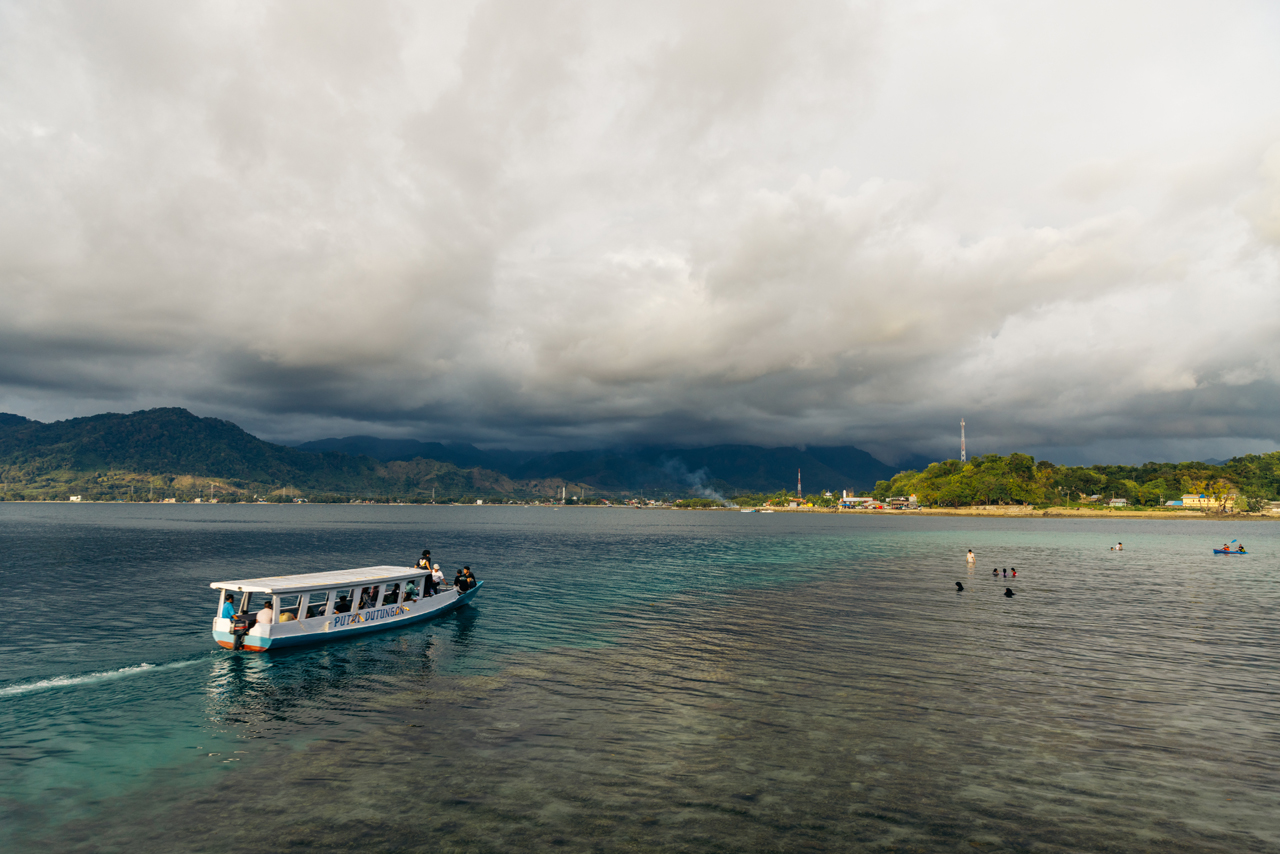

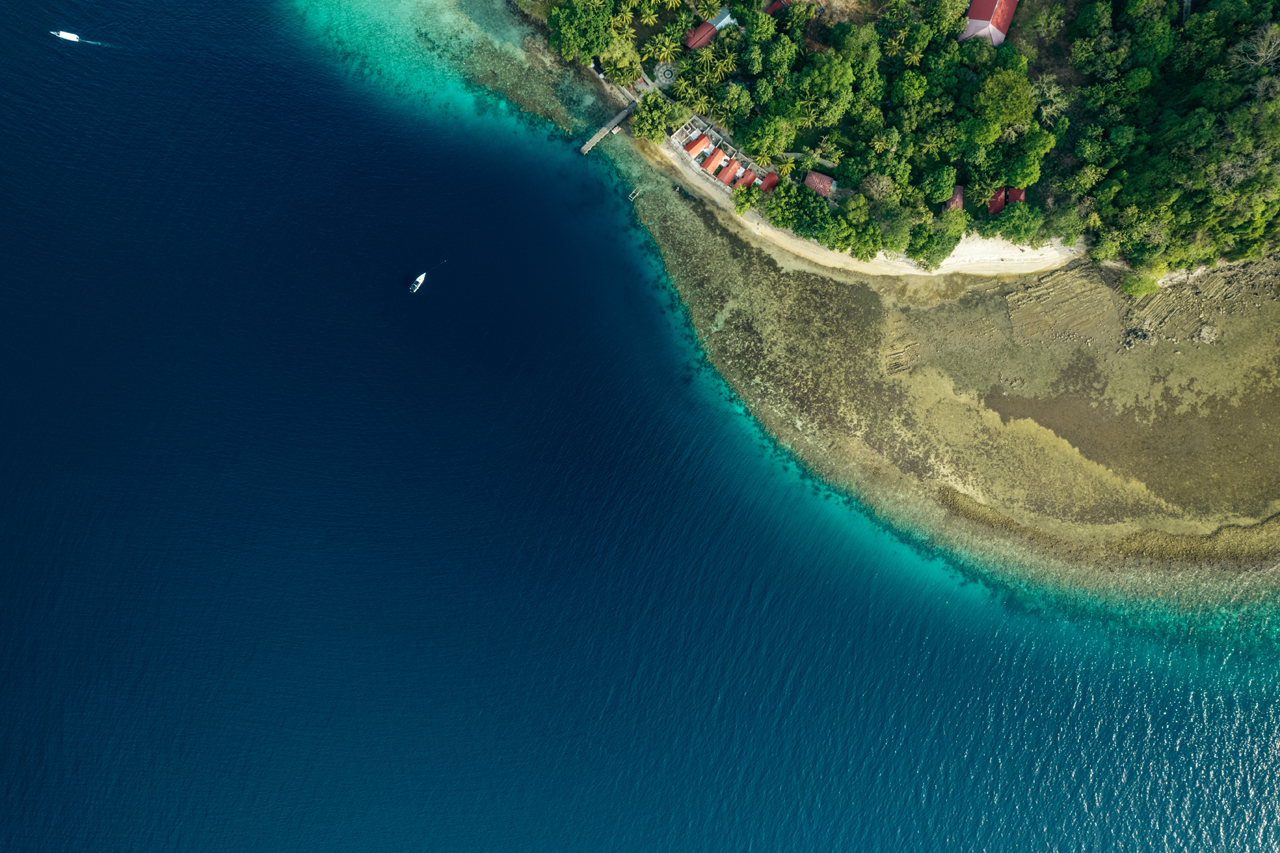
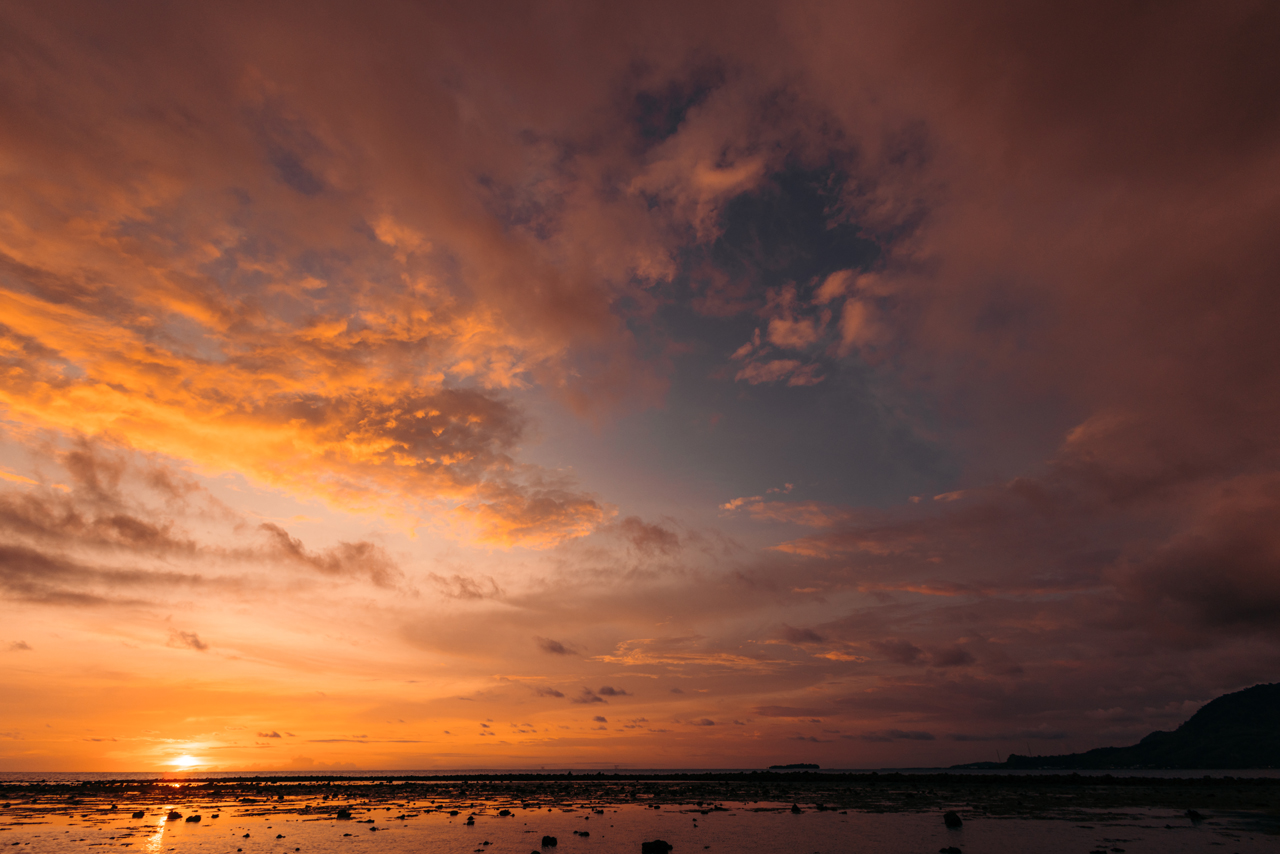
My next big destination was the Tana Toraja regency about 200km from Pulau Dutungan.
I stopped along the way in Enrekang to sleep only, and the next way on the way to Makale, the first city of Tana Toraja you come accross when coming from the south, I stopped in a pretty cool coffee shop with a view of Gunung Nona.
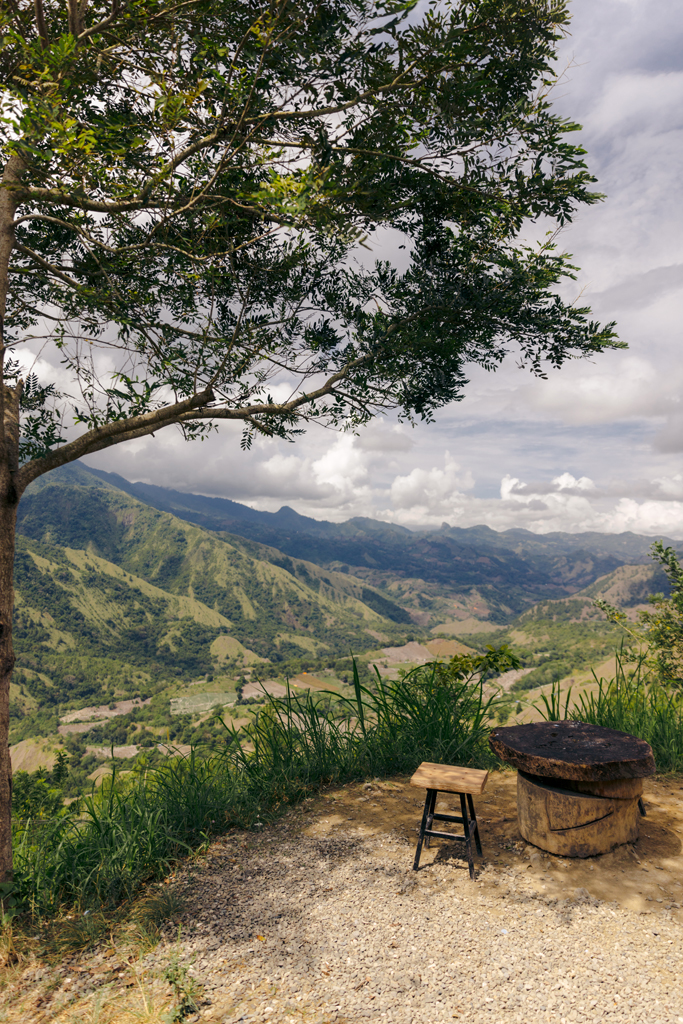
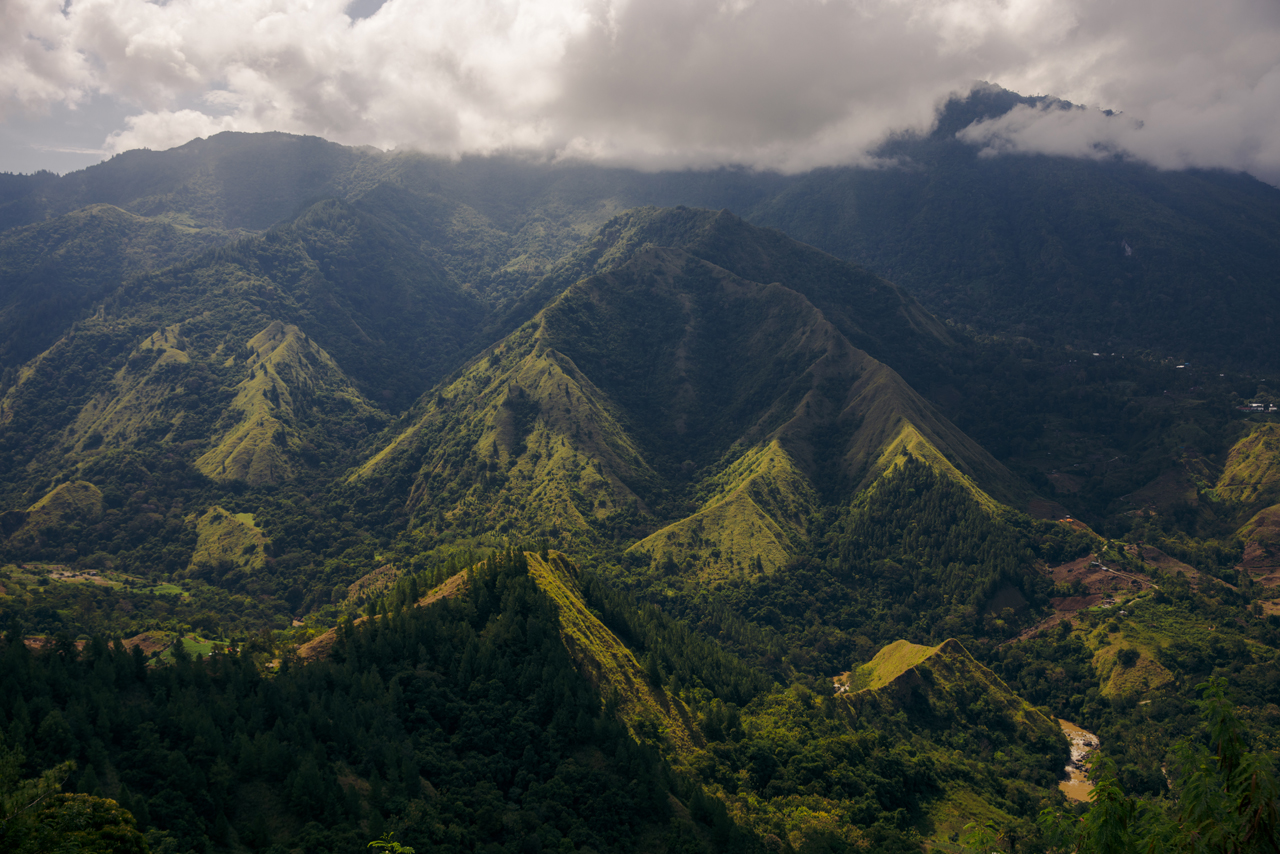

Beautiful area for sure, but you can’t explore every corner when you do a road trip like this, so I kept driving until I reached Makale in Tana Toraja.

After arriving in Makale, the second biggest city in Tana Toraja, I went to meet friends who needed some pre-weds photoshoot.
We ended the day near the Jesus statue, famous in the region.
As you can imagine most people here are Christian, which is already very different for the island of Sulawesi.
I only took a photo of this place as I was busy with the photoshoot.
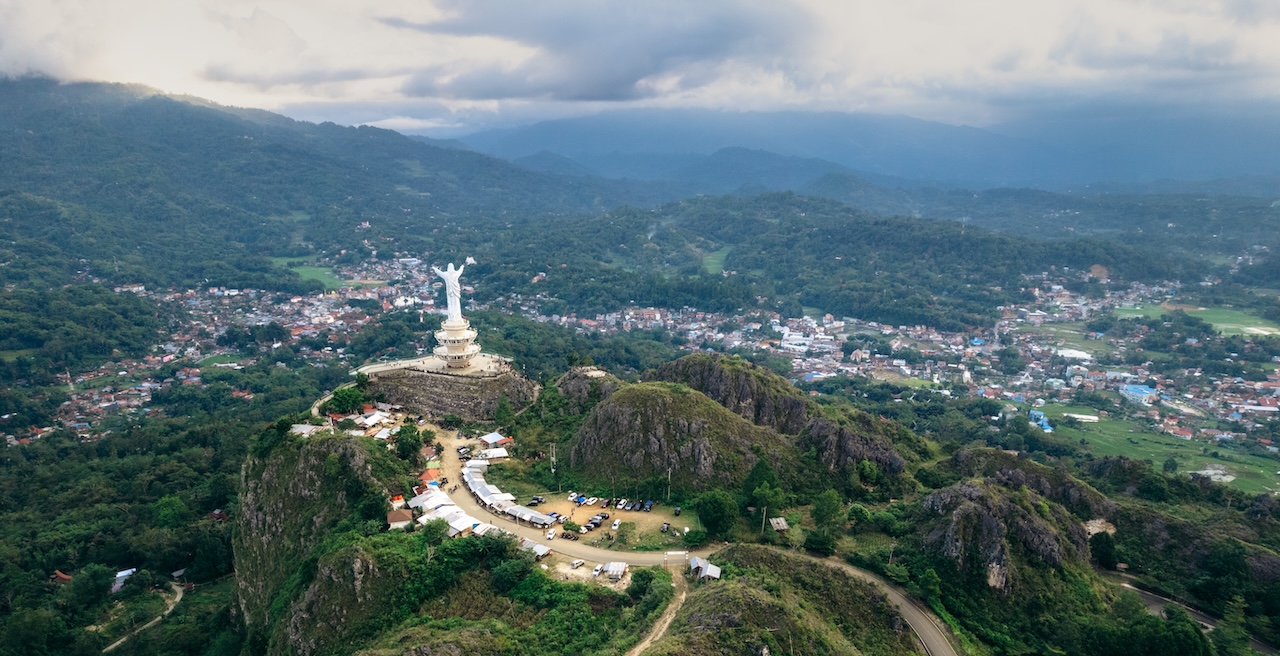
Tana Toraja is well known for its culture, which I will explore later, but there are also some epic mountains in the area and I planned to ride up to a place that looked pretty cool from what I saw online. And it didn’t dissapoint.
My goal was to reach a location called Ollon, Tebing Romantis Ollon, to be exact. This ride will take you about 2.5 hours.
On the way there, this beautiful scene got me stopping because I wanted to take a photo and it started raining, so I needed to get my rain gear on.
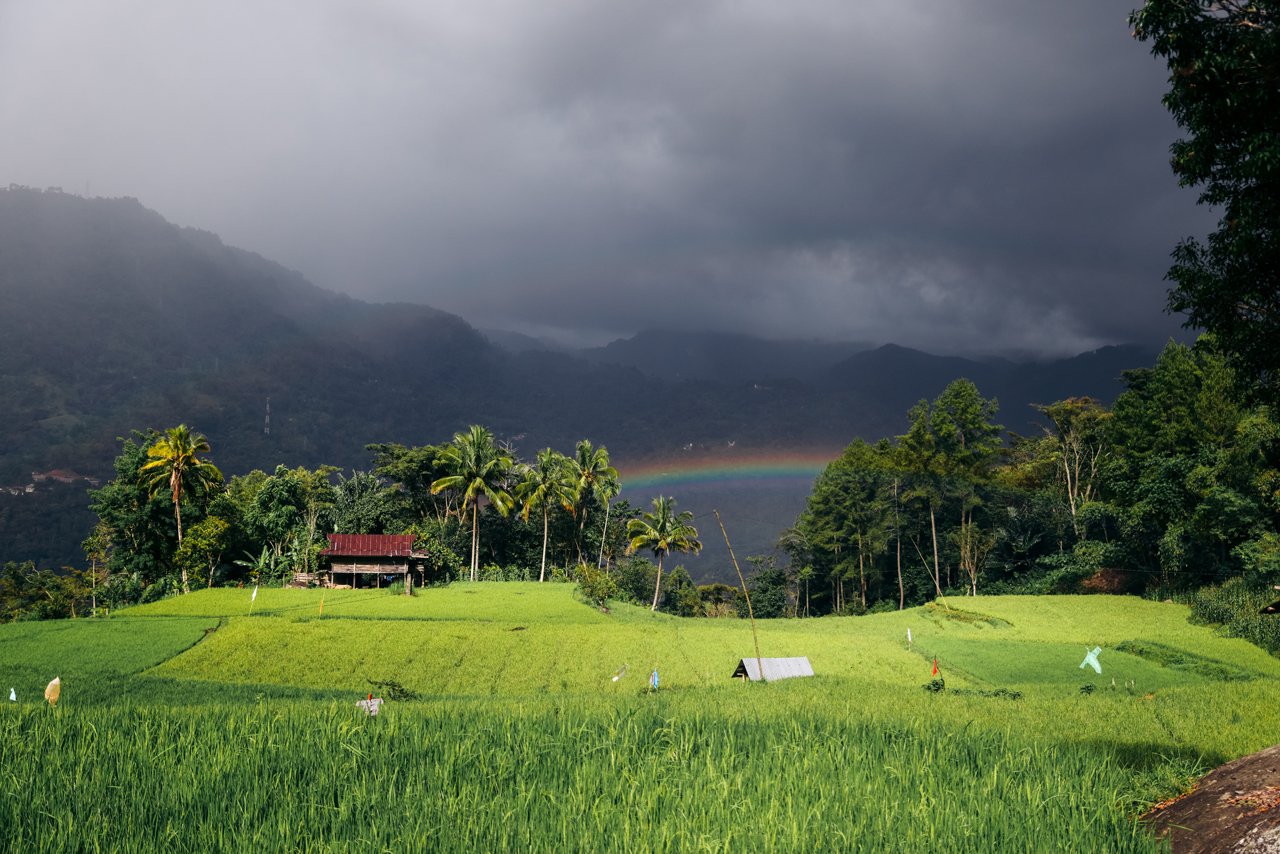
A little bit after this I had to stop and take cover, the rain was too heavy.
After the rain almost stopped I kept going.
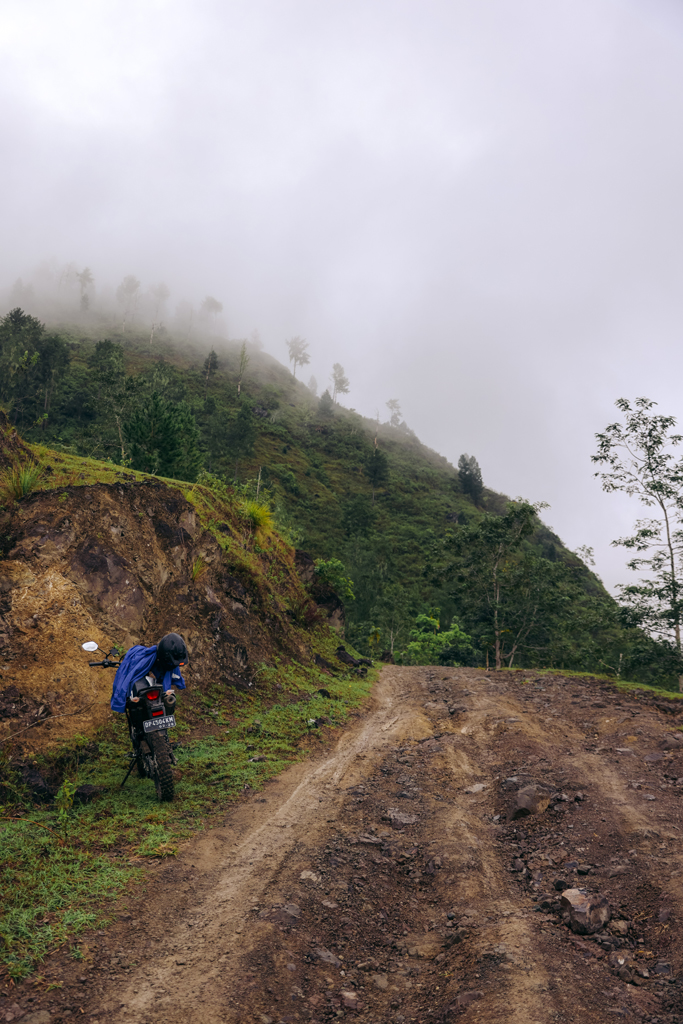
After reaching more than halfway to my destination I had to abort the mission and turn around to get back to the city. I wasted too much time with the rain and it was too late, and let me tell you, you don’t want to ride there at night time.
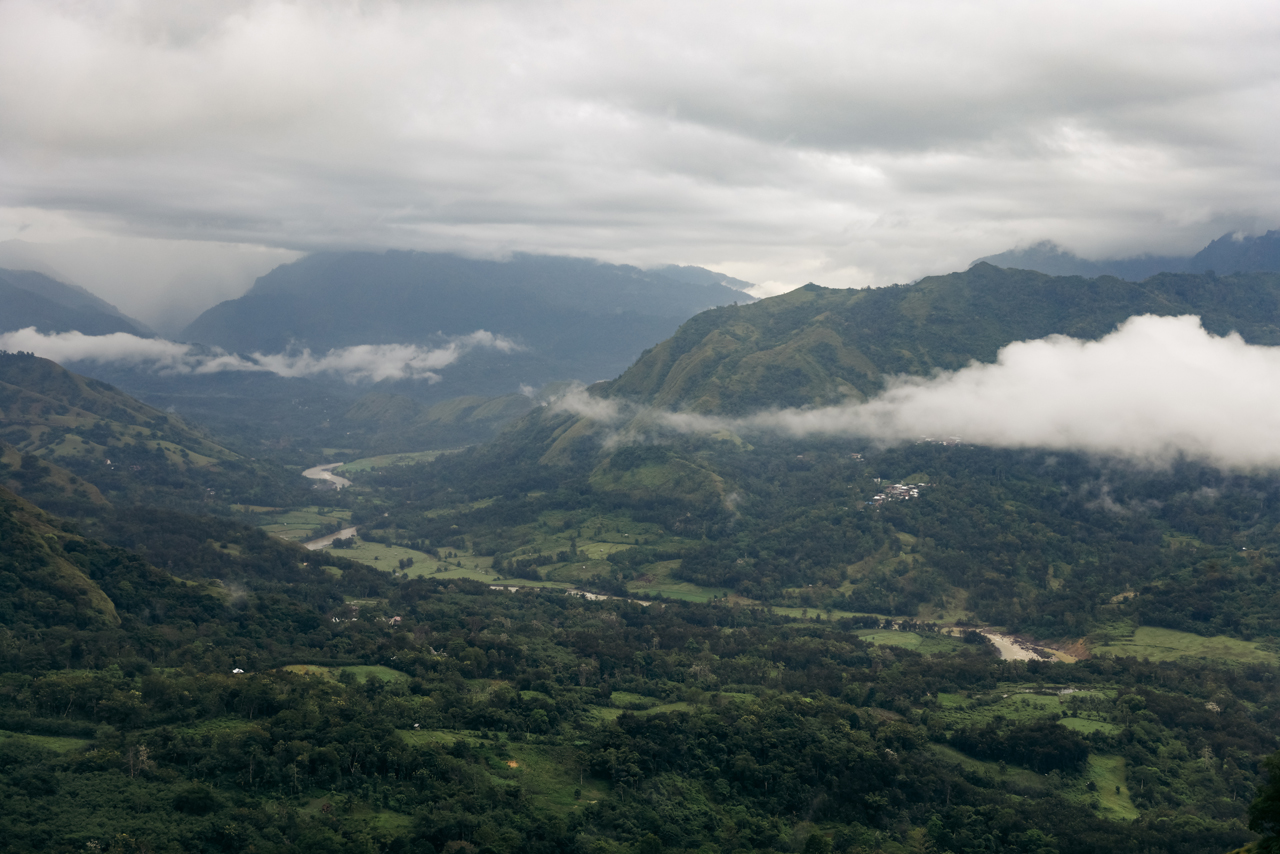
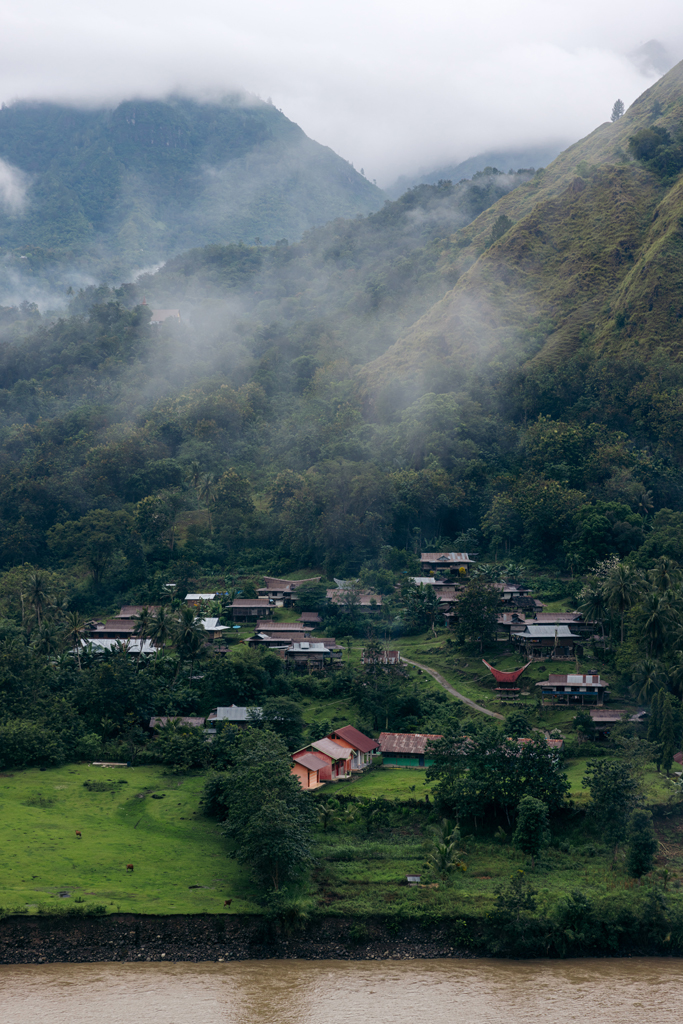
The ride back to town wasn’t ideal—the rain persisted, and I found myself riding the last hour in the dark. Nonetheless, I managed to safely return to my room in the end.
The next day was a cloudy/rainy one, I decided to stay around and visit one of the burial sites of the Torajan people. This is one of the many sites in the area, Torajan’s relation to death is very different than what most people are used to in other parts of the world, including Indonesia.
Even among the Torajan people, there’s is plenty of different burial customs exist. While I only touched the surface and don’t profess expertise, there’s a load of information available online to get deeper into this fascinating topic, but I will share what I learned about it.
Londa burial site is a known tourist attraction nowadays. This is a cave, which is usually the case for most burial sites in Tana Toraja, either caves or rocks with tunnel dug in by humans.
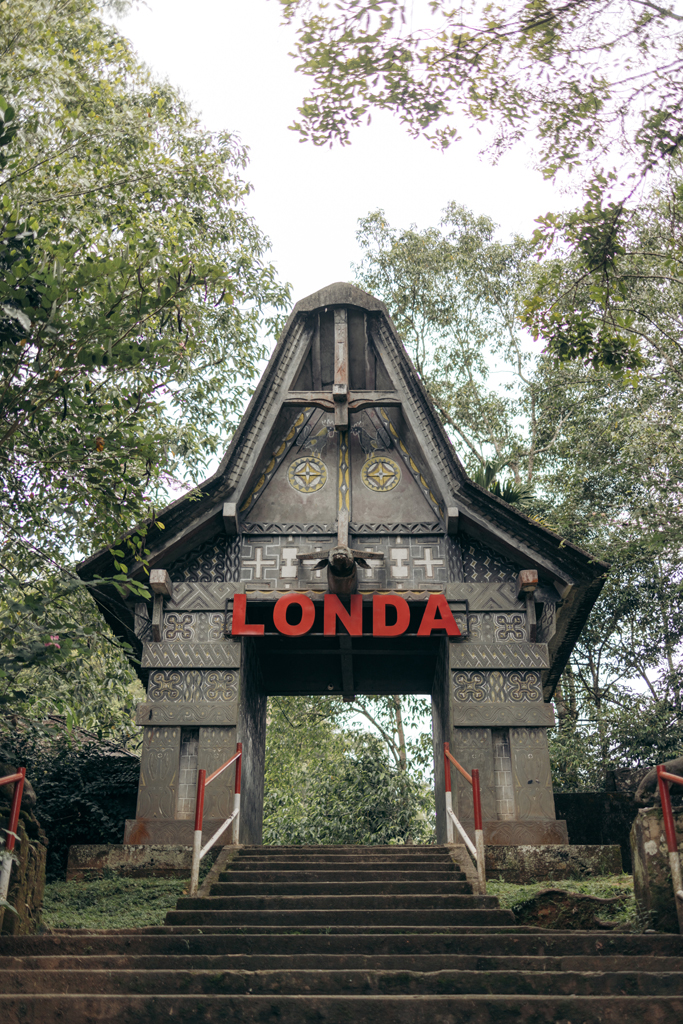
The site is barely visible from afar.
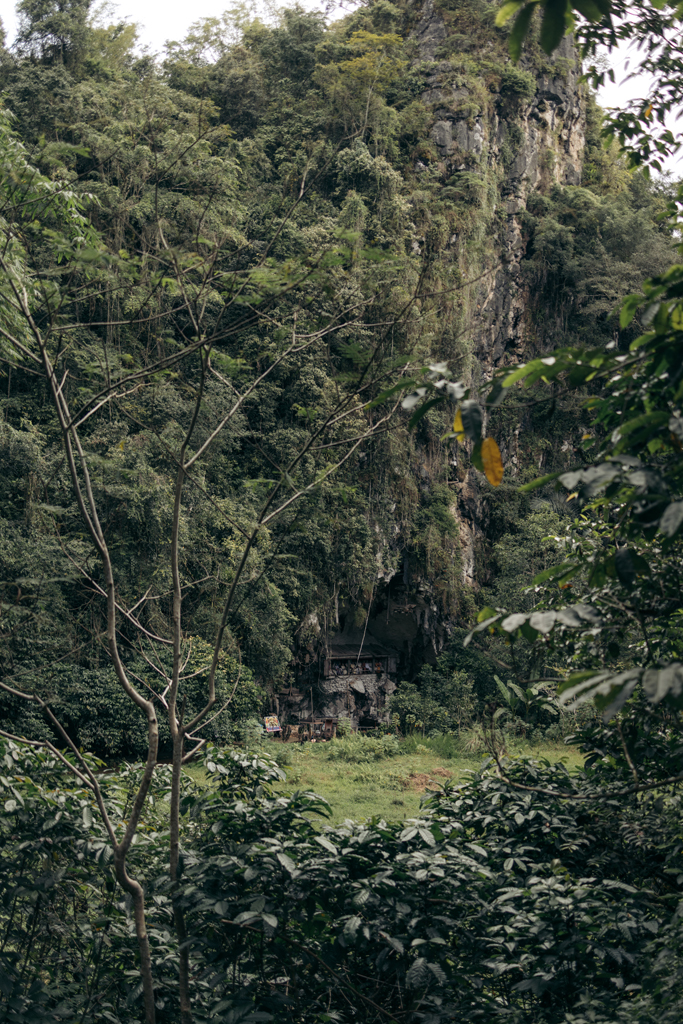
Traditionally they buried their dead in boat-shaped wooden coffins at the base of cliffs
You can see exactly this on the following photos, this is not the case anymore.
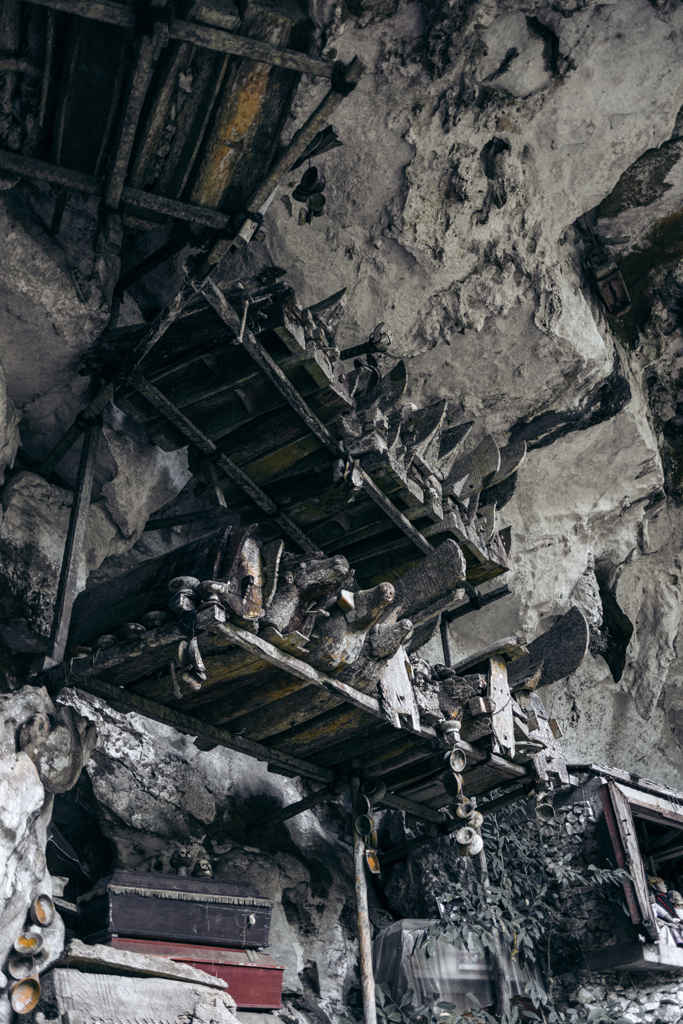
Recent coffins look more traditional, I think it’s related to religion arriving in the region.

This isn’t real people but this is a practice that still happens in some areas of Tana Toraja, they keep the bodies exposed.

Inside you can see skulls and bones, with people still coming around to pay respect and giving donations.
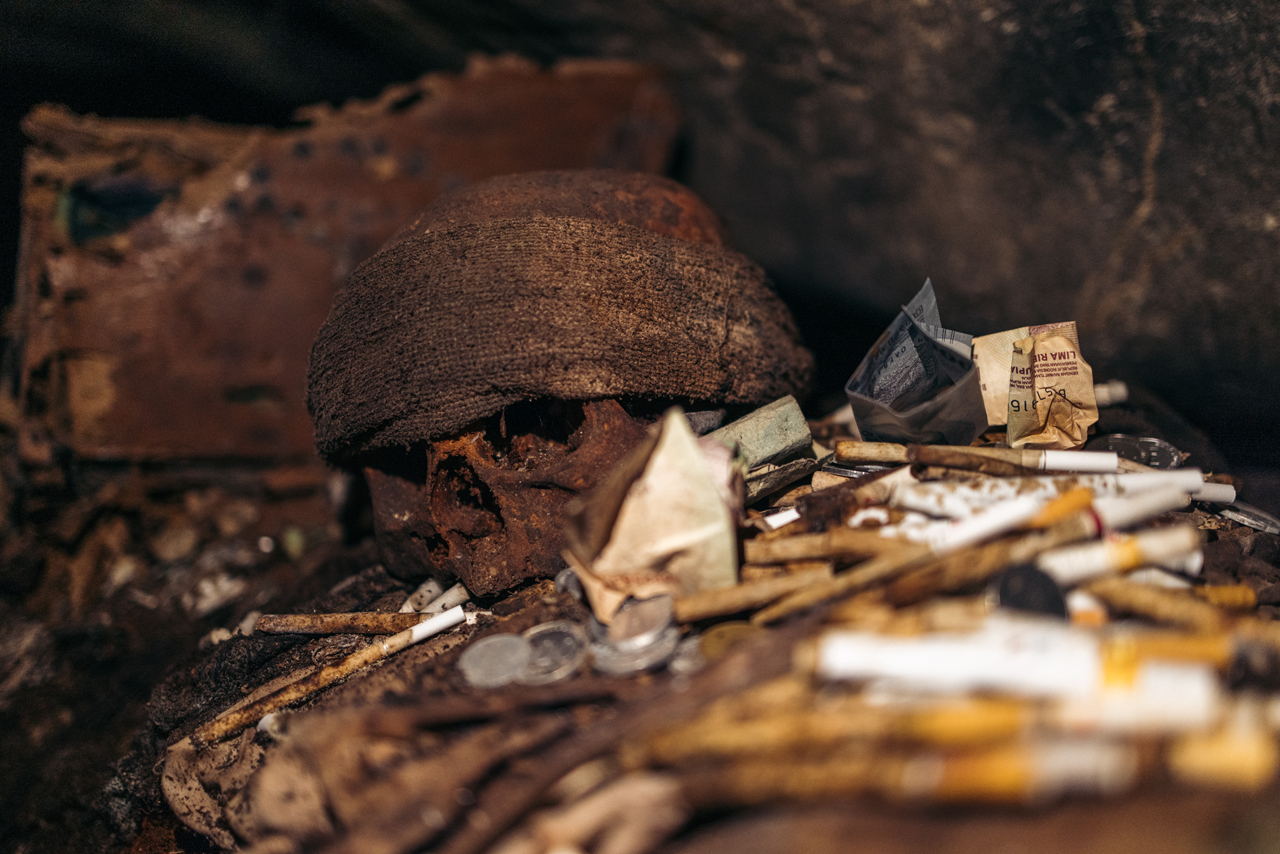
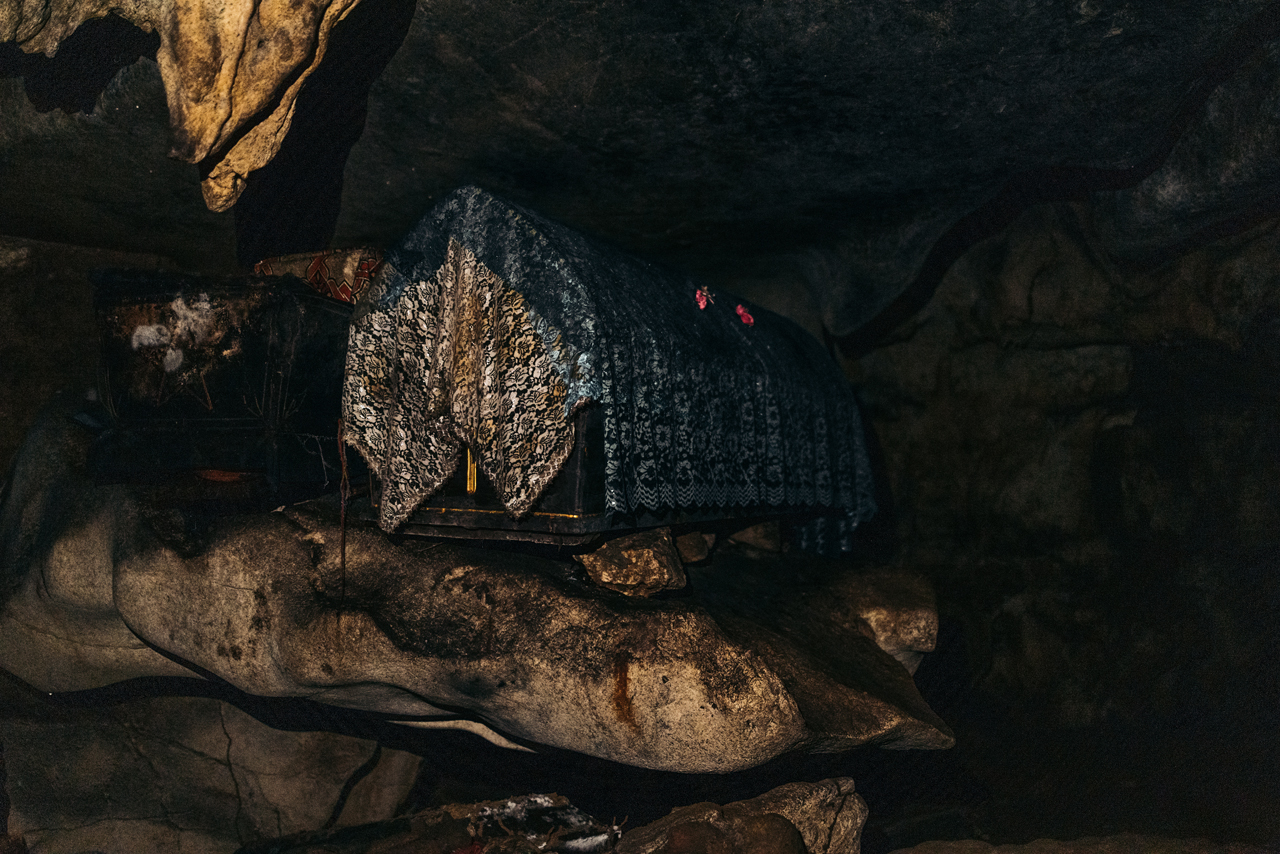

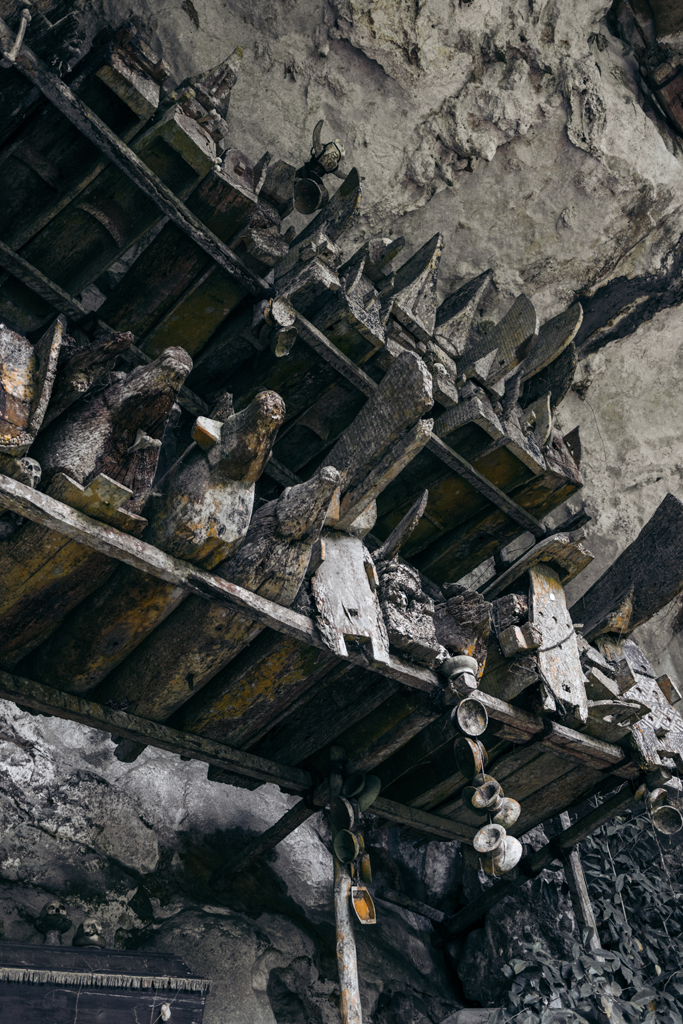
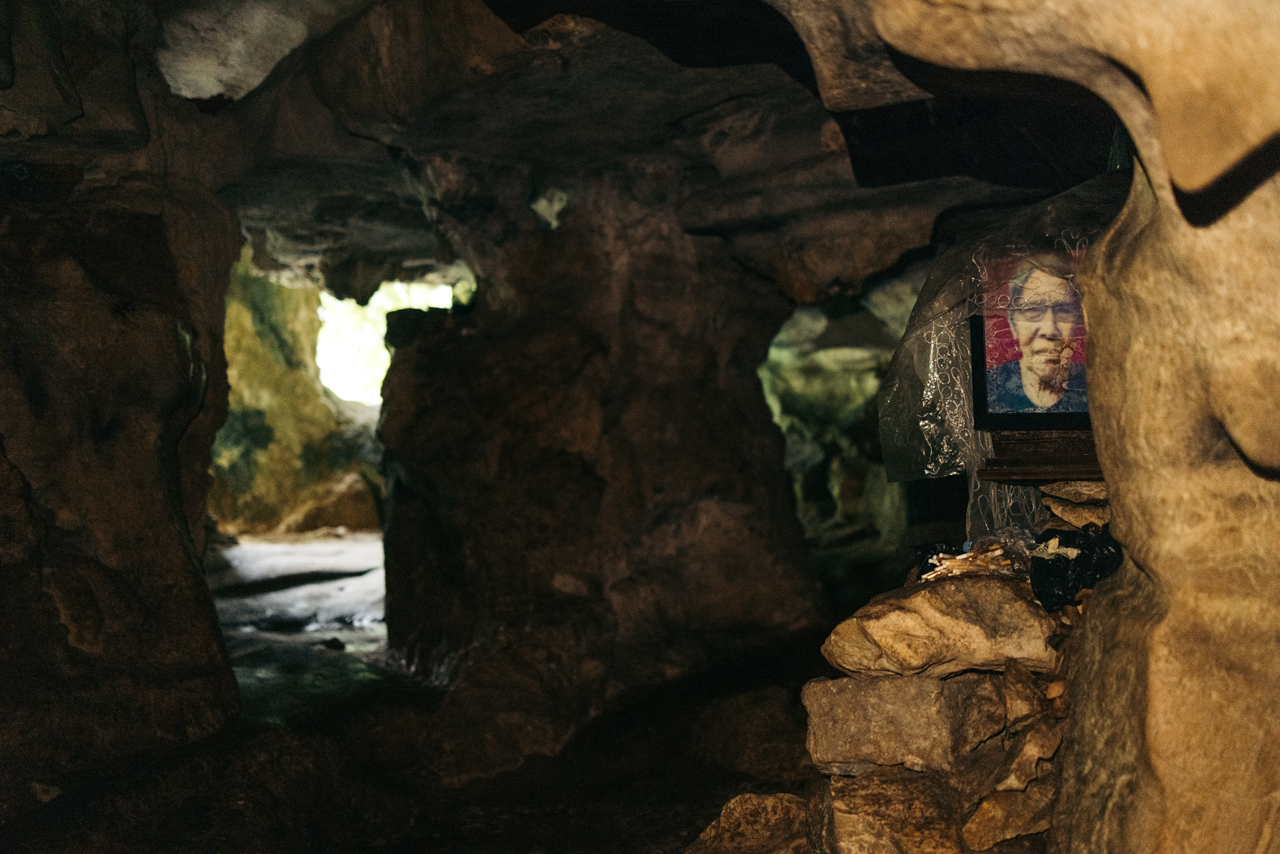
This was my first encounter with the “Culture of death in Tana Toraja” and I was already quite impressed and kind of shocked by it. But there’s so much more to come.
But my first mission in the area was still to go up to Tebing Romantis Ollon.
Luckily the next day the sun was out, and the ride to Ollon was on the schedule once again. Here’s a 65-minute video of the ride from Makale to Ollon and then a part of the way back.
There’s not much to the video, it’s more of an informative video than entertainment.
Beautiful landscape on the way there:
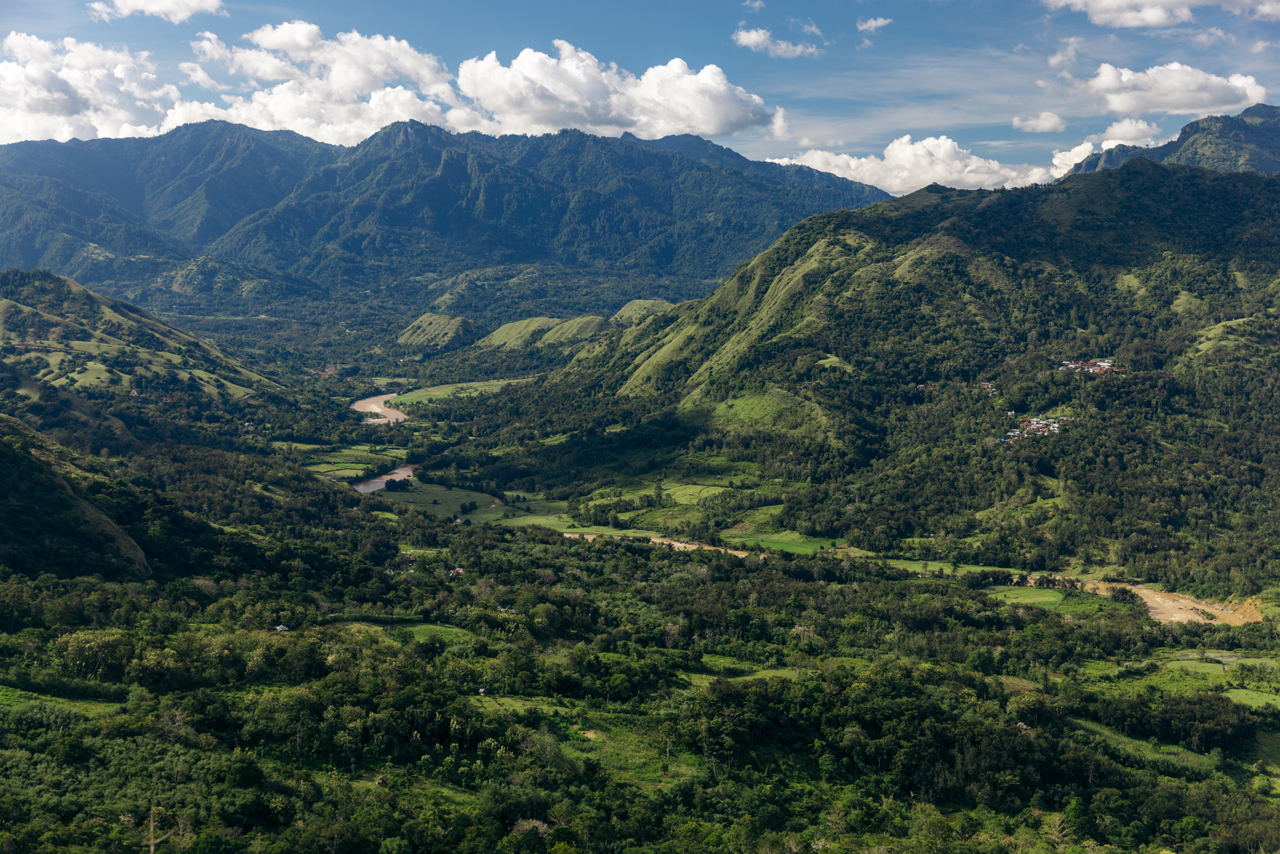
I rented a tent this and took some food with me to camp there this time. Doing a round trip on the same day would be too much riding offroad and also I wouldn’t be able to enjoy the sunset and sunrise out there.


First time seeing the Ollon area, the surface of the mountain is quite spectacular.
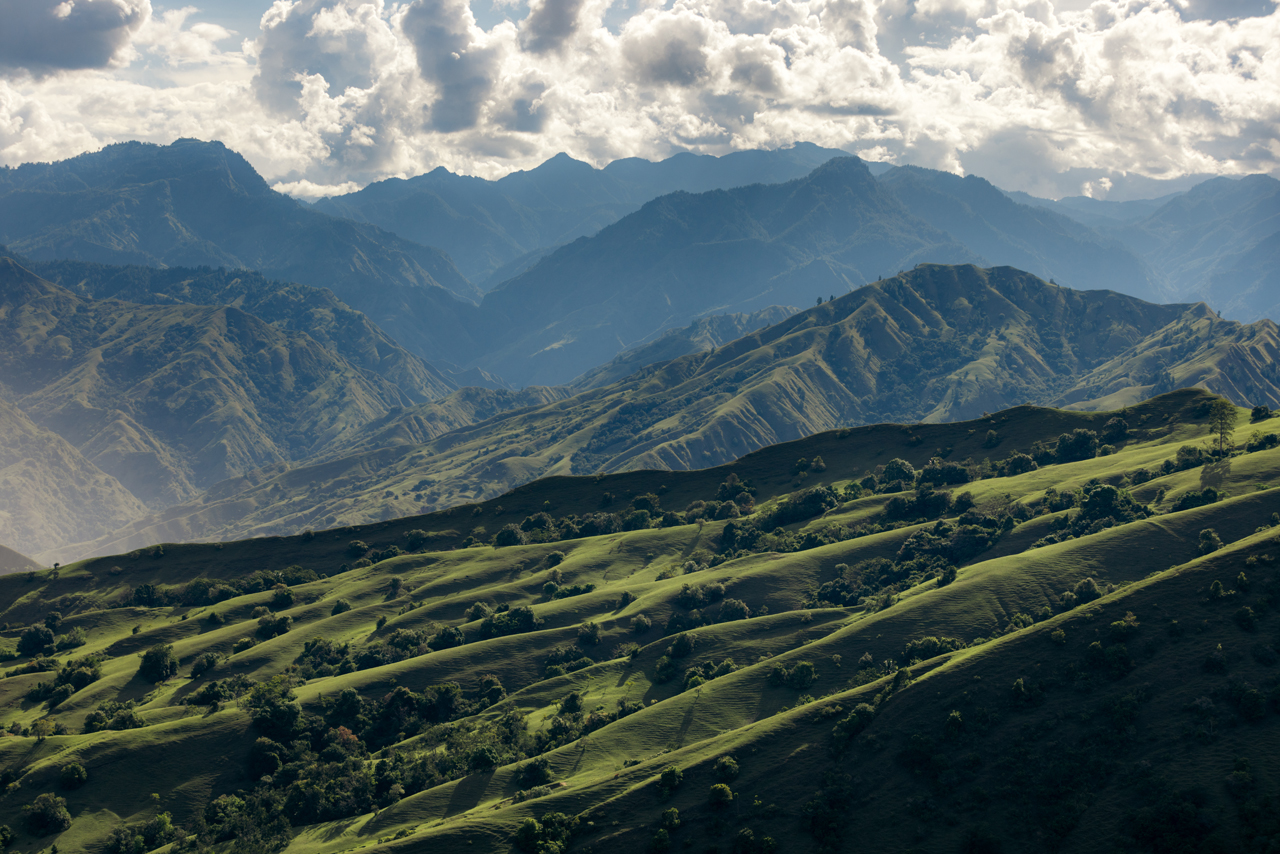

Incredible views.
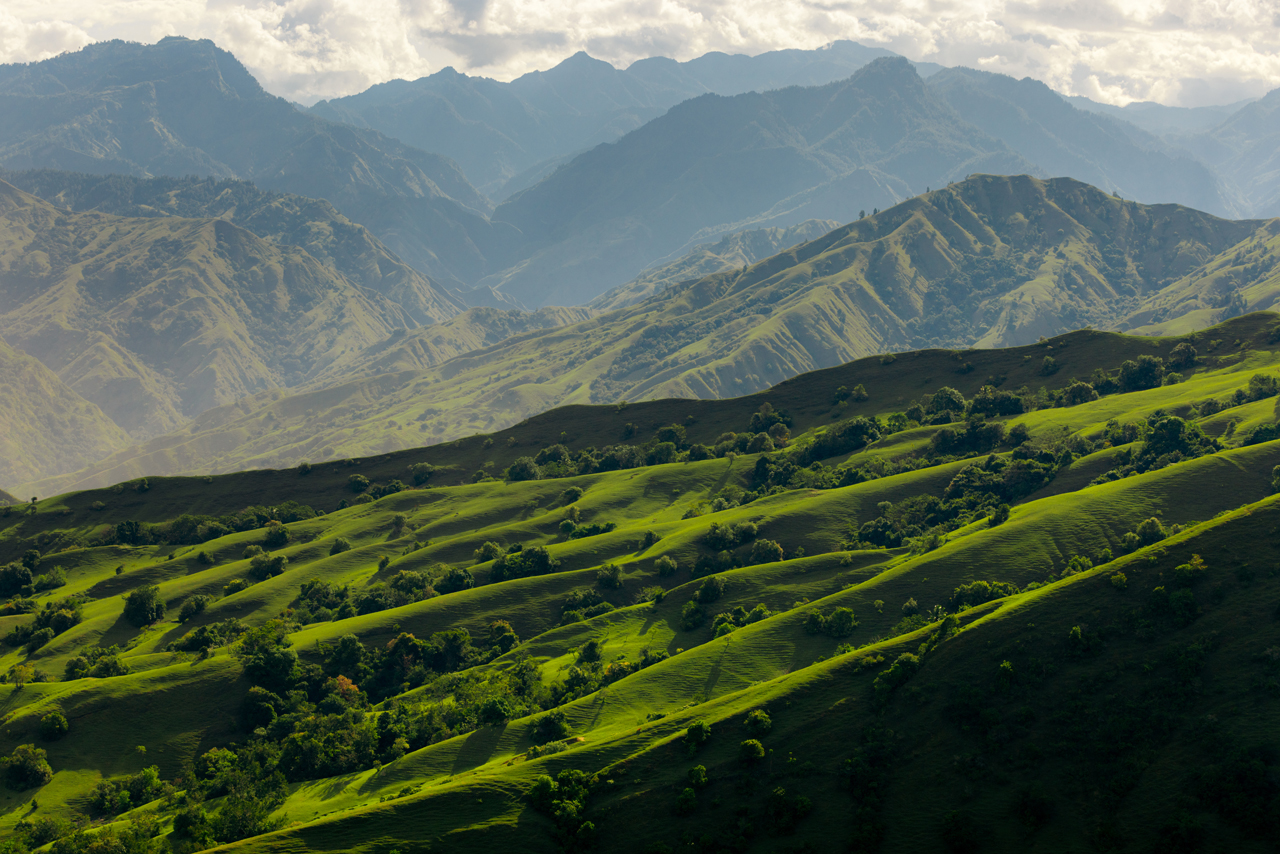
And finally, the place I was looking for. Ollon romantis.
As of July 2023, this road wasn’t the best, don’t go there if you are not confident in your riding skills and motorcycle capabilities.
From Makale it took me about 2 hours to get there that day. I also followed some locals for the last 30 minutes which was helpful because there’s no clear directions to get there.
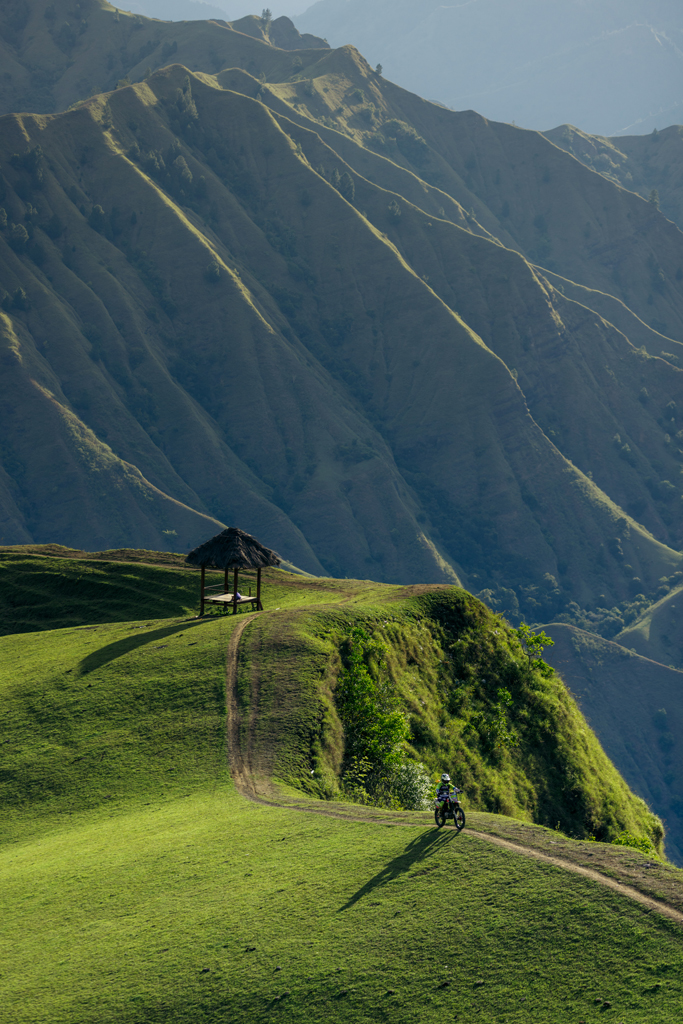
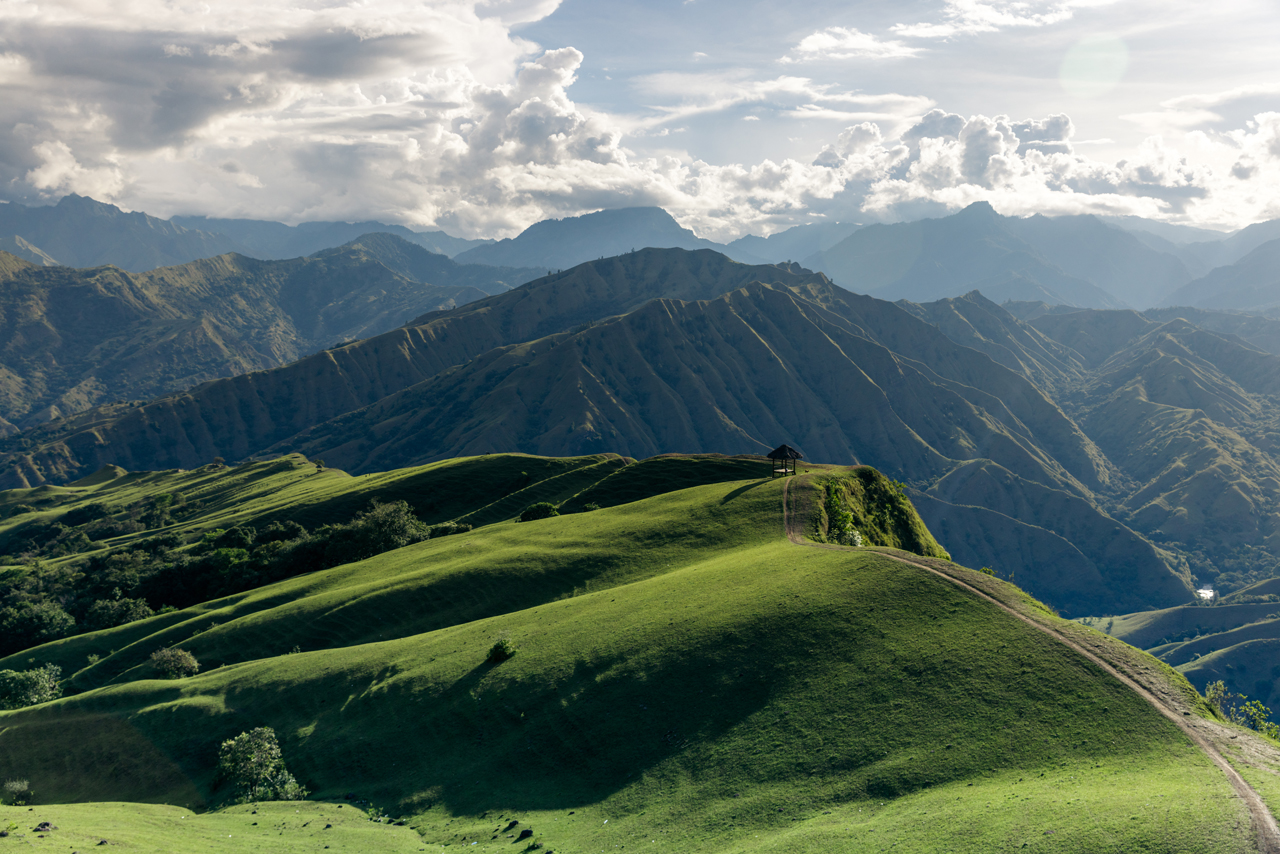
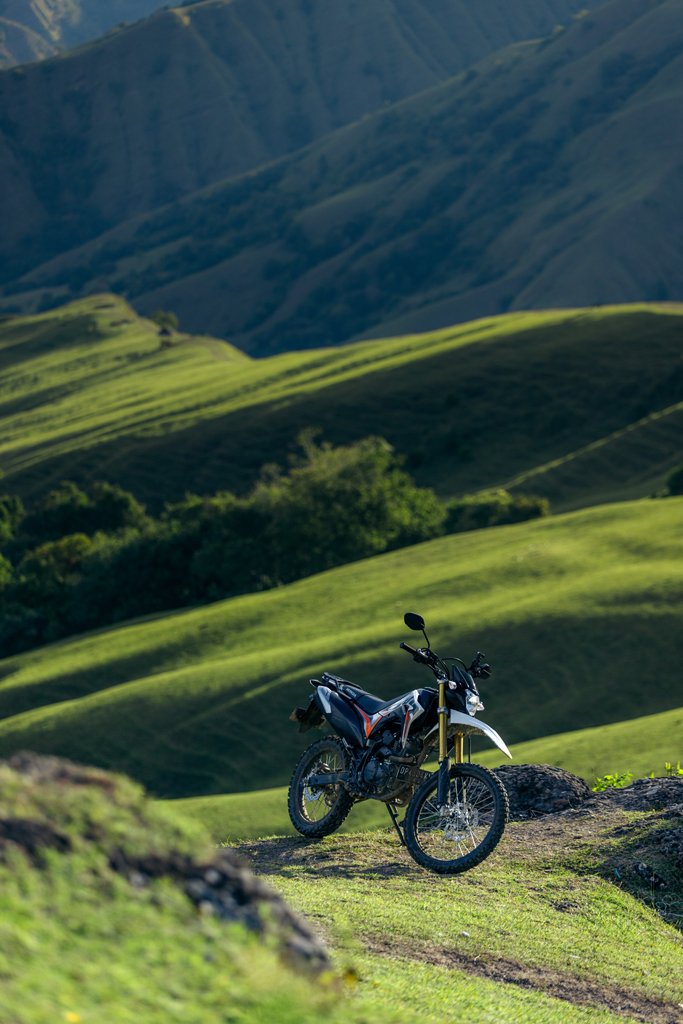
Find some random bike buddies up here.

Set up the camp area and enjoy the night out in nature, well not really enjoyed actually a bunch of loud locals arrived after sunset and didn’t shut up until 2am. The joys of Indo-Camping.

The night was pretty good for astrophotography.

The next day I woke up to a fully white backdrop, and thick fog came into the valley. There’s nothing to photograph there, let’s go back to Makale.
I did take a different road to go back to Rantepao. It felt like I was back in Canada at some point.
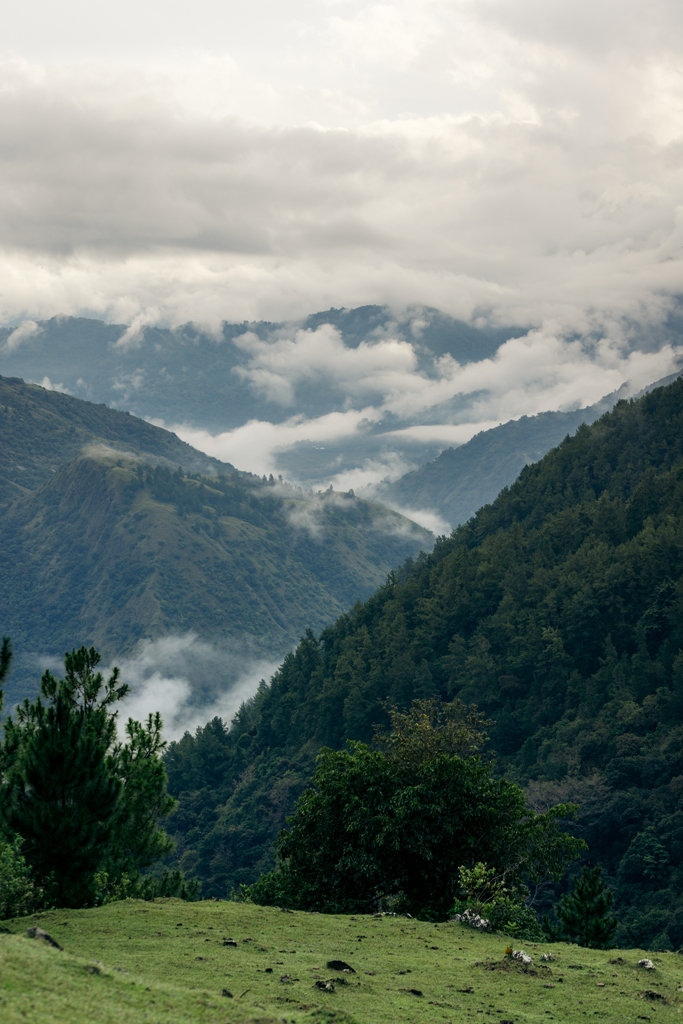

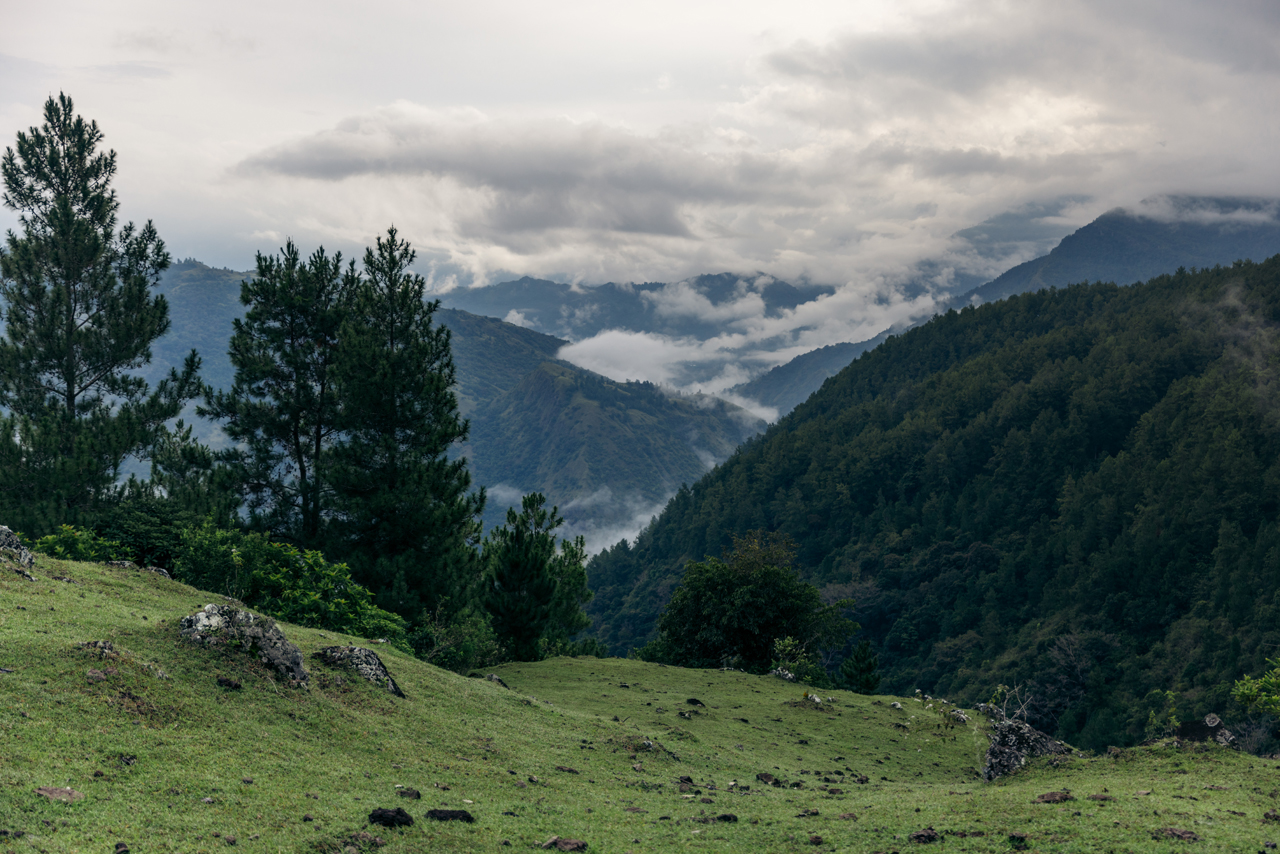
The next day I moved accommodations, and I went over to Rantepao, the biggest city in Tana Toraja.
I found a cool spot, Toraja Homestay & Coffee Bunna, where you can sleep in their traditional local “house”, the tongkonan.
I say “house” because as you can read on the Wikipedia page, this is used for much more than living in.
You can sleep in this one:

These smaller versions are usually just used for rice storage and show the wealth of the family.

Inside the normal, living/sleeping tongkonan:

It can easily fit 4 people to sleep:

The bathroom is outside, and in this particular place, it’s a very modern bathroom, which is a good change in Sulawesi.
Here, in the background, you can see the modern house where the family lives now. I highly recommend this place if you have your own transport and want to stay around Rantepao.
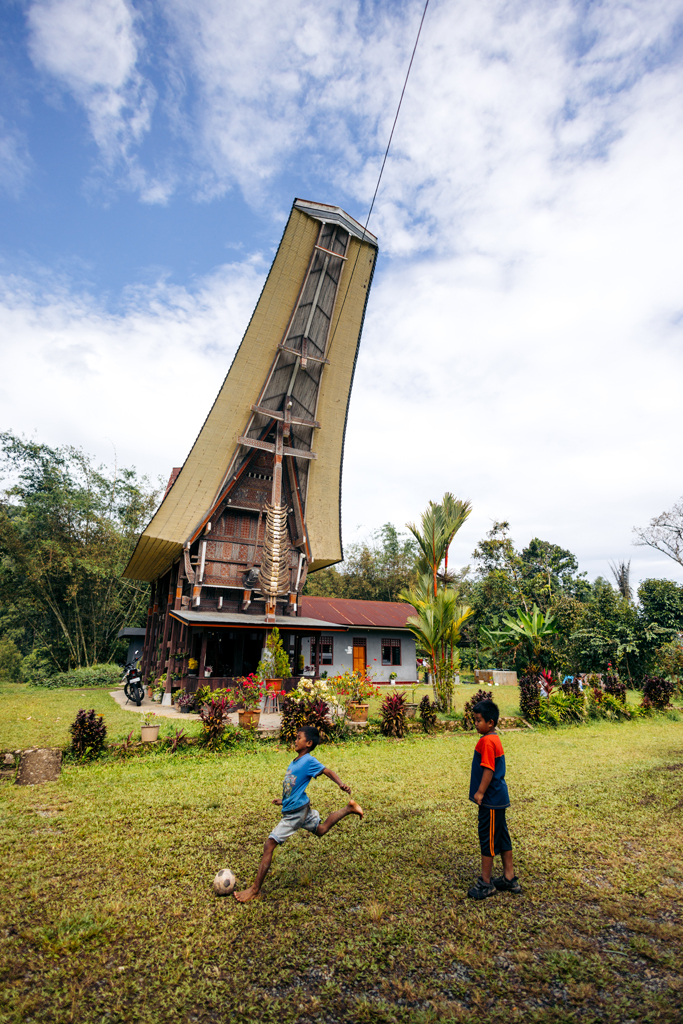
For the next week, I was running around Rante Pao to find ongoing Rambu Solo ceremonies. Rambu Solo is a ceremony for the dead, which is mostly a festive celebration.
I did get a lot of different information about this whole thing depending on where I was, from my understanding, the ceremony rituals vary according to the area/family performing it.
In general, only the most influential family members will get this ceremony. It’s quite expensive as people will sacrifice many animals and it lasts multiple days.
The ceremony I attended multiple days was for a man that has been dead for more than a year. When he died they mummified his body and kept him in the tongkonan waiting to get enough funds to give him the ceremony he deserved.
The first place I went to, it was very slow day, at least to me.

The ceremony is usually performed at home, this is a typical home for local Torajan people, which is usually multiple homes, tongkonan, and the smaller versions for the rice storage.
On this day all they did, while I was there, was to show off the buffalo.
This is quite strange to see. The owners of the buffalo come here to sell them to the family for sacrifice. The stage part is that the owners of the buffalo seem very proud and attached to their animal, even tho they are here to sell them, and as I learned later on, a lot of times the buffalo owner will be the one doing the killing.
There’s a lot of disturbing things happening in this area for an outsider.
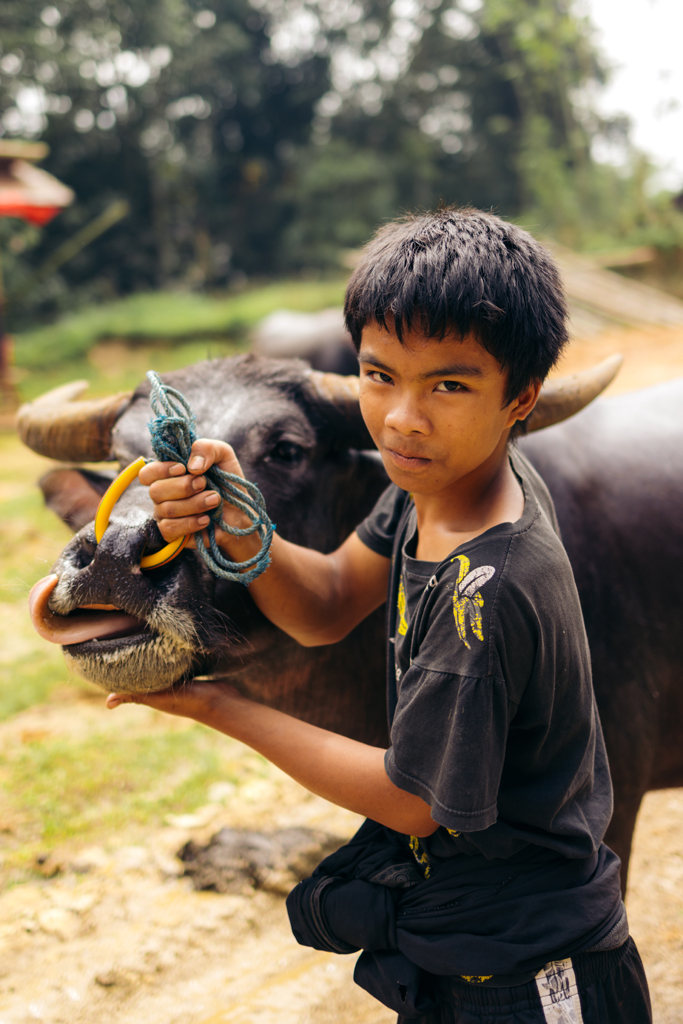
The master of ceremony was calling out the owners one by one to show off their animals.
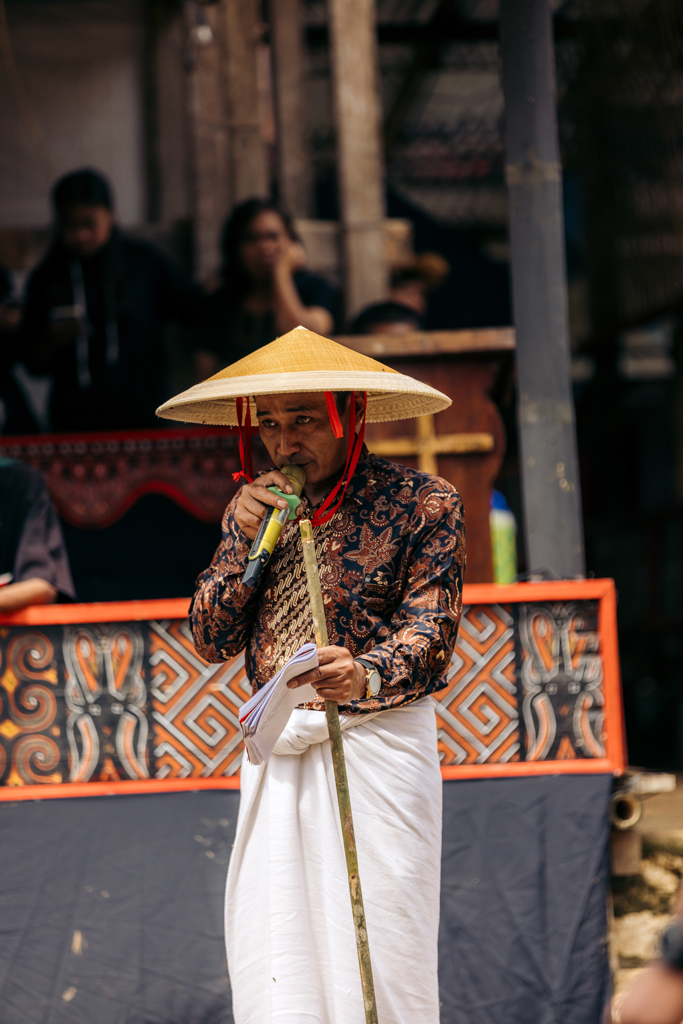
The price range is quite impressive for these animals. The “standard” buffalo will only fetch 1000-1500$ but it can go up to some crazy prices, I heard a lot of wild numbers in the hundreds of thousands, the locals go wild for a white buffalo with blue eyes.
Similar to this but way whiter than this. this one only had a white head, but that will still get the owner a good chunk of money.
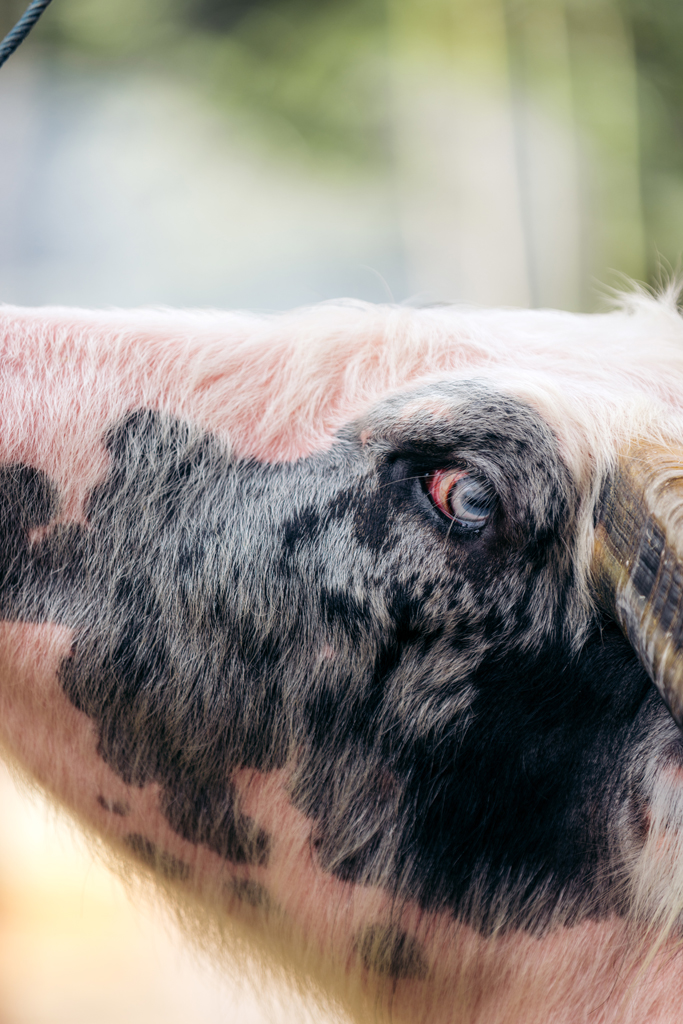

While this is happening, someone is in charge of cooking the pigs that were previously killed as part of the ritual.
The meat was then shared amongst family friends and other people.
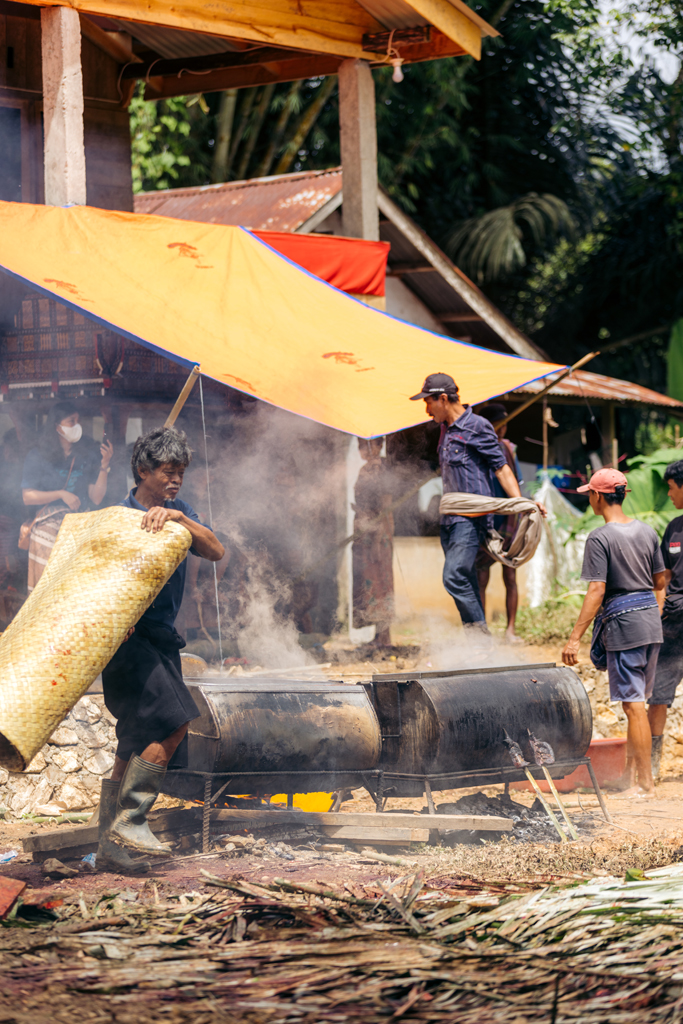
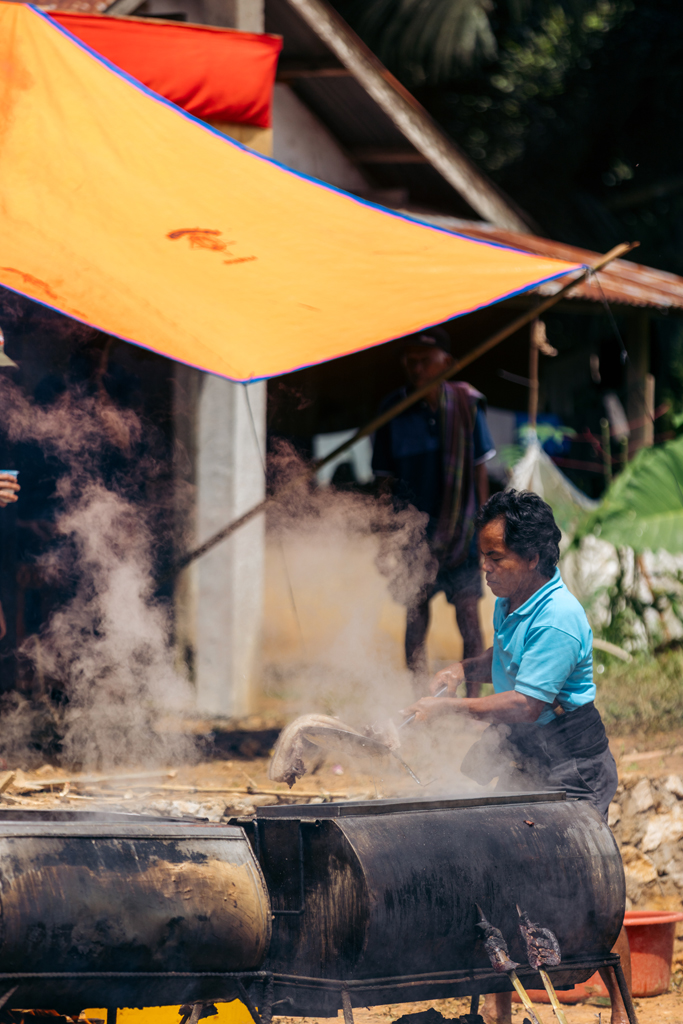
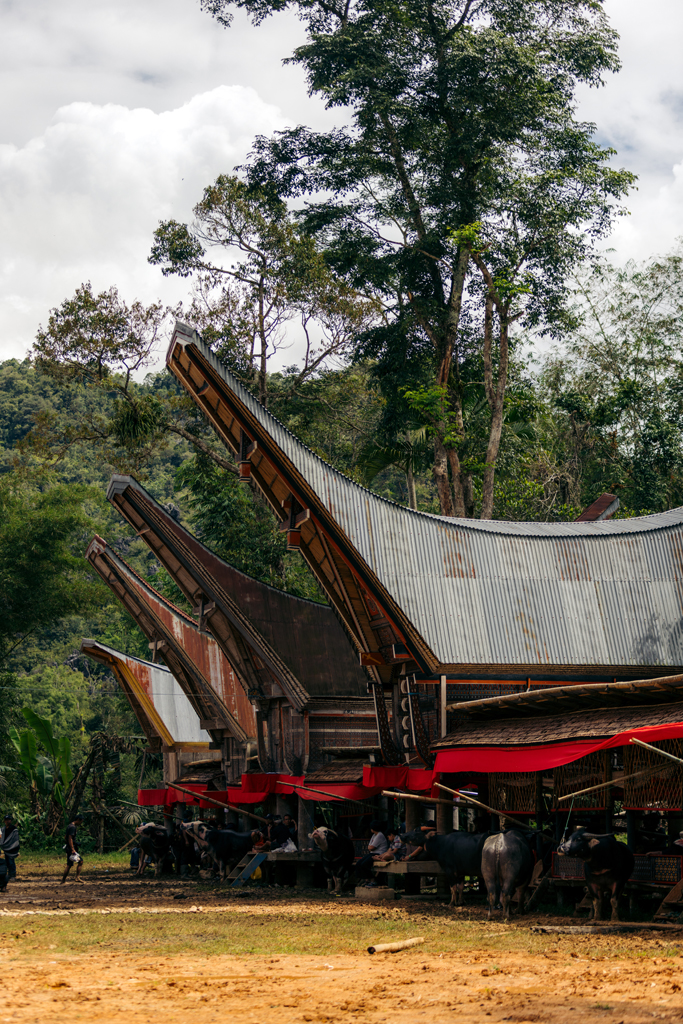
After the pork was shared, nothing happened for a while and I decided to move on. I went into town for some food and coffee.
Tana Toraja is also known for the high-quality coffee beans it produces, the mountain weather and soil are a perfect combo to grow coffee.
If you are in Rante Pao and want to taste coffee brewed by a very passionate and friendly guy, visit Djong Coffee Roastery.
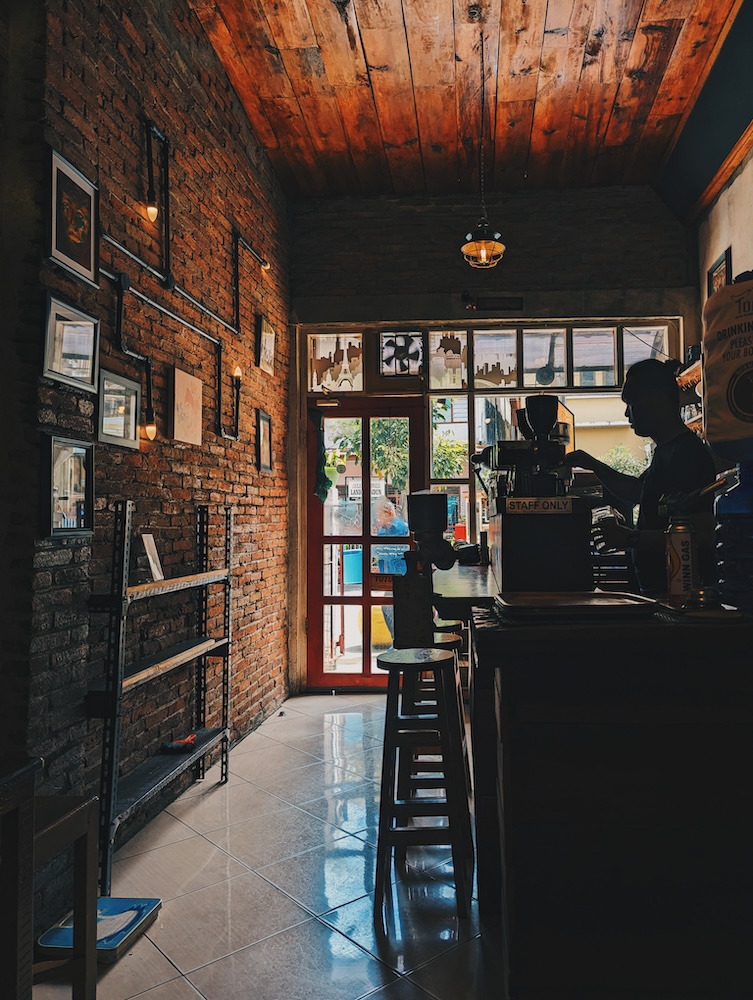
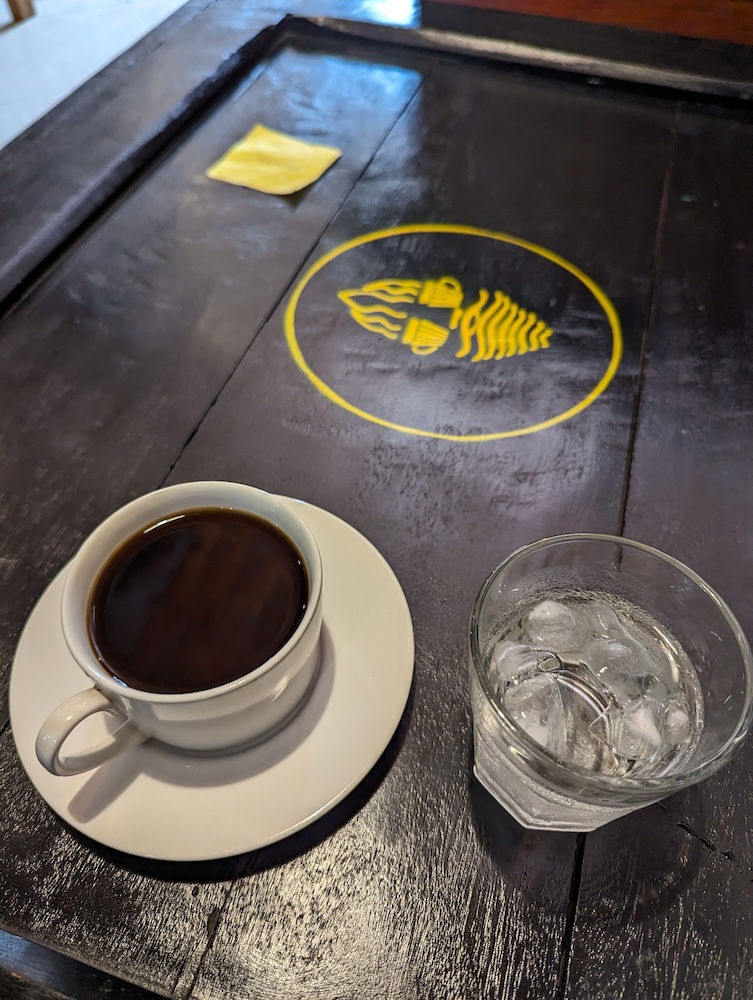
After chatting with Micha, the owner of the coffee shop, and telling him I wanted to witness Rambu Solo ceremonies he called a friend and said there was an ongoing ceremony up in the mountains and that today was the last day of it when they brought the body into its resting place.
He told me to go right away if I wanted to see it! It was about 30 minutes away.
I still had to stop along the way to take a photo or two. Look at this view.

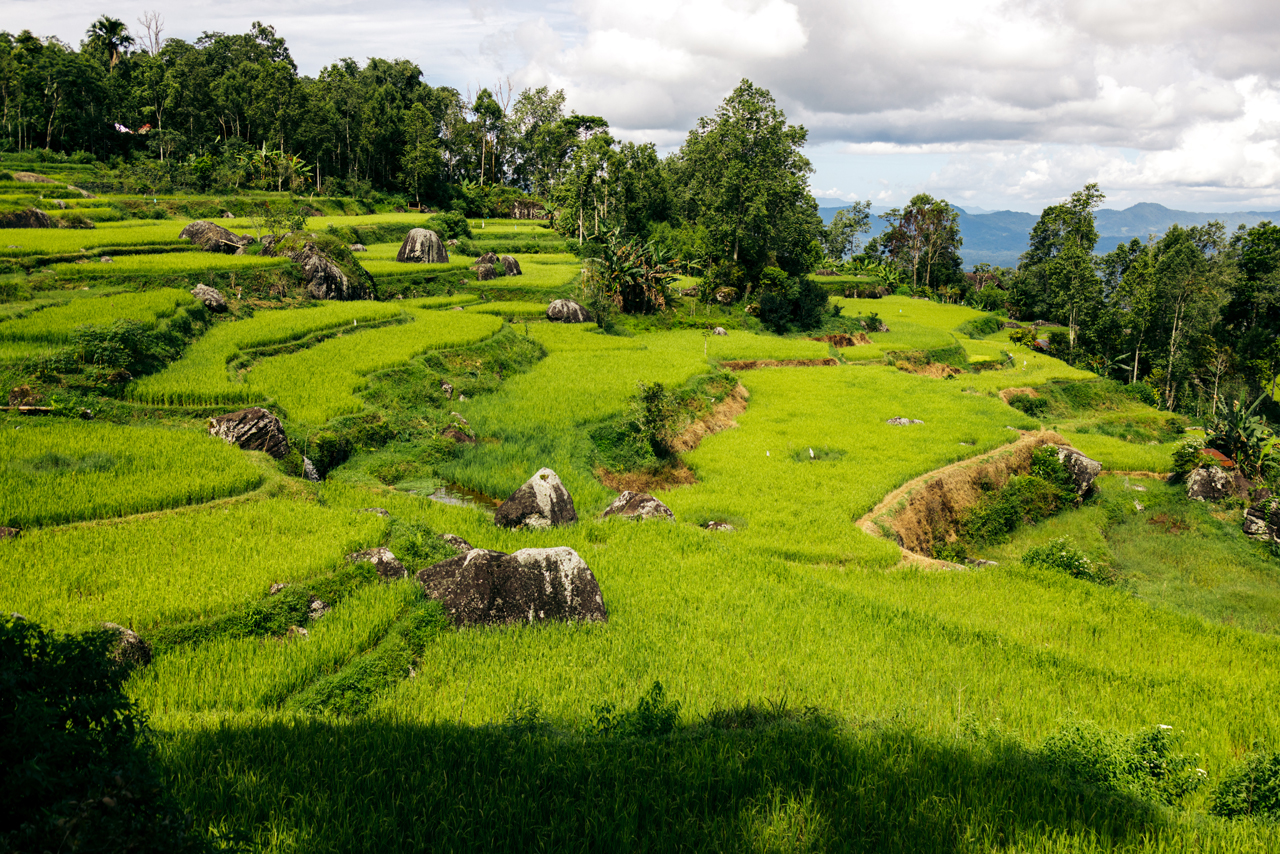
I was a little lost when I got there and by the time I parked the bike and figured out where the entrance of the village was, the carriers of the body were coming out of the village, or should I say home, this was such a big home that it looked like a village.
I was able to get this photo right on time, very lucky.
You can see the coffin at the bottom of the small tongkonan.

This was another very special thing to witness to me. As they were carrying the coffin to the resting place, in a rock cemetery, the people were thrilled and celebrating this event.
Everyone was throwing water and mud at each other during the carrying process, for about 30 minutes.
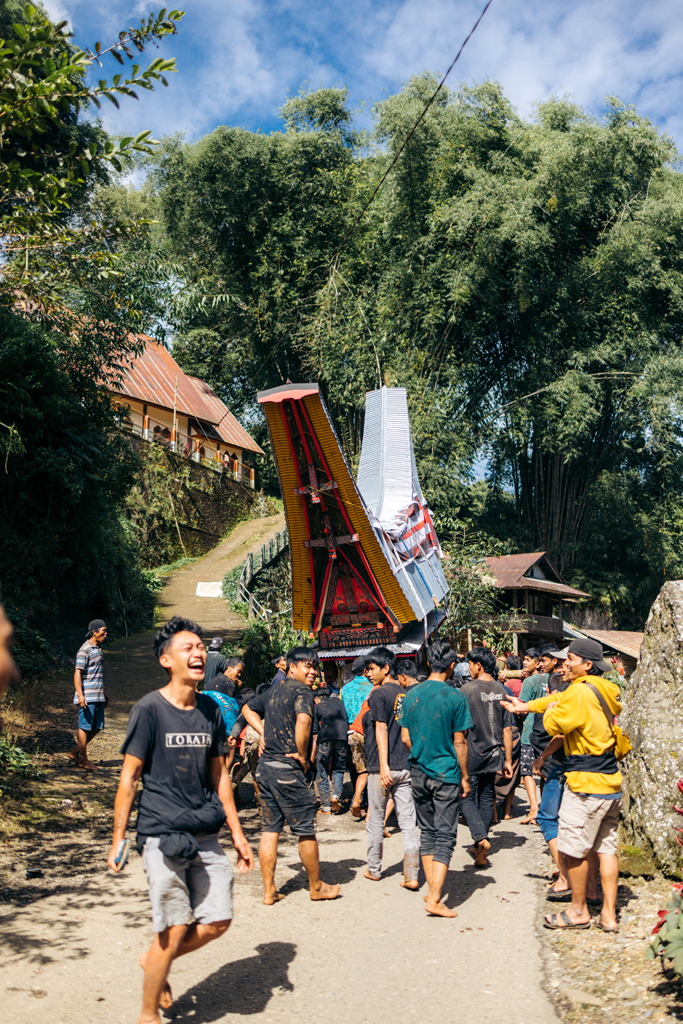

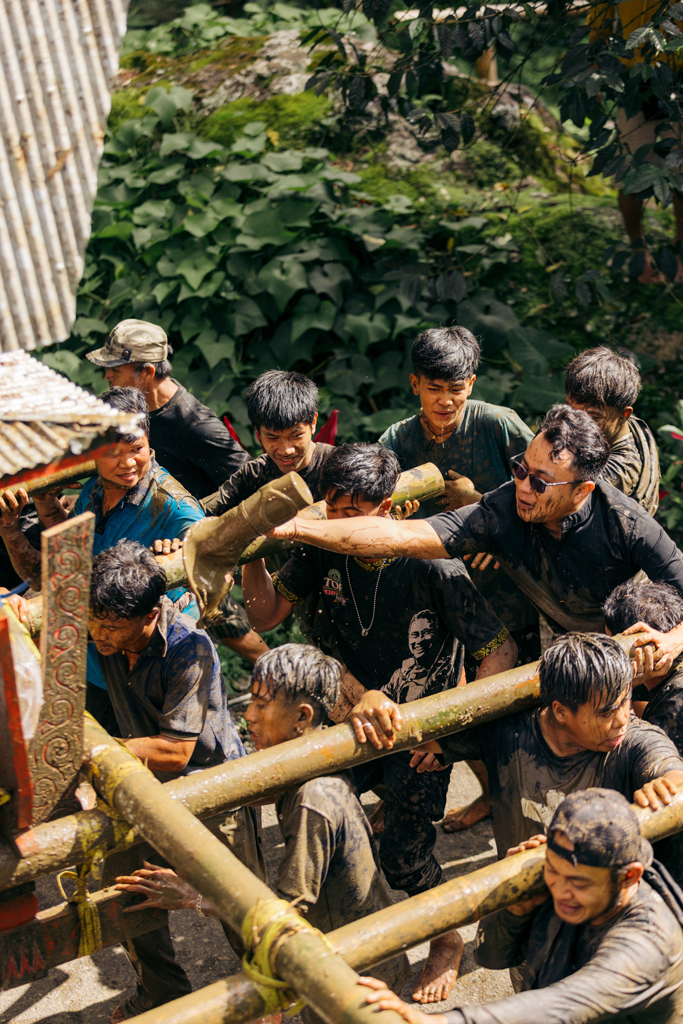
Amazing place.

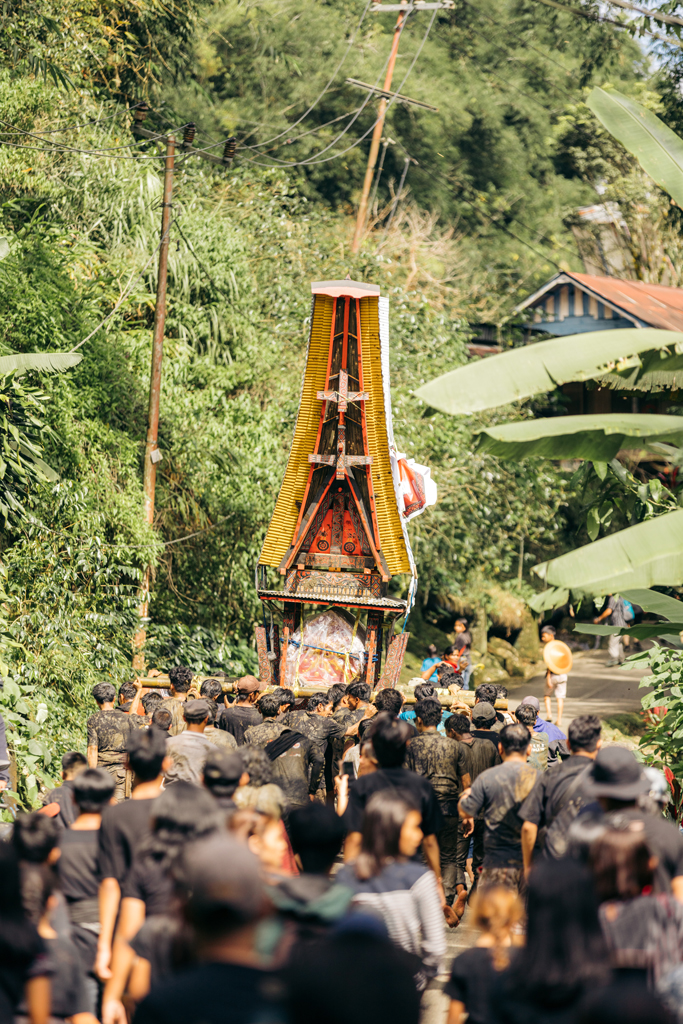
Onlookers
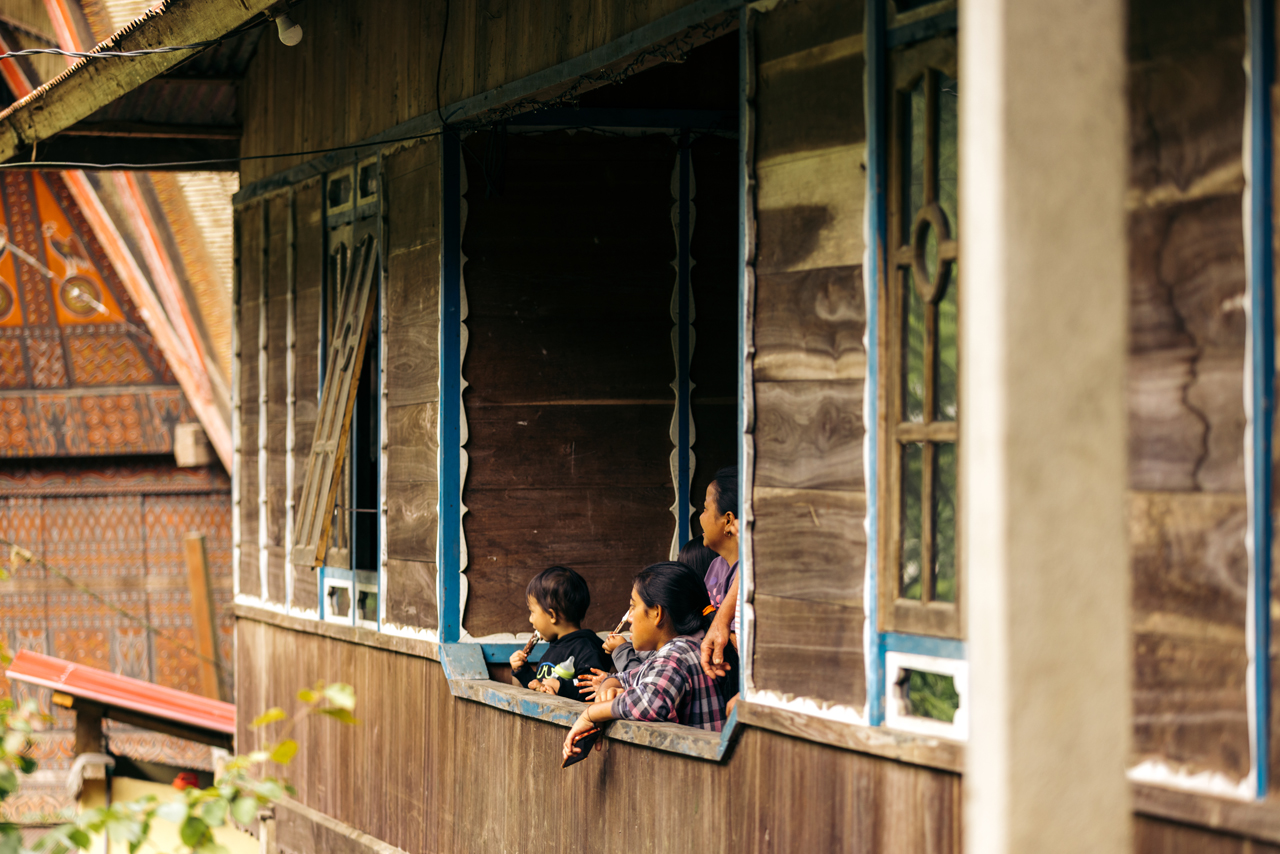
Smiling faces during this ceremony
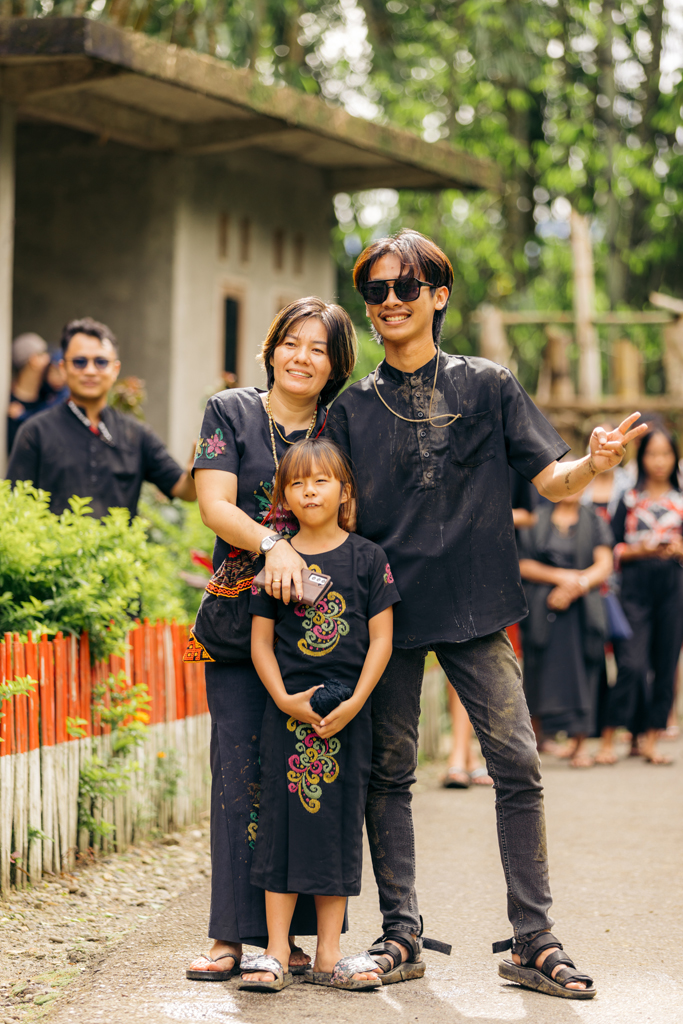

Moving the electric wires out of the way with a bamboo

This big rock is the resting place for this person.
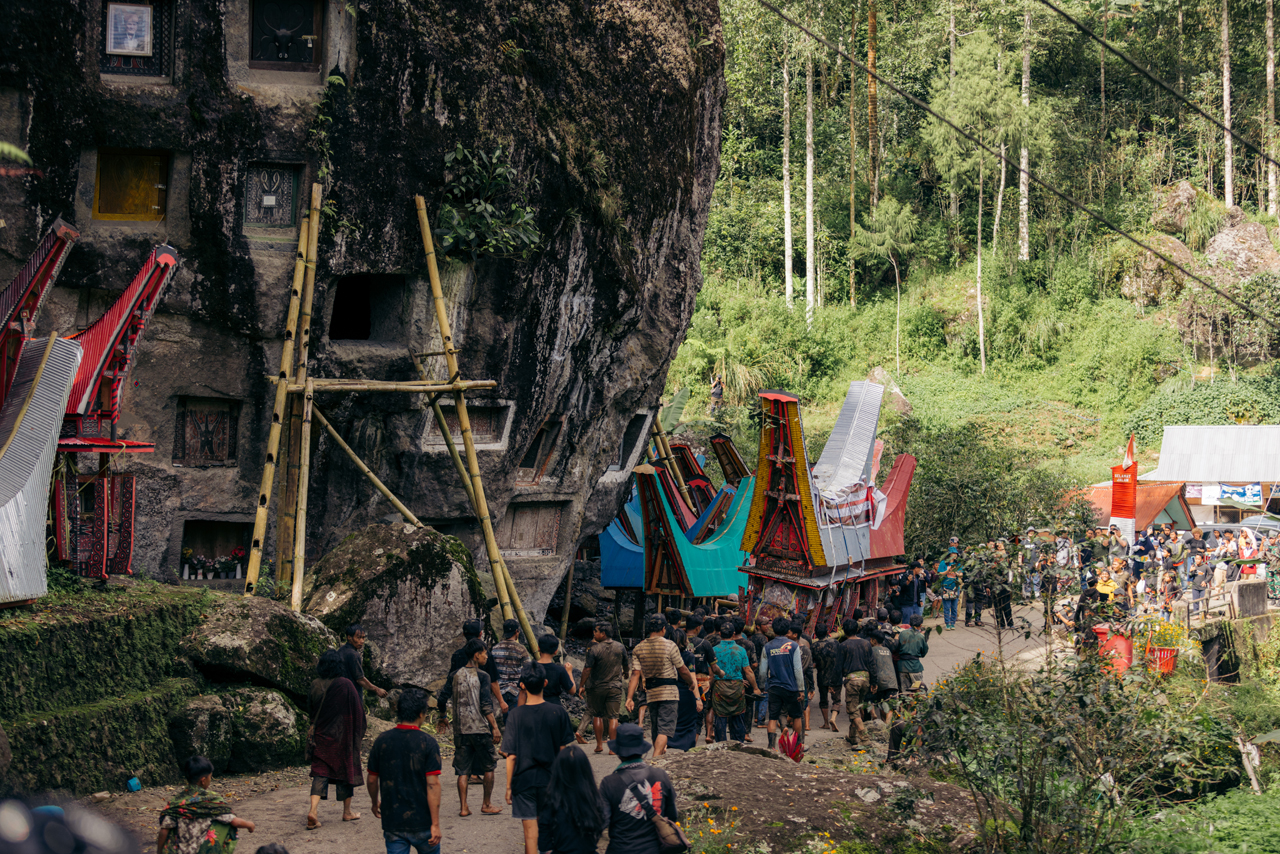
The point of view from the drone.
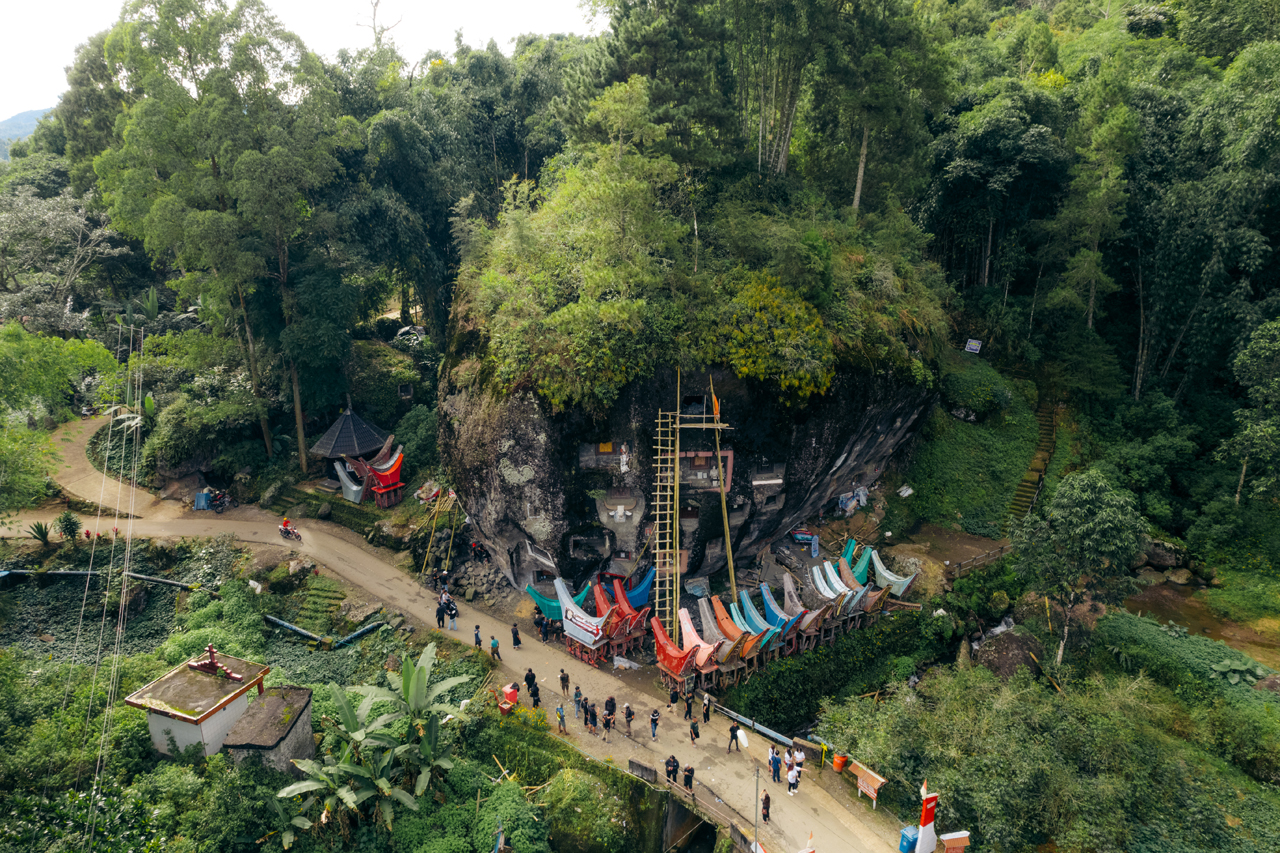
People dig in these rocks all over the area to use them as “cemeteries”. They usually share the holes with other family members.

Family members say goodbye one last time.
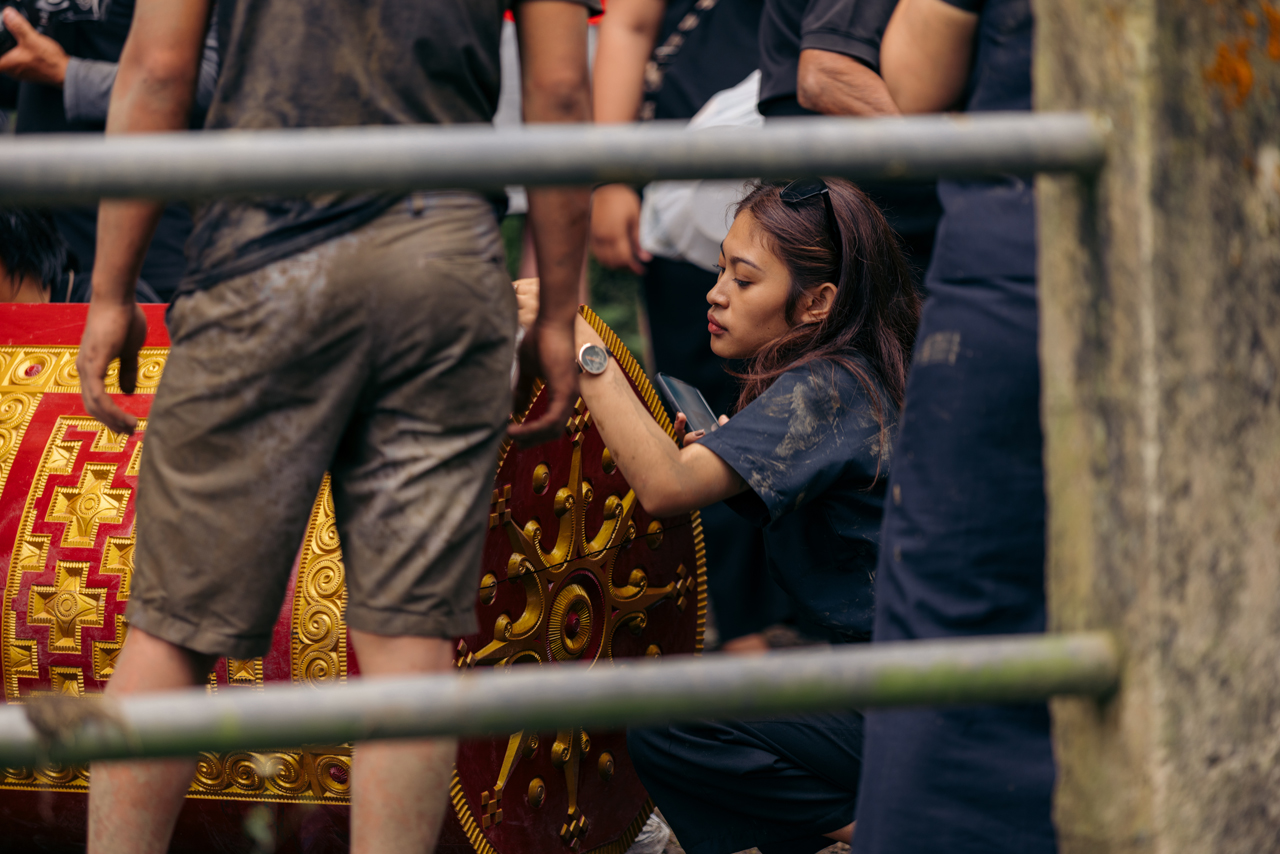
And the final process.
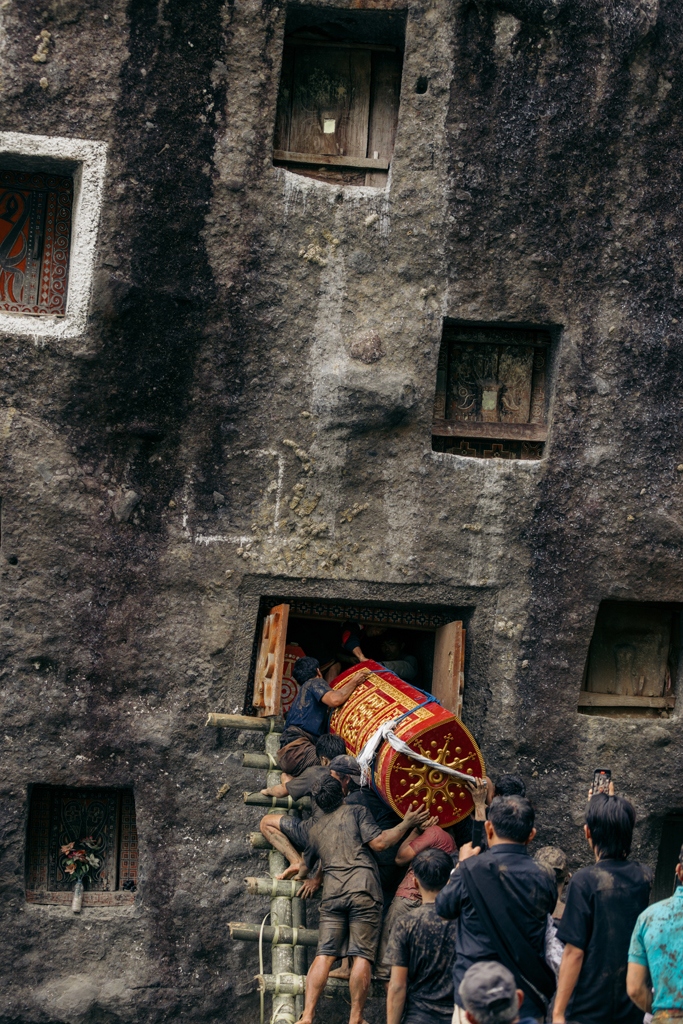
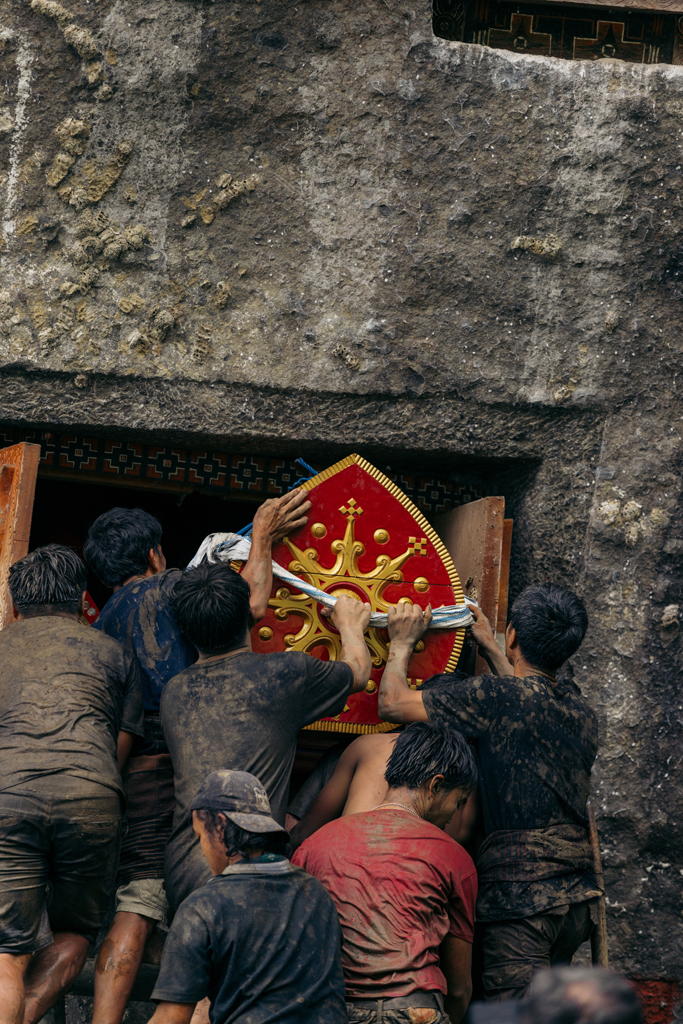
Again, very happy people.
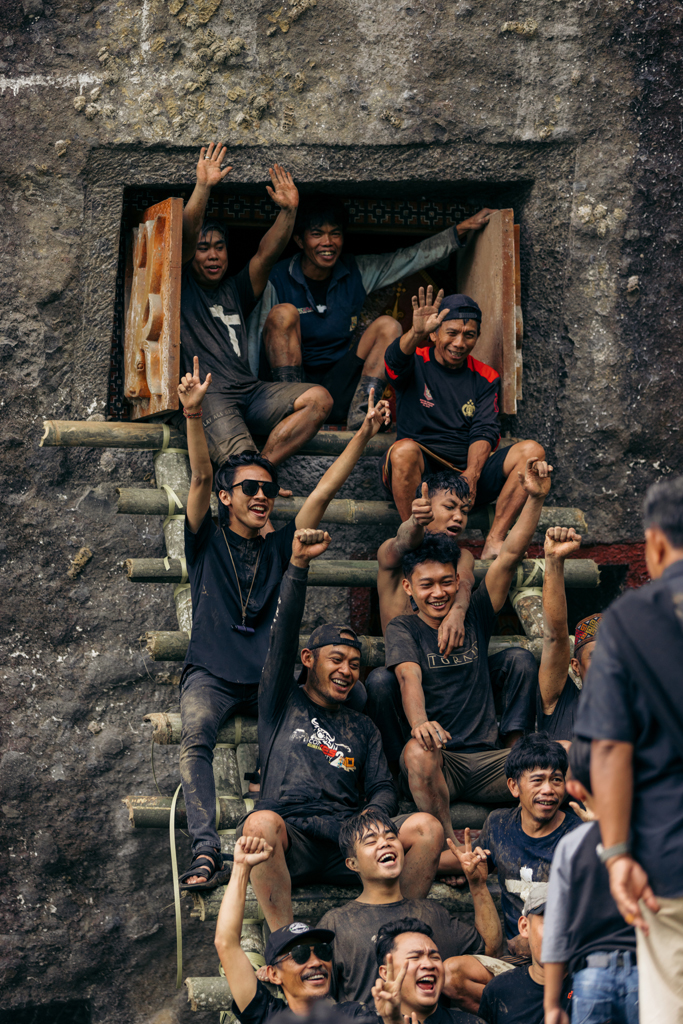
This was such a great experience, this is the kind of thing that makes me return to Indonesia a lot, the culture and traditions is just something so different.
Here are some more photos of the area from the drone.
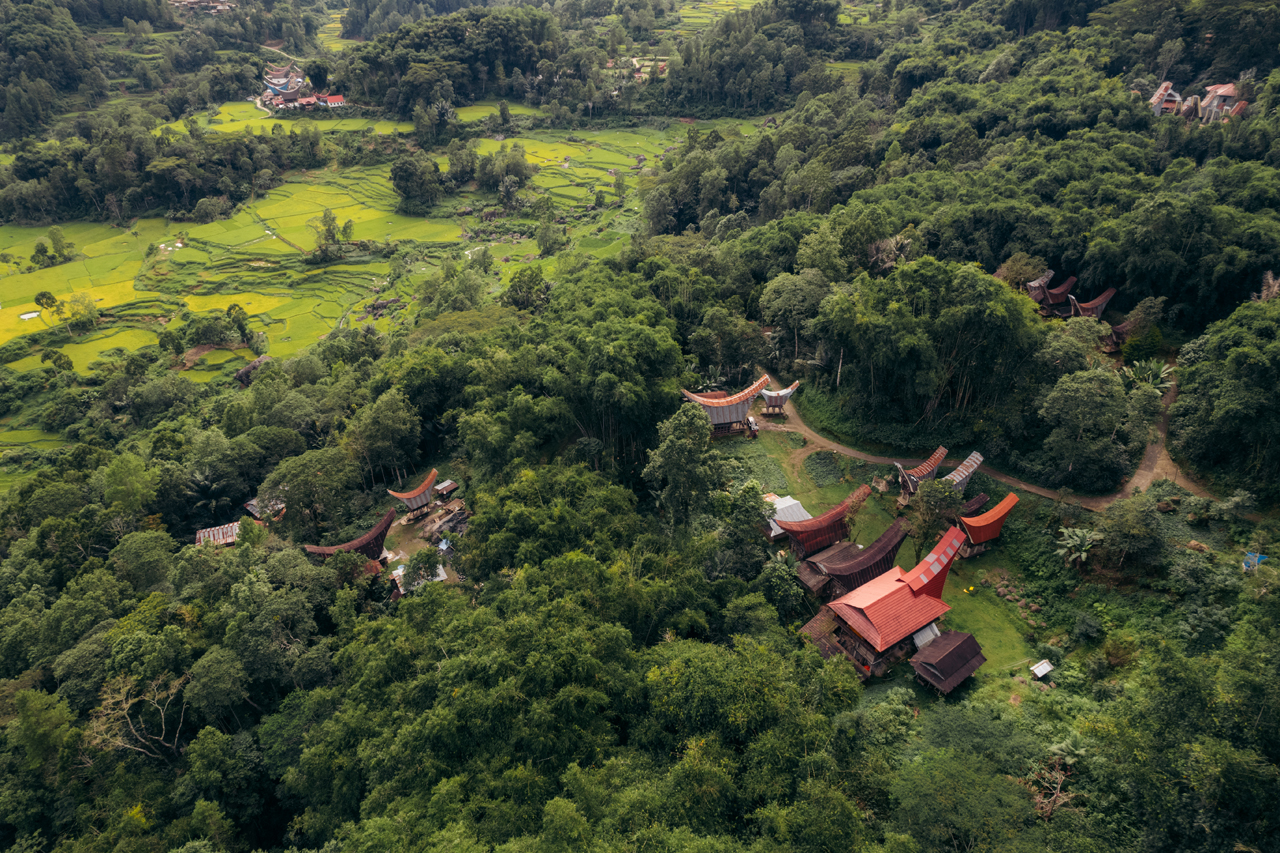
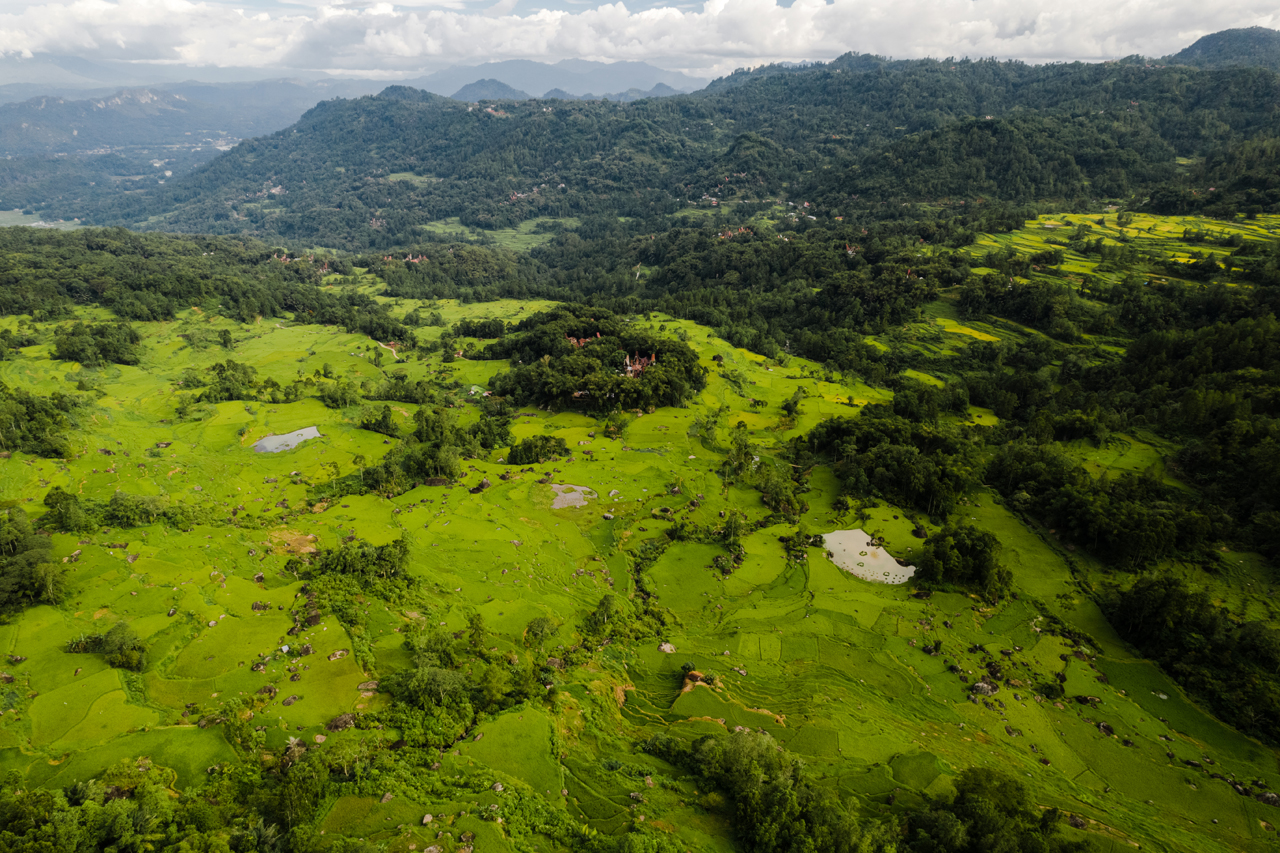


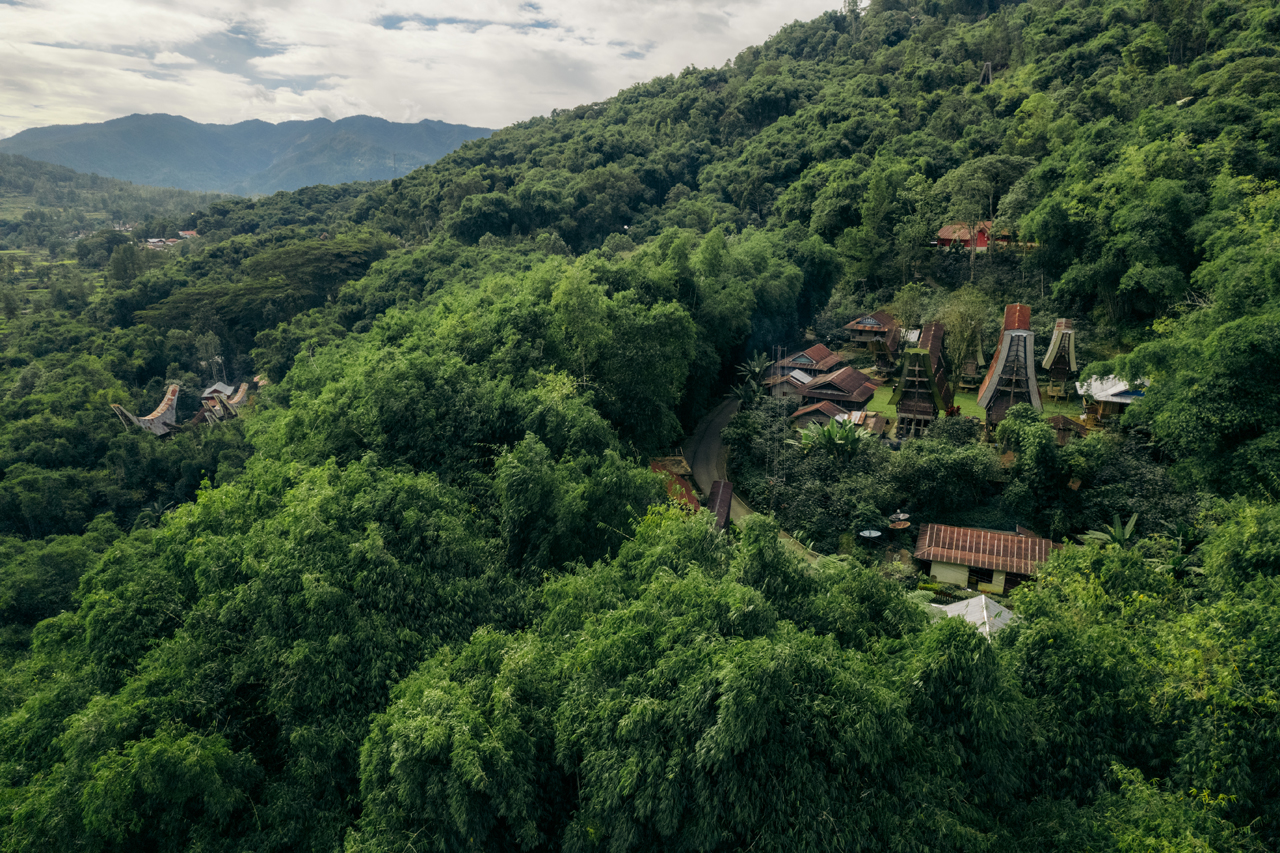
Rural Tana Toraja area
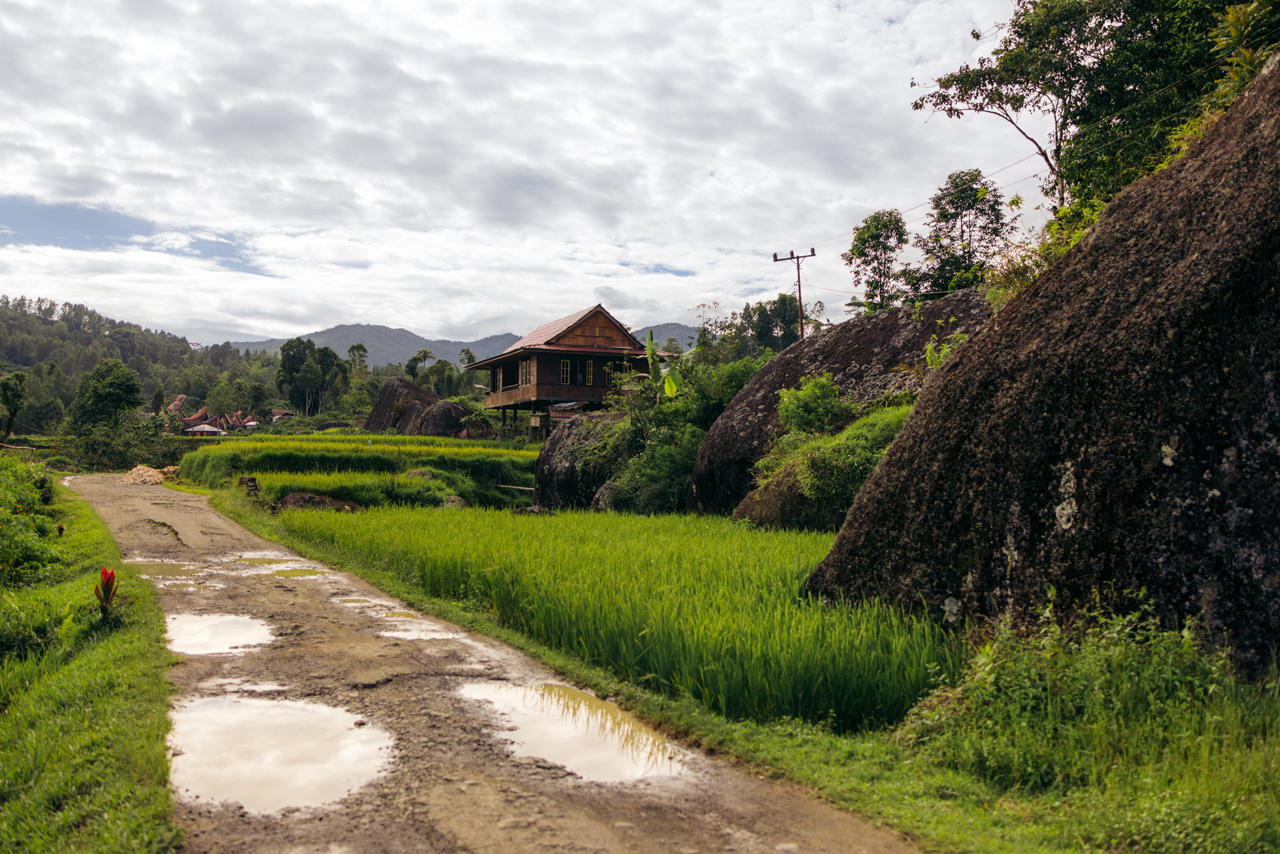
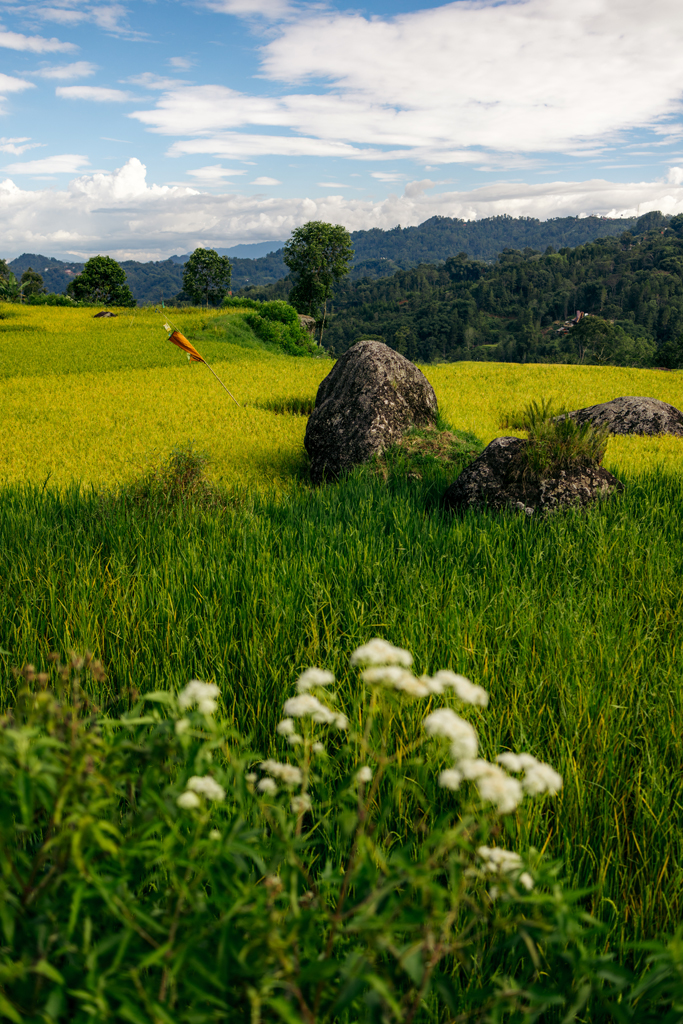
On the way back to Rante Pao I took a longer route to more of the mountains and stopped by Lolai area.
Amazing views again.
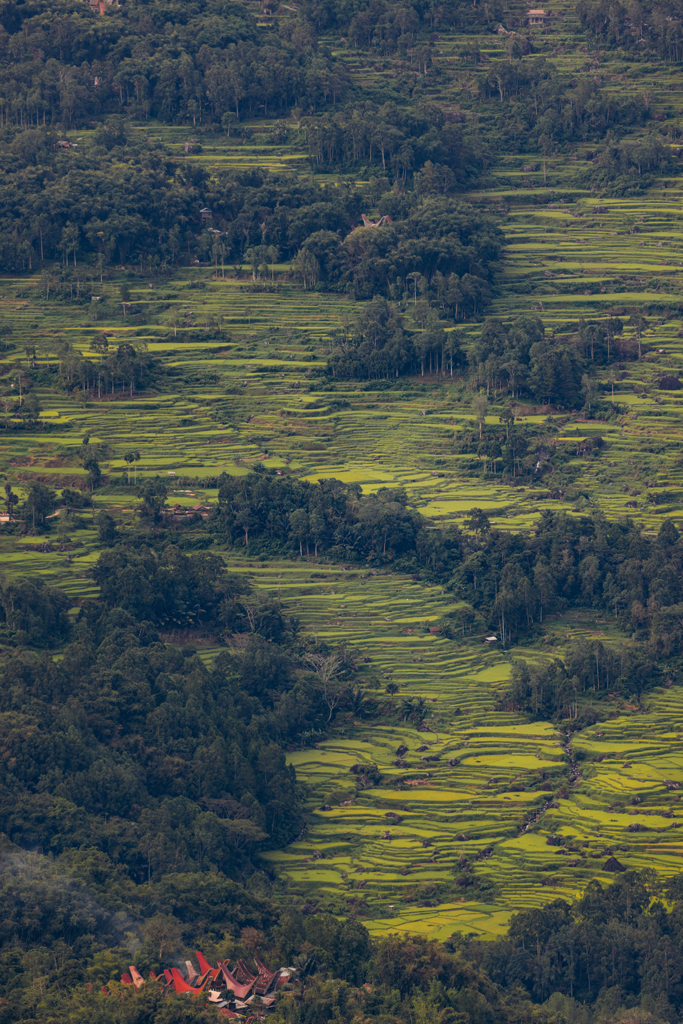
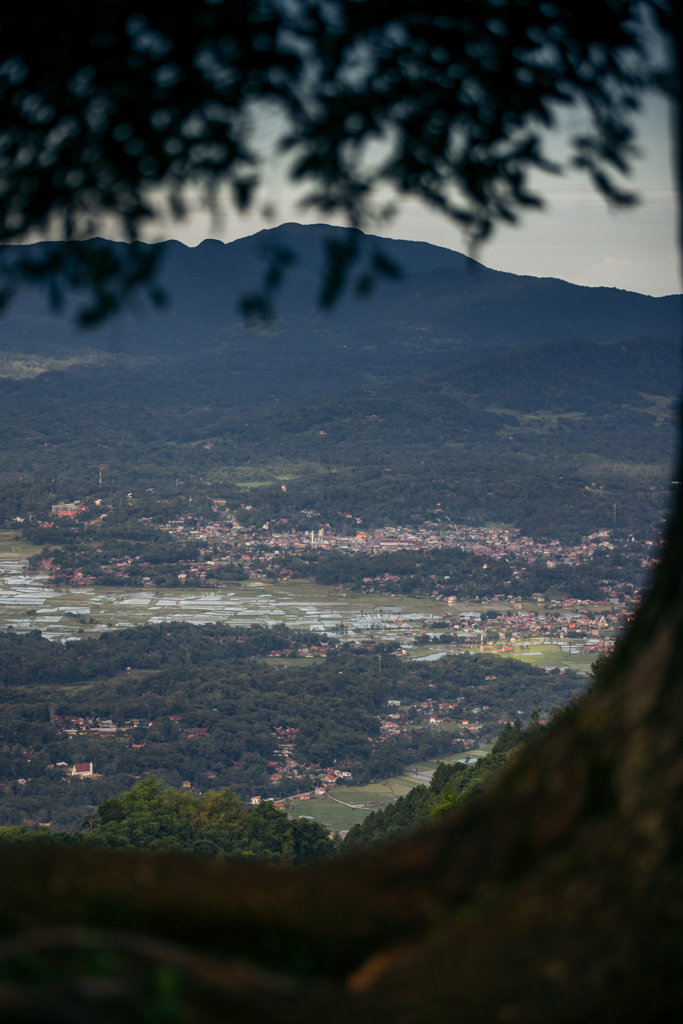
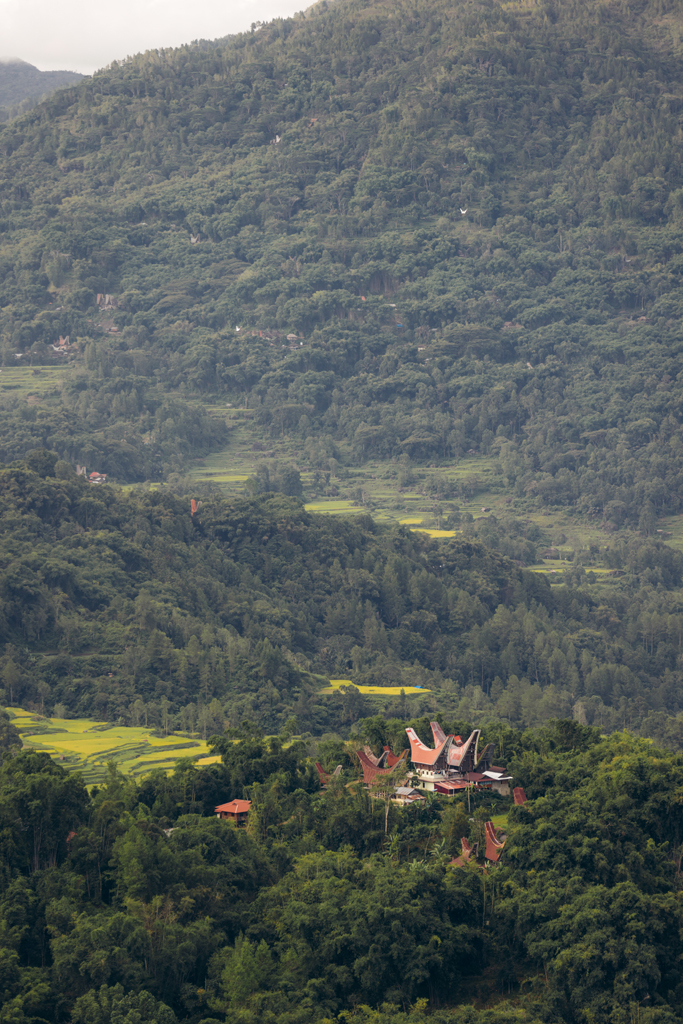
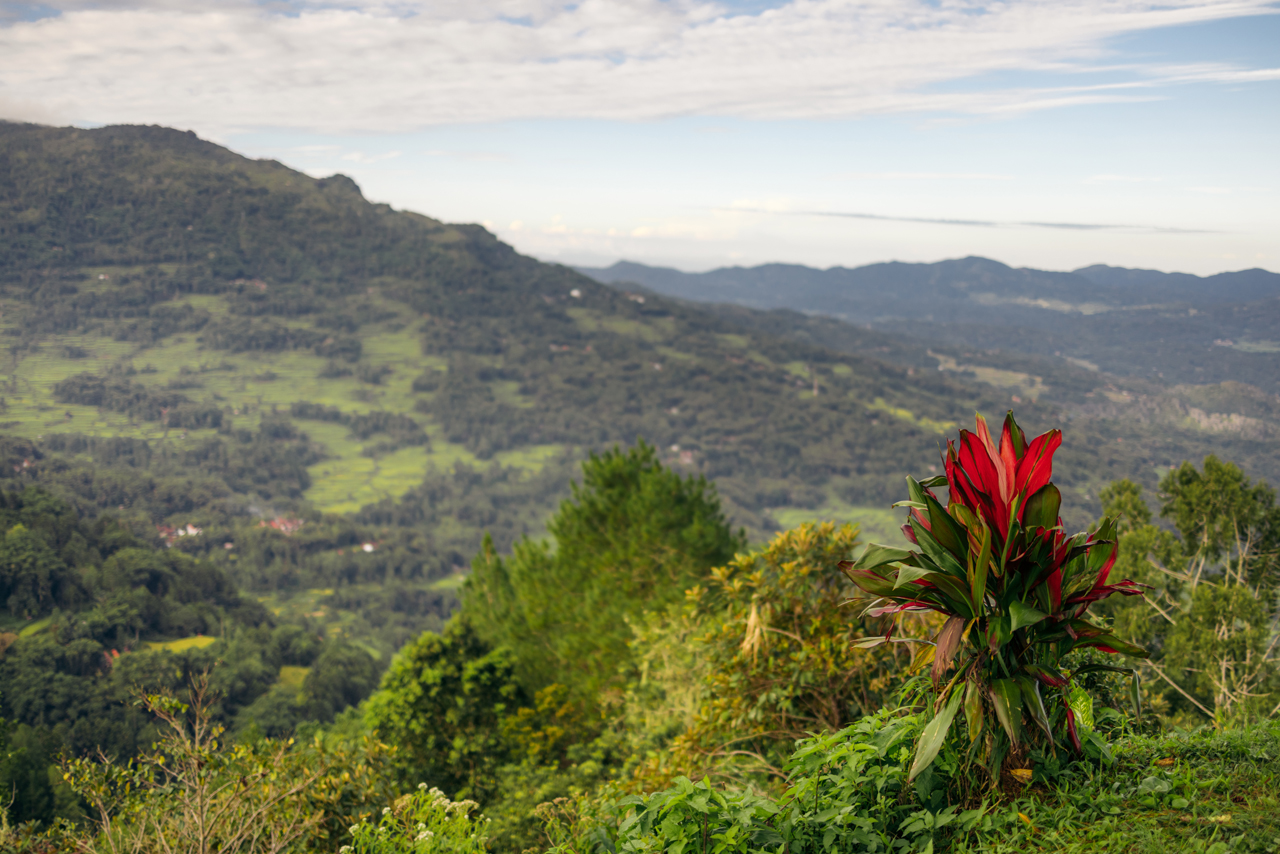

What a day!
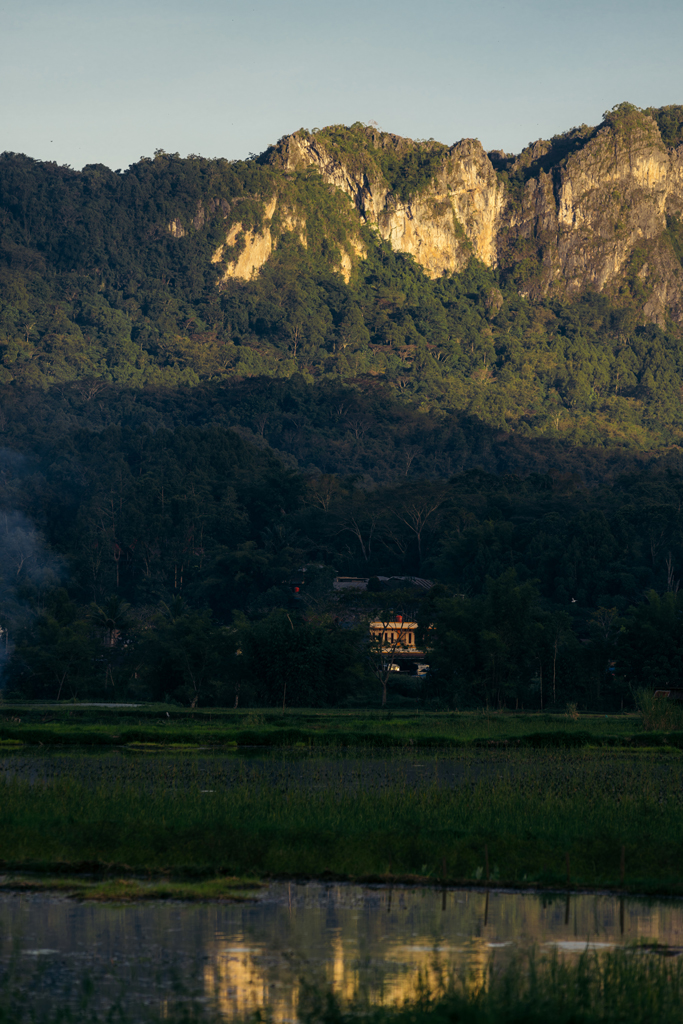
The next morning I went back up the mountain for sunrise at Lolai Tongkonan Lempe, a bit of a tourist spot to watch sunrise over the fog clouds, very cool to look at.
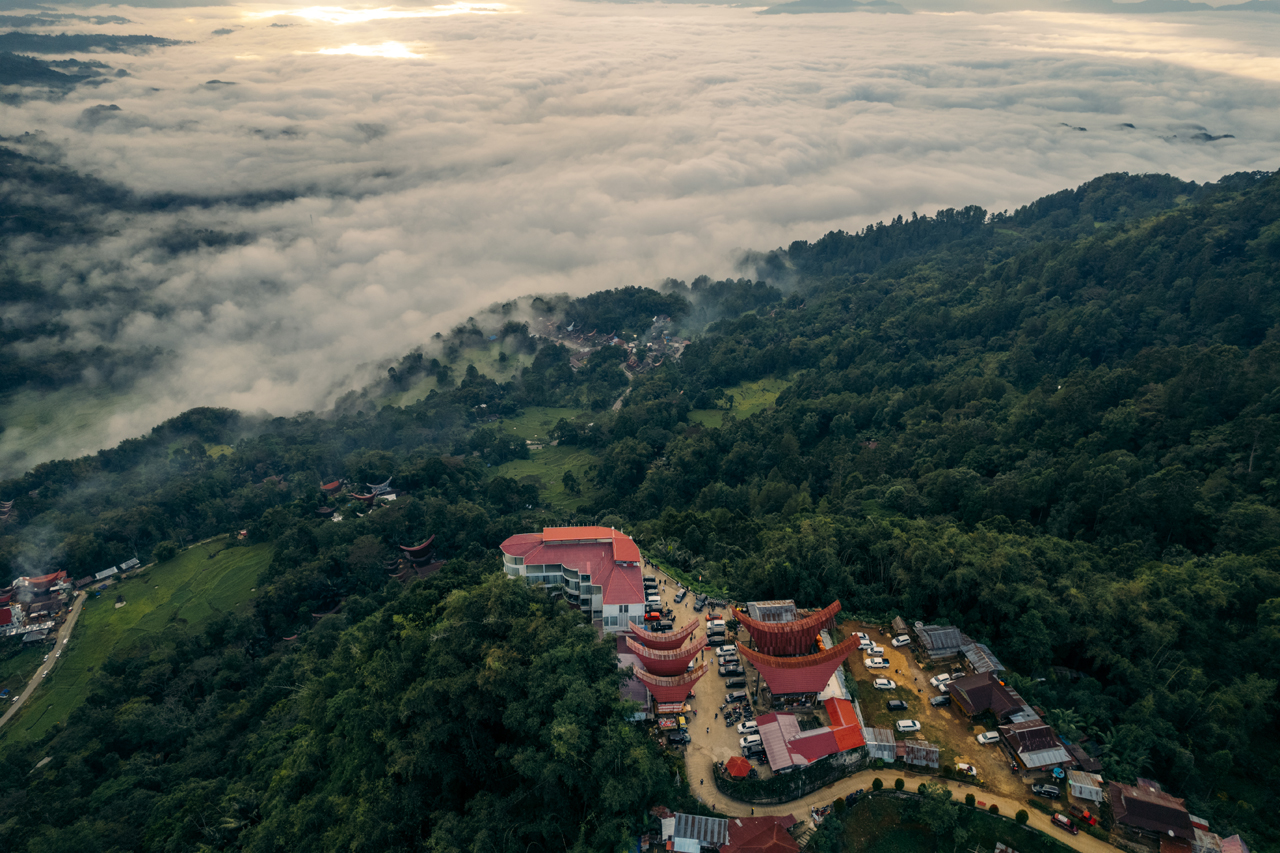


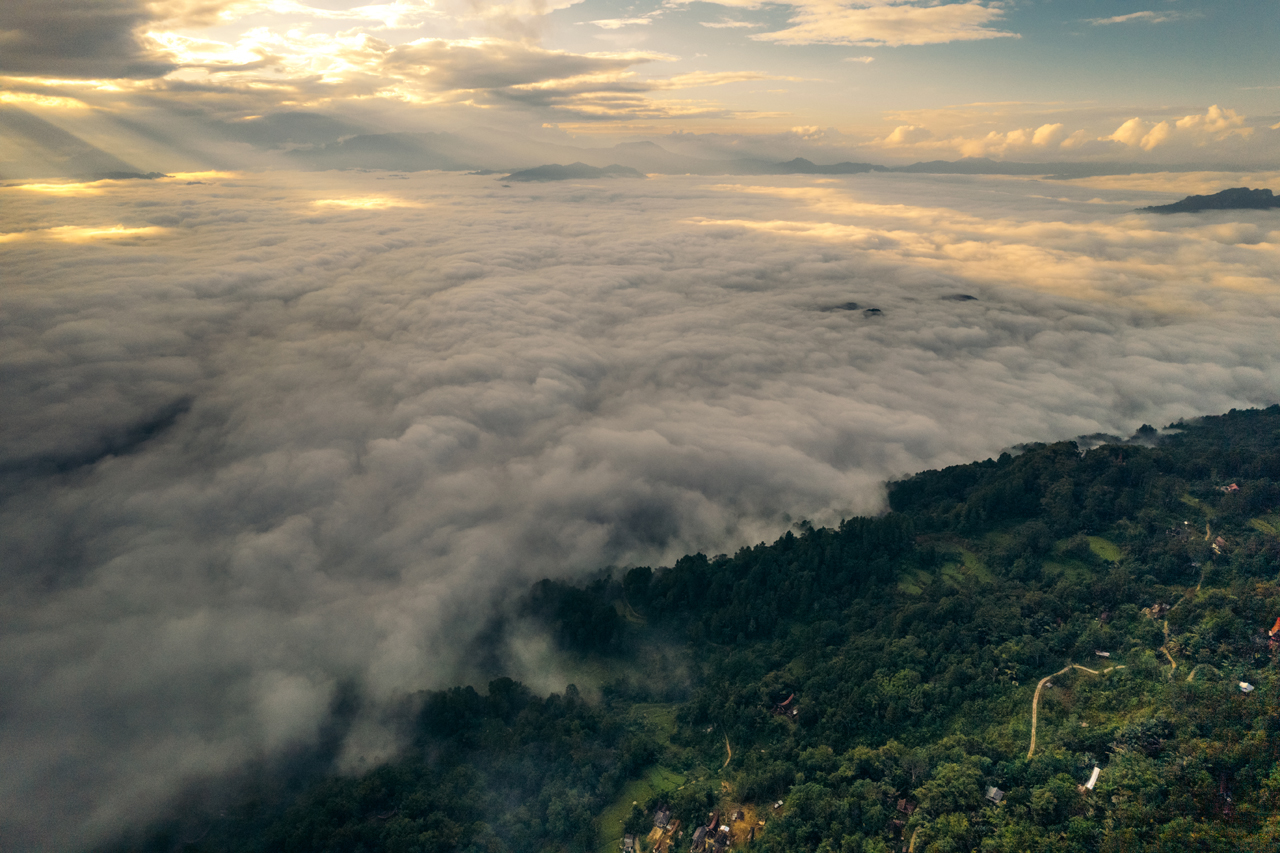
This was well worth waking up for sunrise.
The next day it was Buffalo market day, this market is supposedly not every day so ask around to make sure it’s happening before you go.
Drone view of this market.

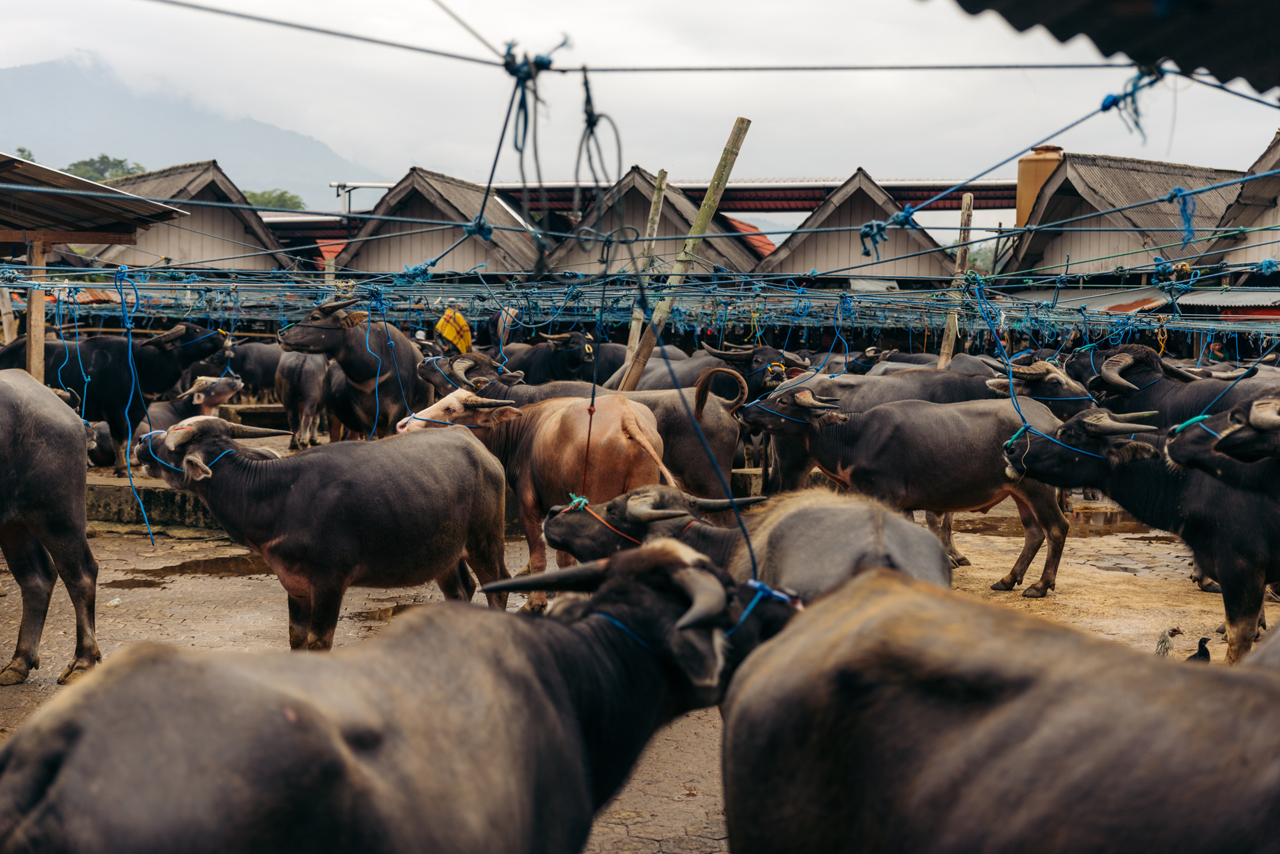


A lot of funny characters at this market.
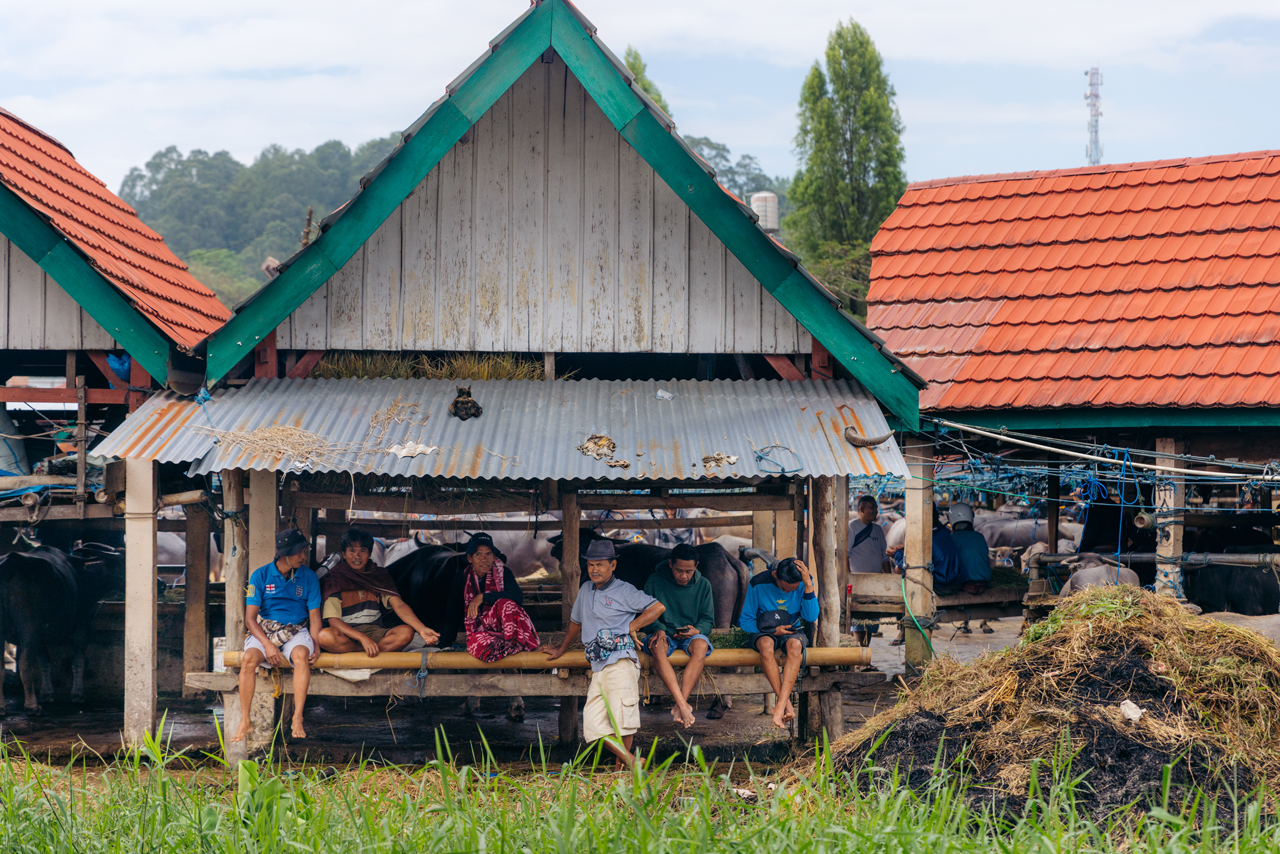
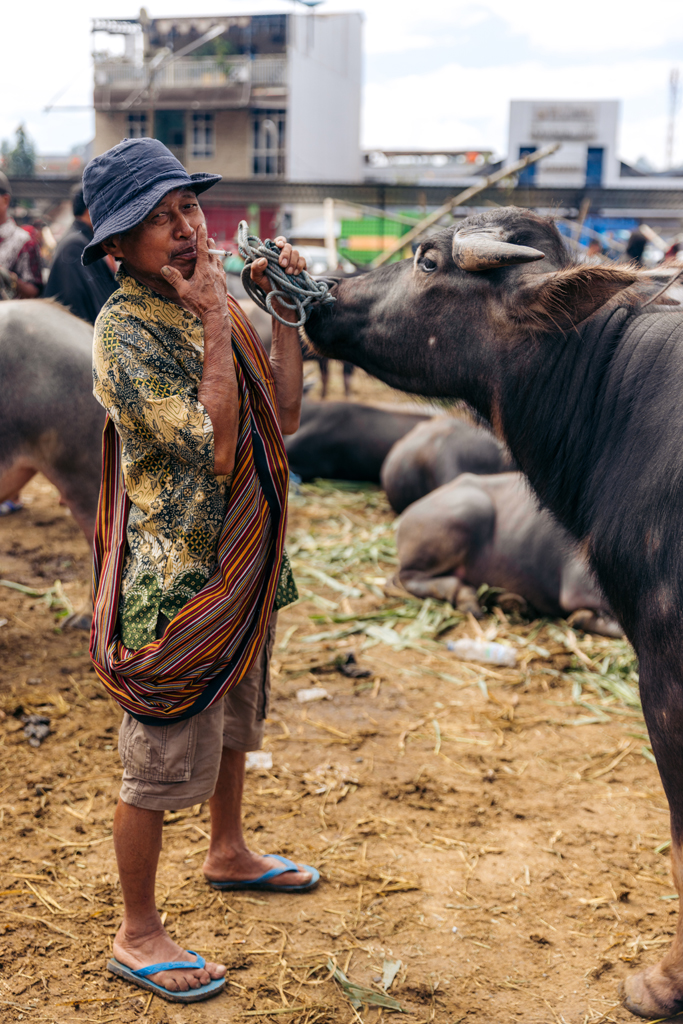

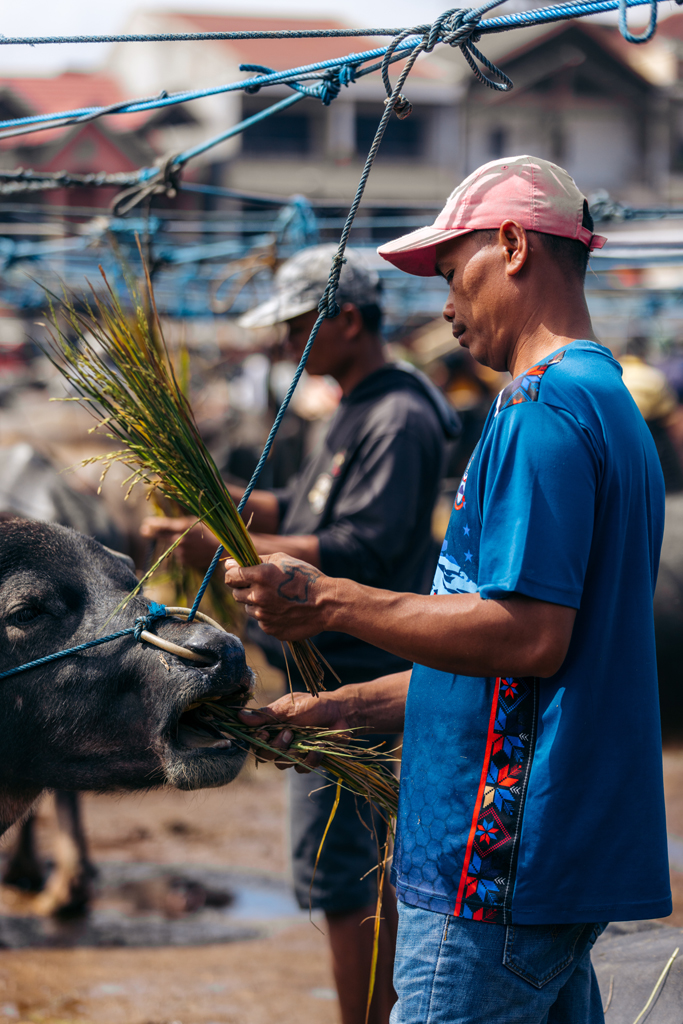

This guy was very stylish.
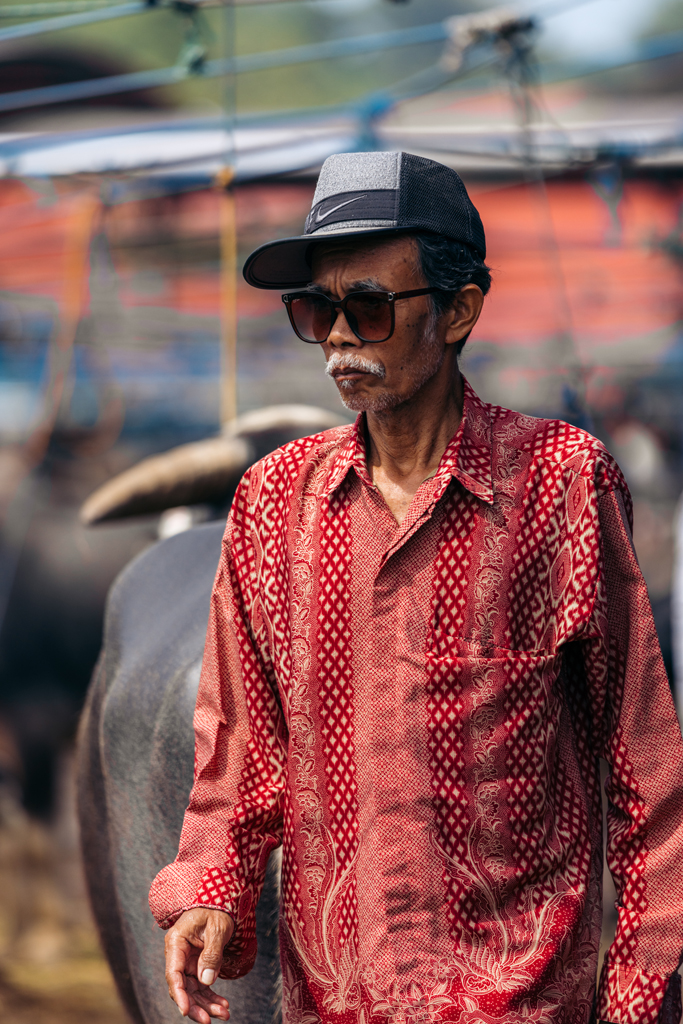
Entertaining place if you have time, but not really need to visit unless you love to see tied up buffalos.
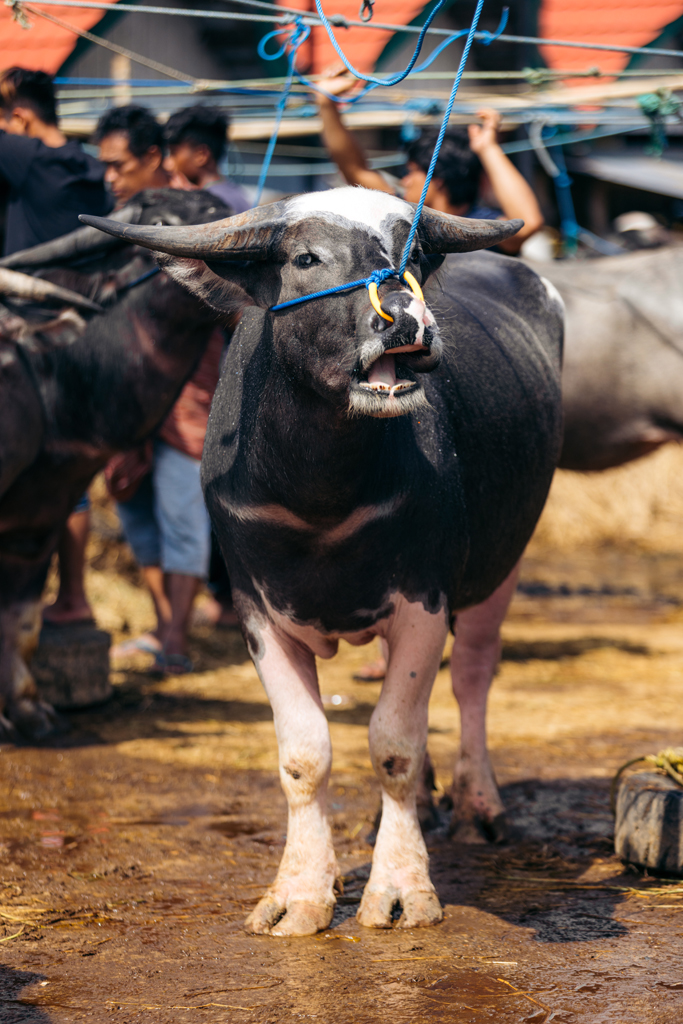
After that, I visited the local tourist office and they pointed me to another ongoing Rambu Solo ceremony.
The people at this Rambu Solo welcomed me like a family member, very curious about where I was from and also giving me coffee, food, and ballo, the local alcohol.
In the Toraja lands of South Sulawesi, their version of tuak — made from fermented sugar palm sap, is called ballo.[12] In Torajan traditional ceremonies, rituals and celebrations, ballo is always served, either as a prerequisite for the ritual; as an offering for ancestral spirits, as well as for drinks for guests. Ballo is also commonly consumed by the neighboring Bugis ethnic group.[13]


After lunch, I was fortunate to witness another part of the ceremony, the buffalo fights. I saw a lot of betting happening, and had to get in the action!
I had a 250 000IDR bet going on with a local guy.

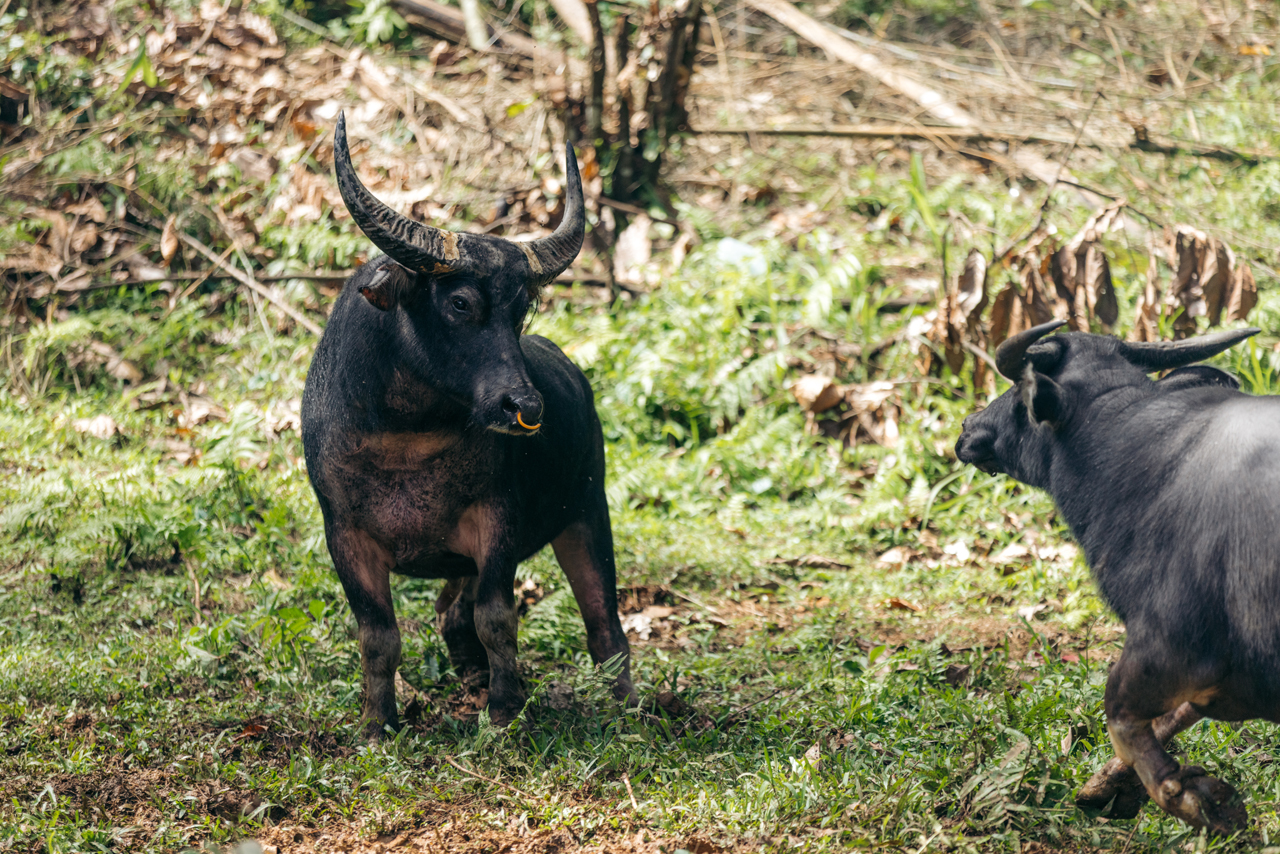
The way this works, is the buffalos go head to head and once a buffalo feels like he had enough he runs away and the one standing there is the winner.
I was pretty close to the action as you can see, you have to be very careful not to be in the way of the buffalo running away.
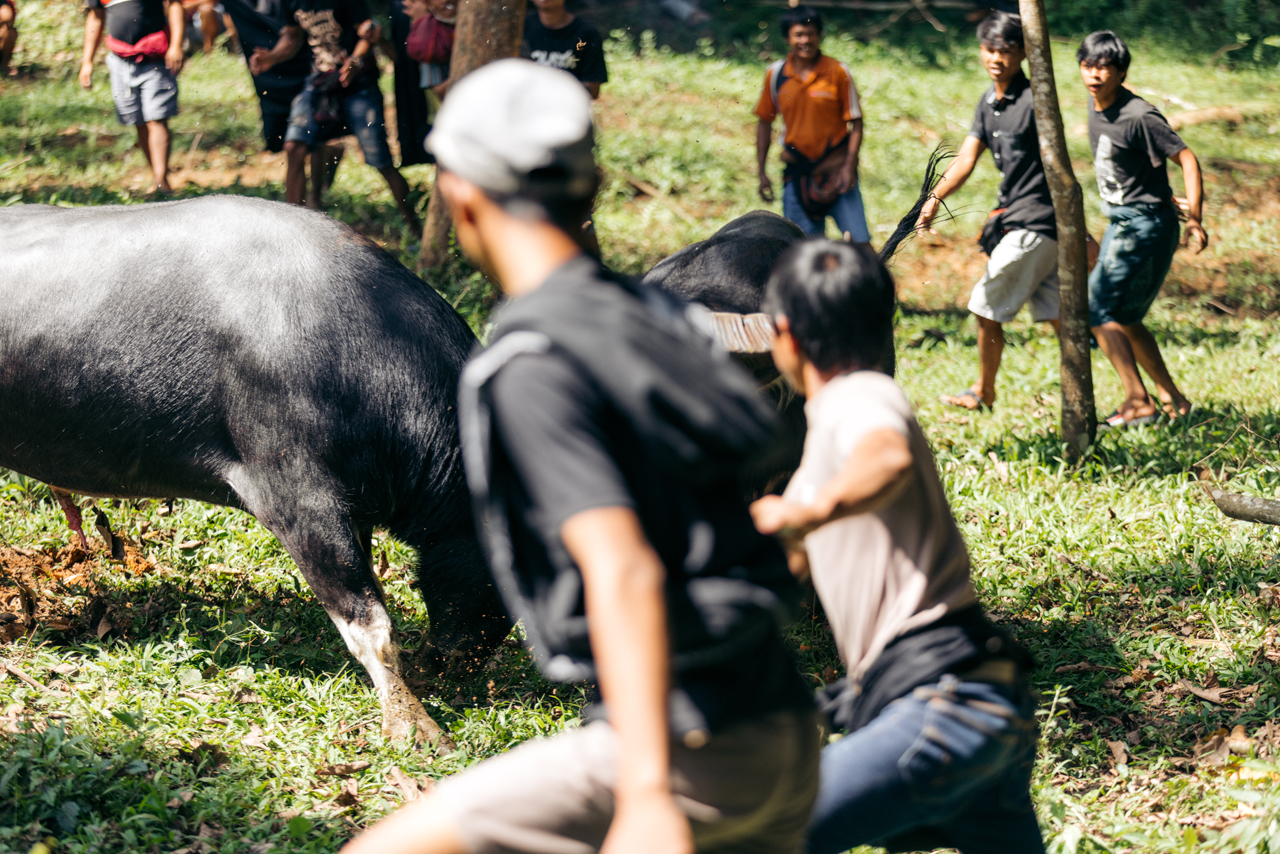
The ceremony was honoring this man.
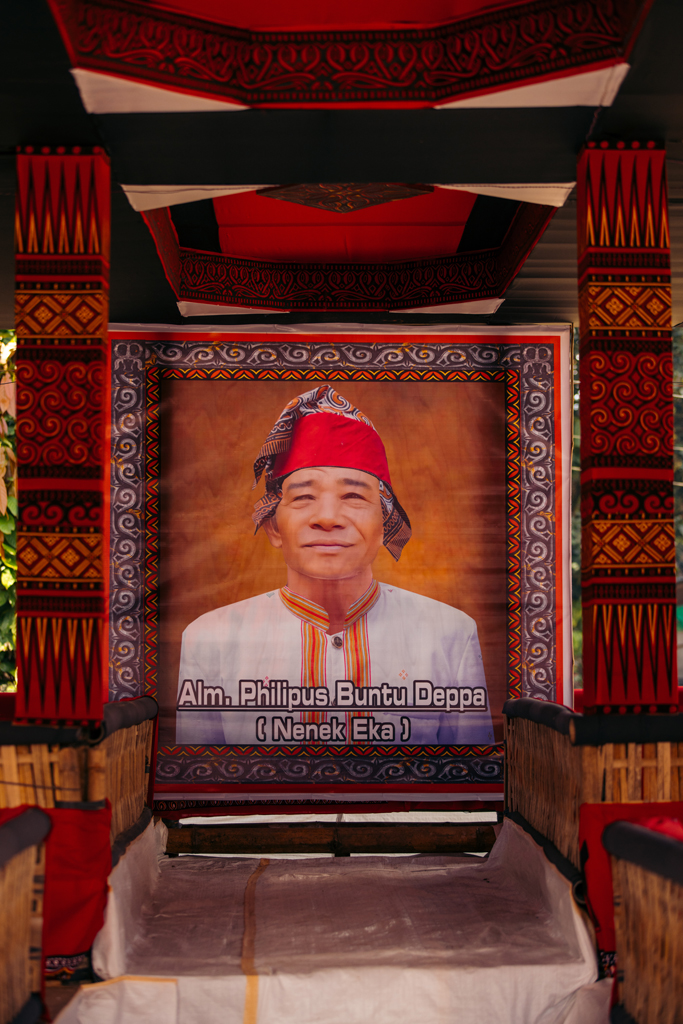
Later that day they slaughtered a Buffalo, but this was not the main slaughtering day.
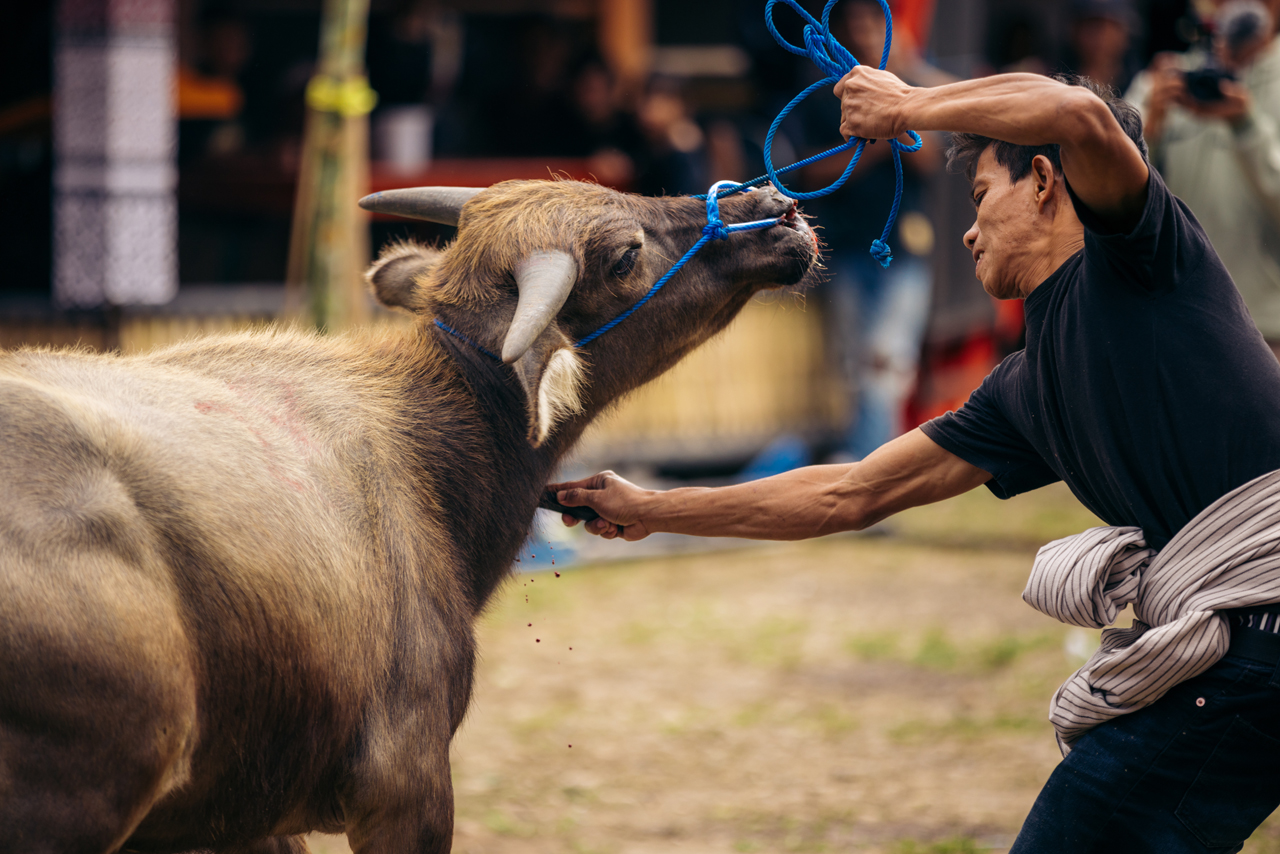
Business as usual around here, kids are not even bothered by this.
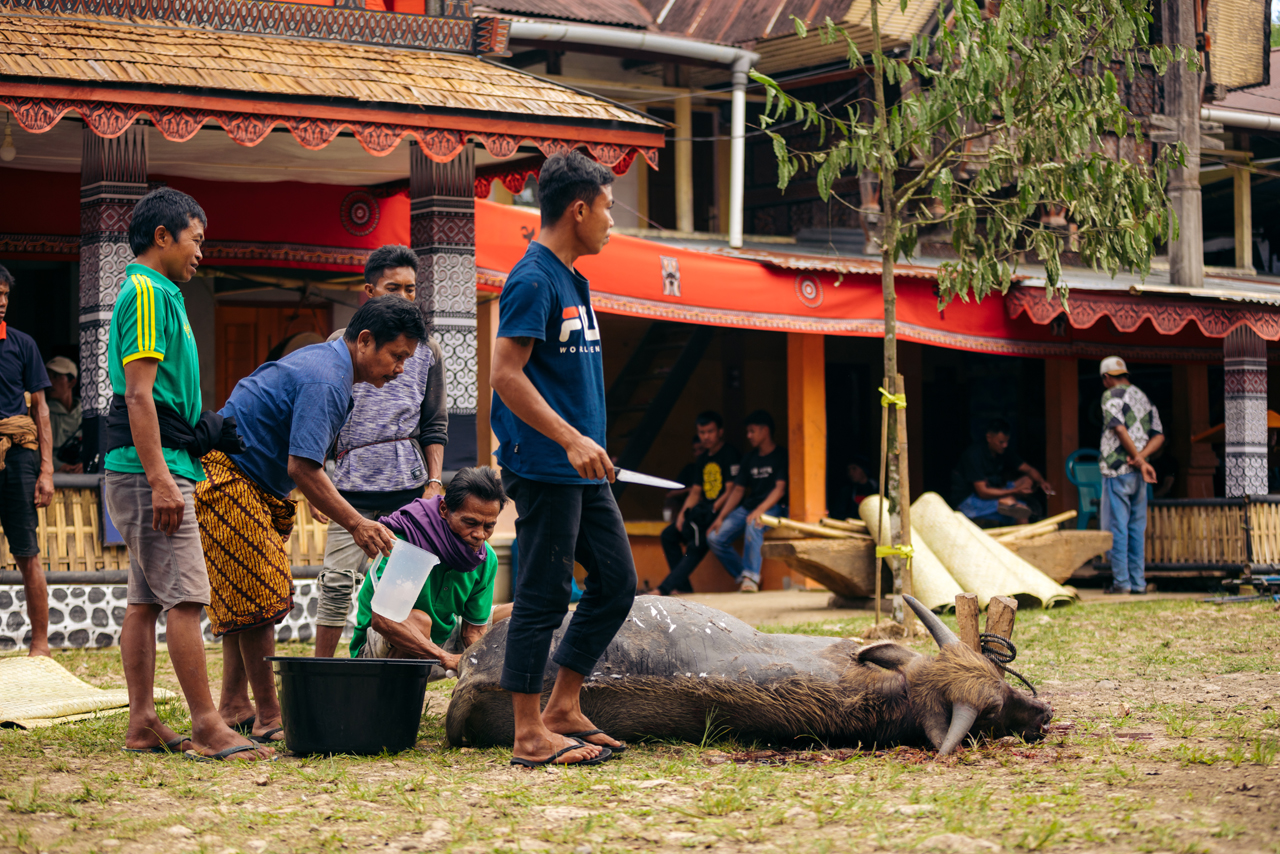

The buffalo is then cut up and shared amongst the family and friends or just cooked on-site to eat the next day.

Considering the amount to tongkonan here this seems like a very wealthy family, but I was told they had to keep the body for a year to gather funds to celebrate this ceremony.
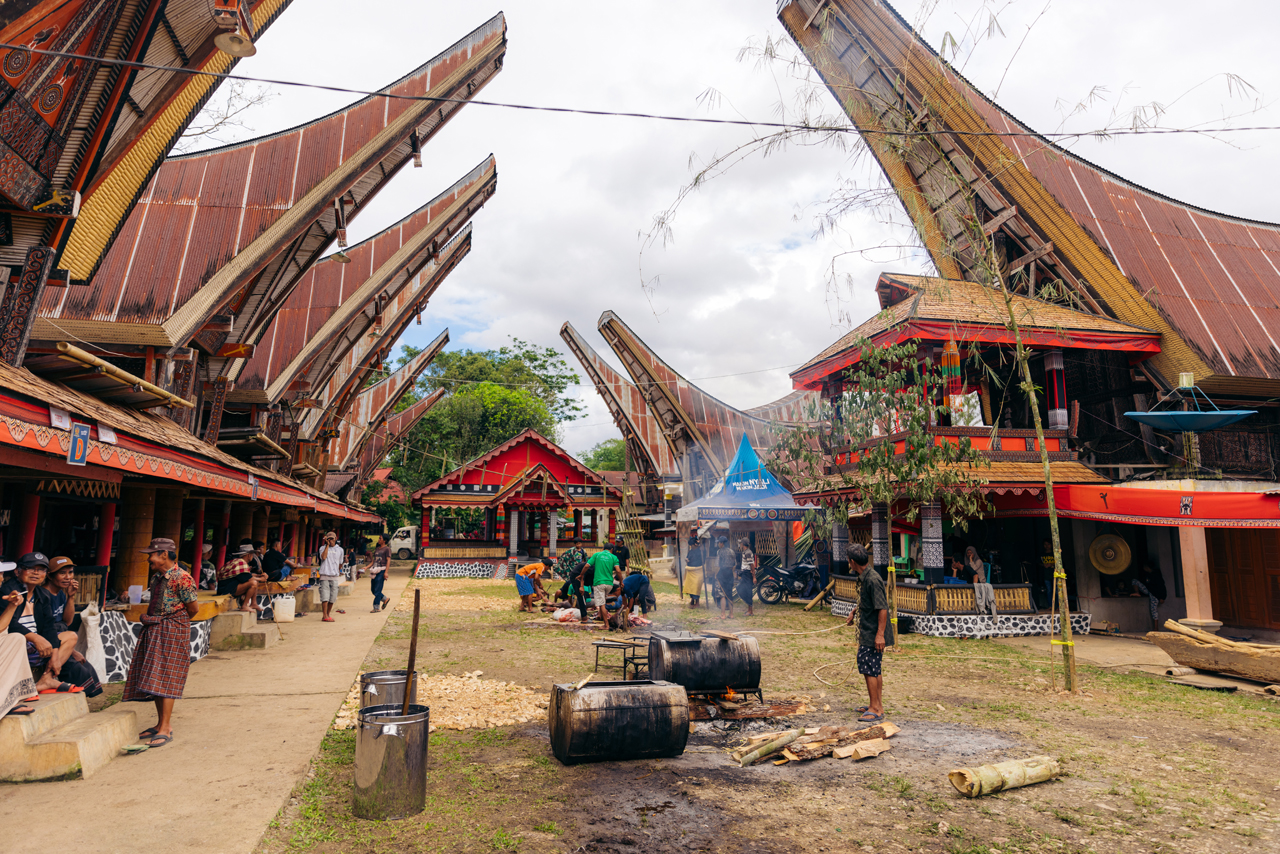
I was told the next day would be a rest day at the ceremony. I decided to go visit another burial site, Objek Wisata Kalimbuang Bori.
This area is full of rock burial sites such as this.
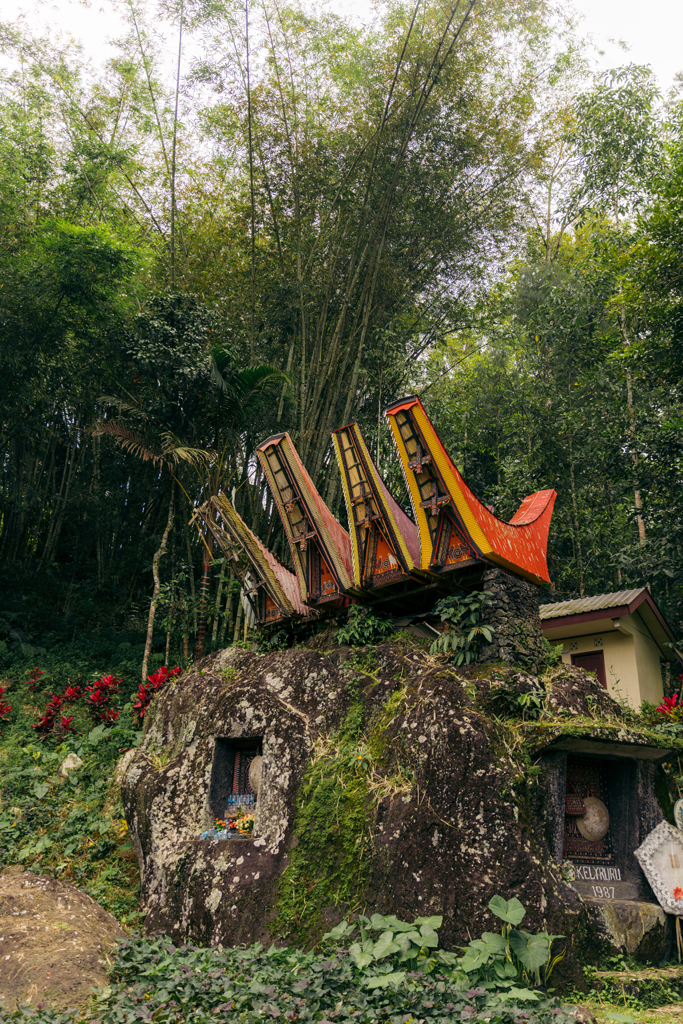
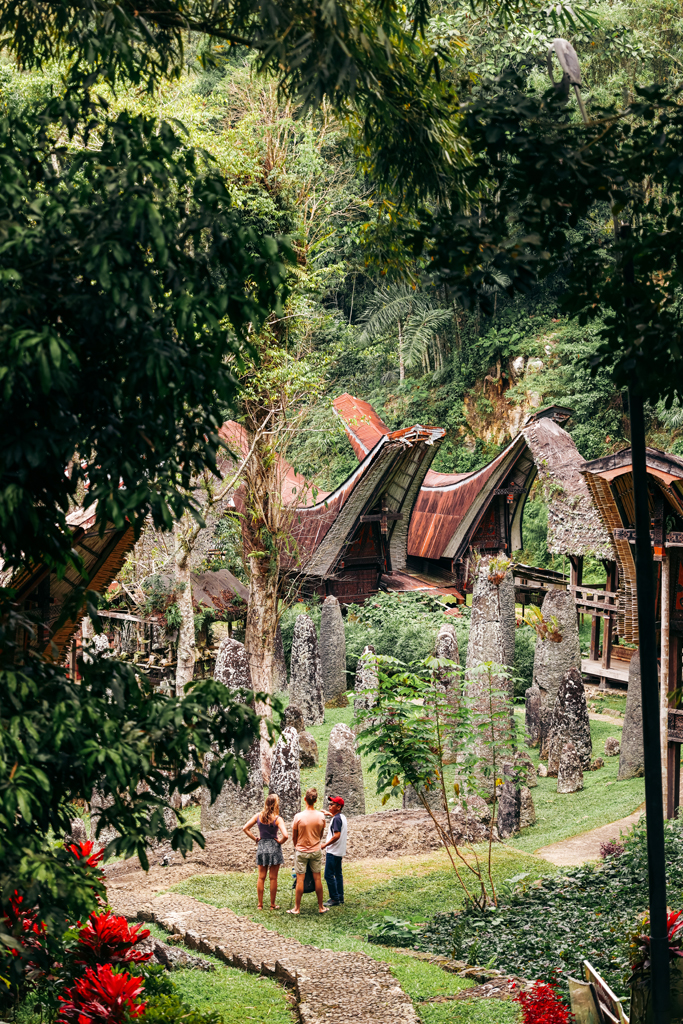

There is also this tree, just next to the main site, this is a tree where people come to leave their stillborn kids.
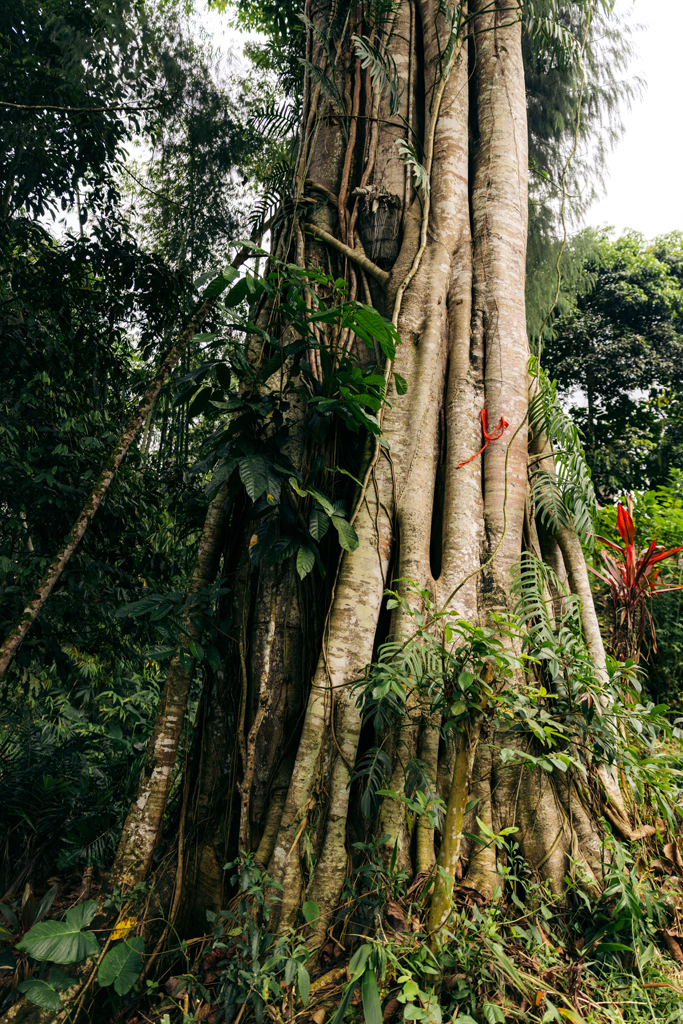
This is the Tarra tree. Trees that are hundreds of years old. For the people of Tana Toraja before, if a baby dies it is buried in this large tree
Mathen continued, for the community of followers of Todolo Aluk, when the baby died the world had to be buried in a Tarra tree. This is a form of returning a baby who died to his mother’s womb.
The Tarra tree used is a symbol of a mother. A deceased baby is buried in a tree trunk with conditions and positions as in the uterus.
The baby is buried with a sitting position as well as without clothes as the state in the womb. Then the baby’s body is covered with tree branches.
“That means he was returned to the womb. So this tree is a symbol of a mother. In this position the baby is sitting, yes like in the womb, naked then closed using tree branches. That’s the rectangular sign, “he said.
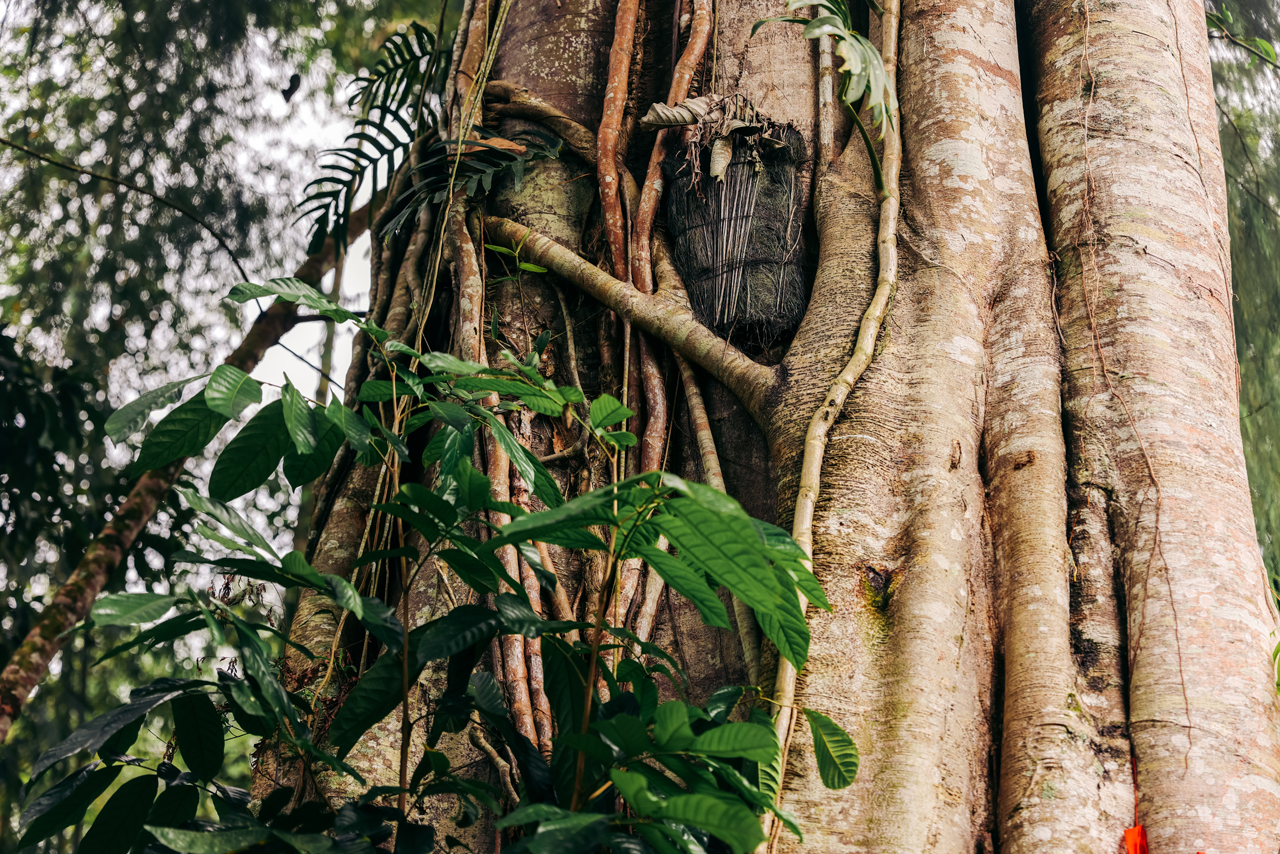
Other burial sites in Bori.
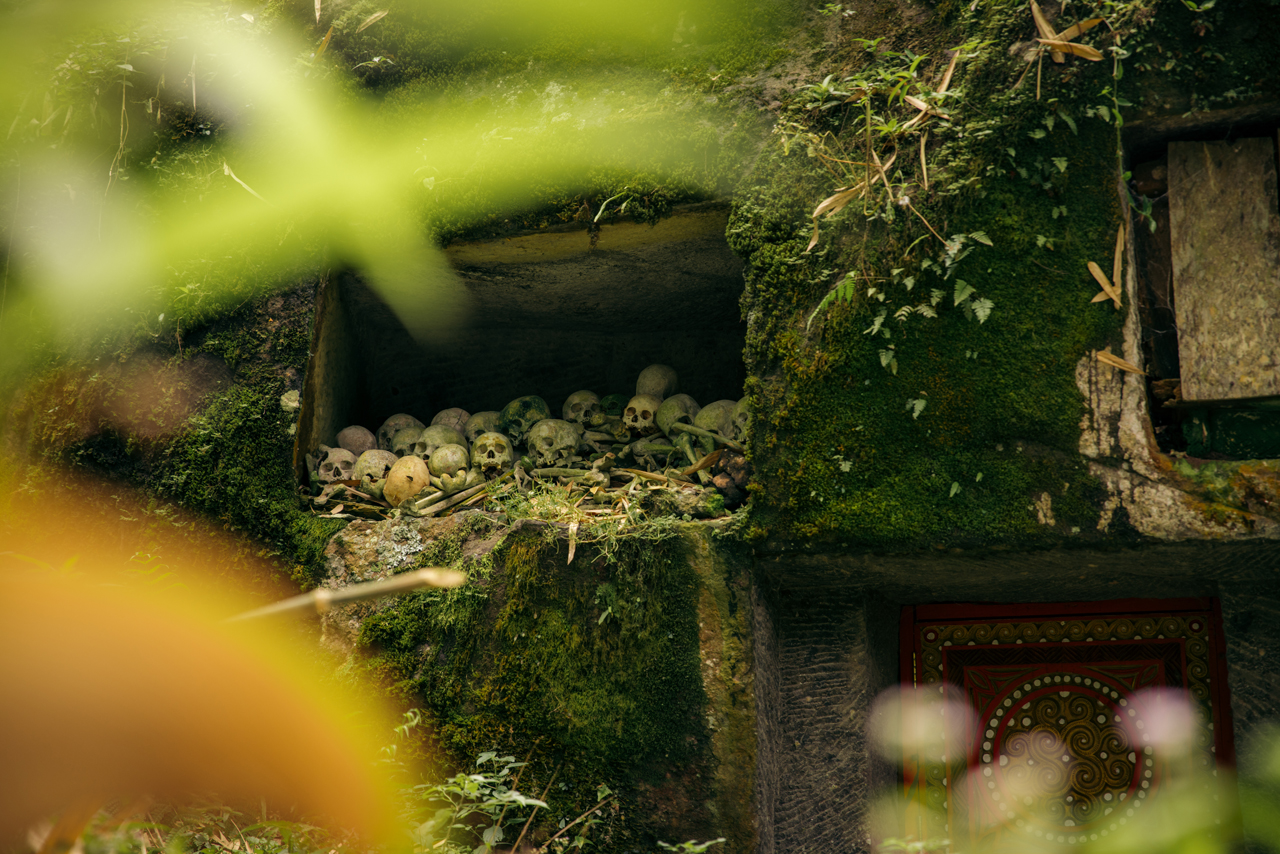
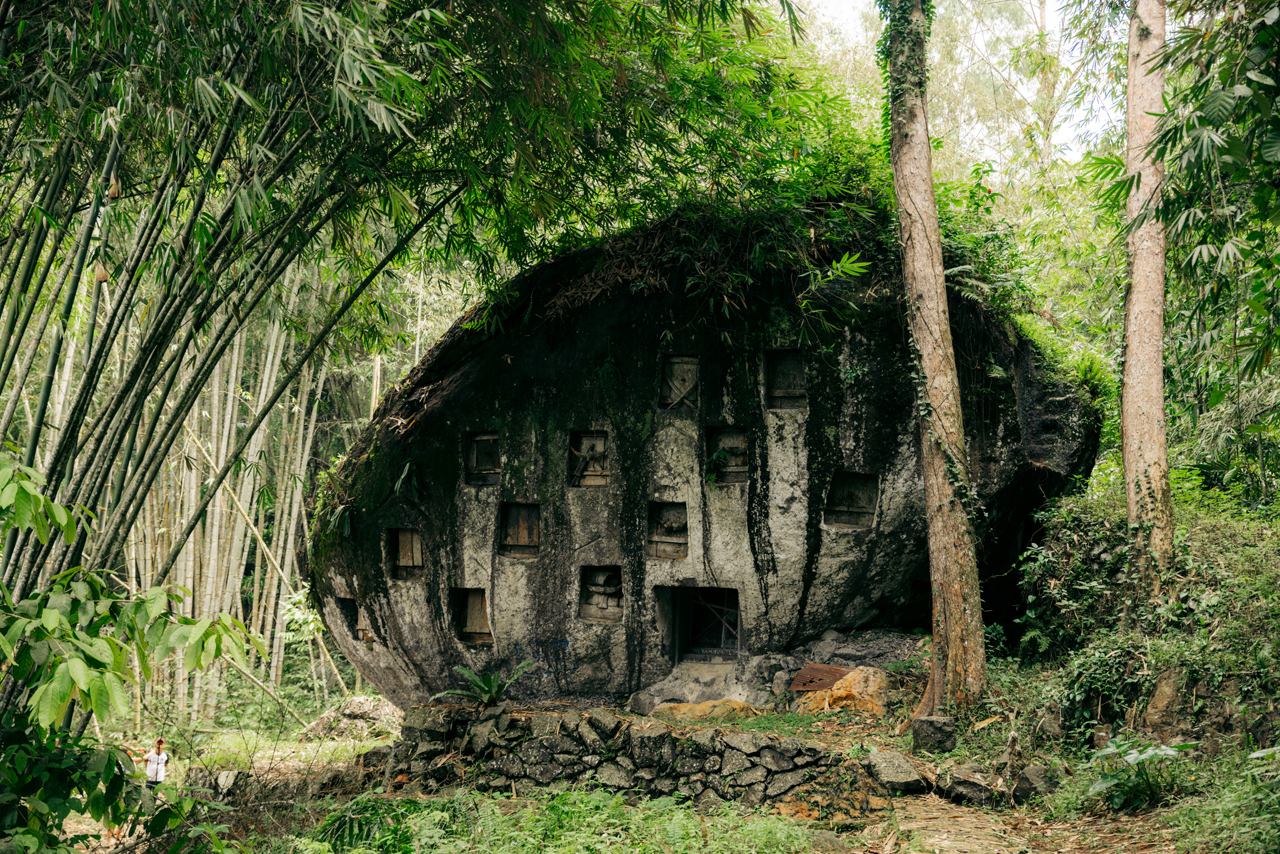
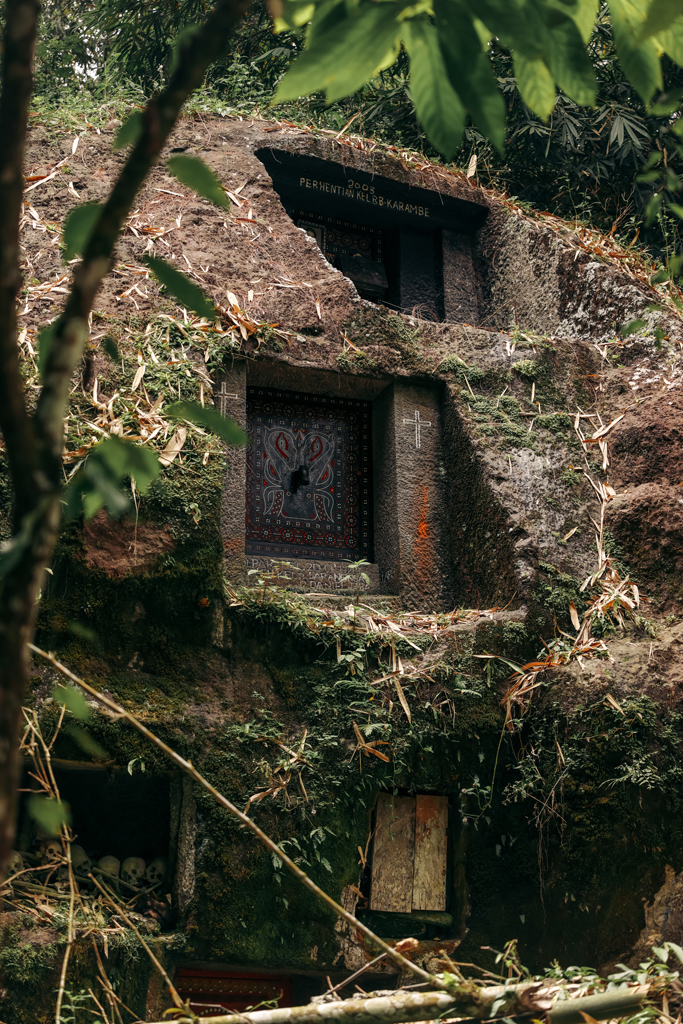
The main site viewed from the sky.
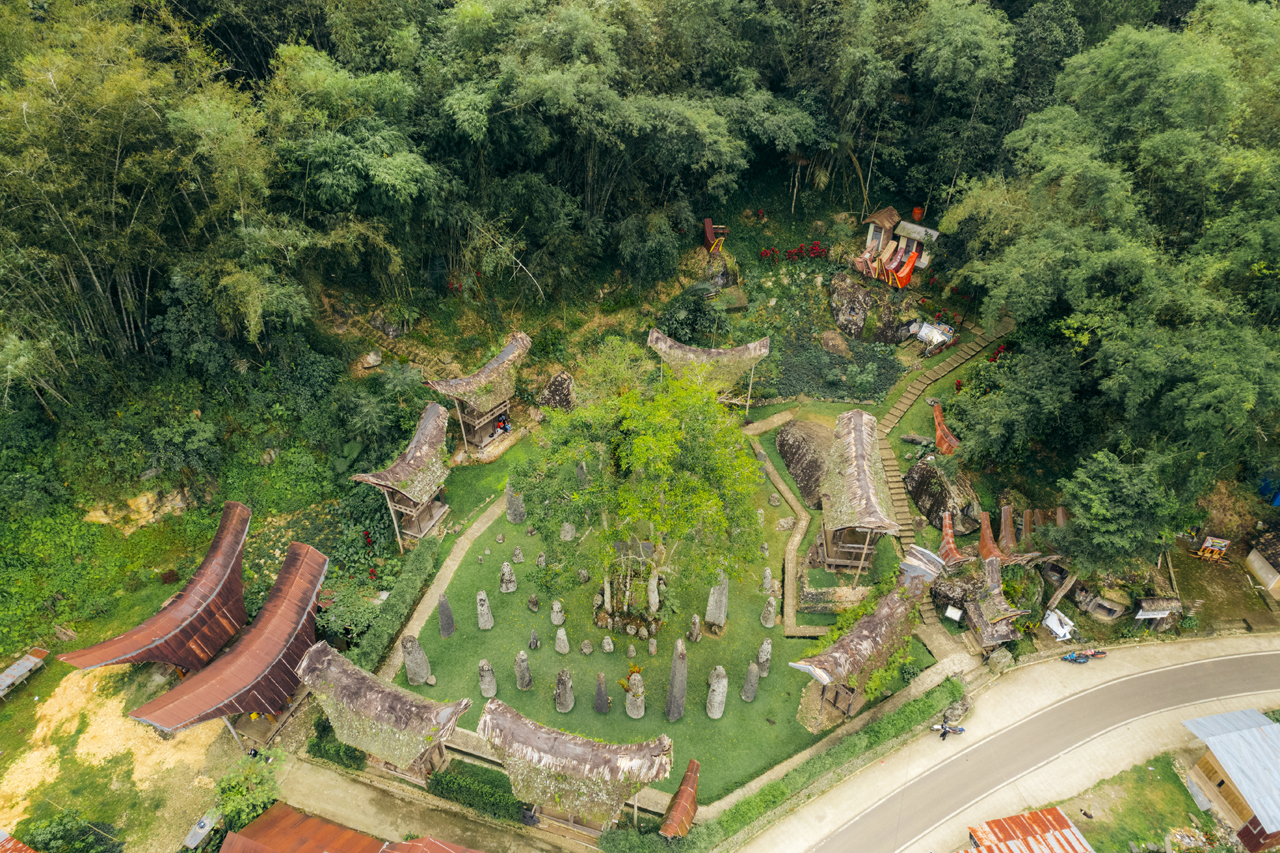
A lot of phallic rocks, I didn’t get a guide to explain to me this is here.
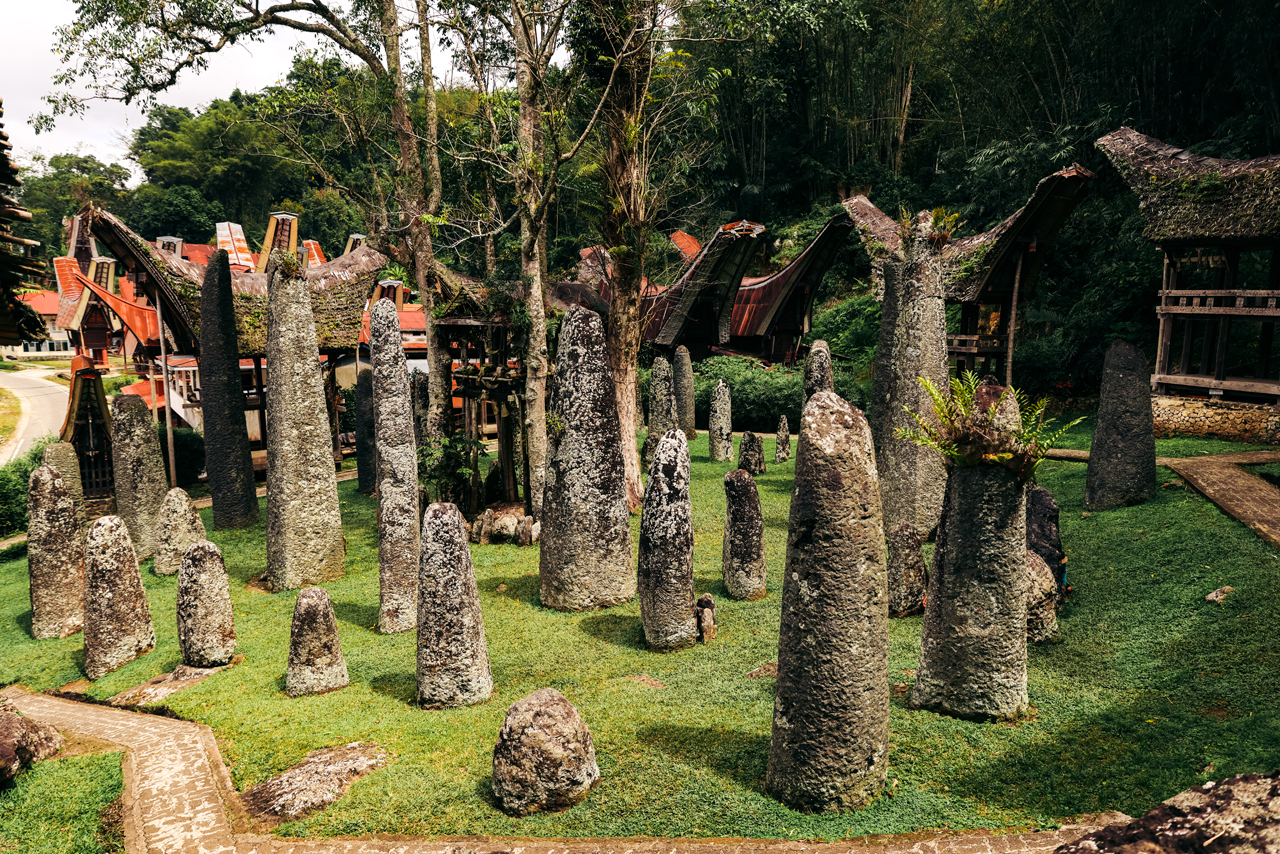
After this visit, I went on to visit the most touristic cultural site of Tana Toraja, Ke’te’ Kesu’ Toraja.
It’s still kinda authentic but there’s also a lot of souvenir shops and random stuff that shouldn’t be there.
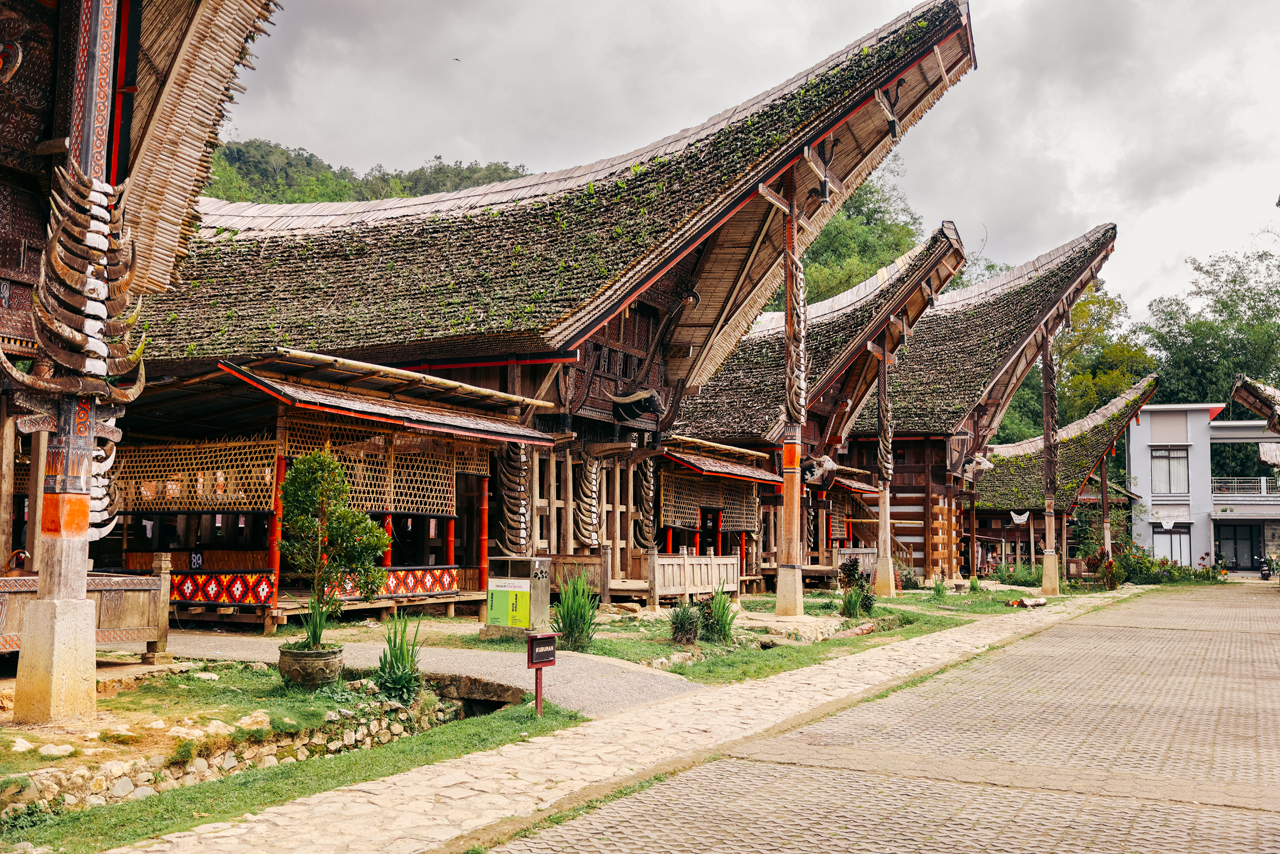
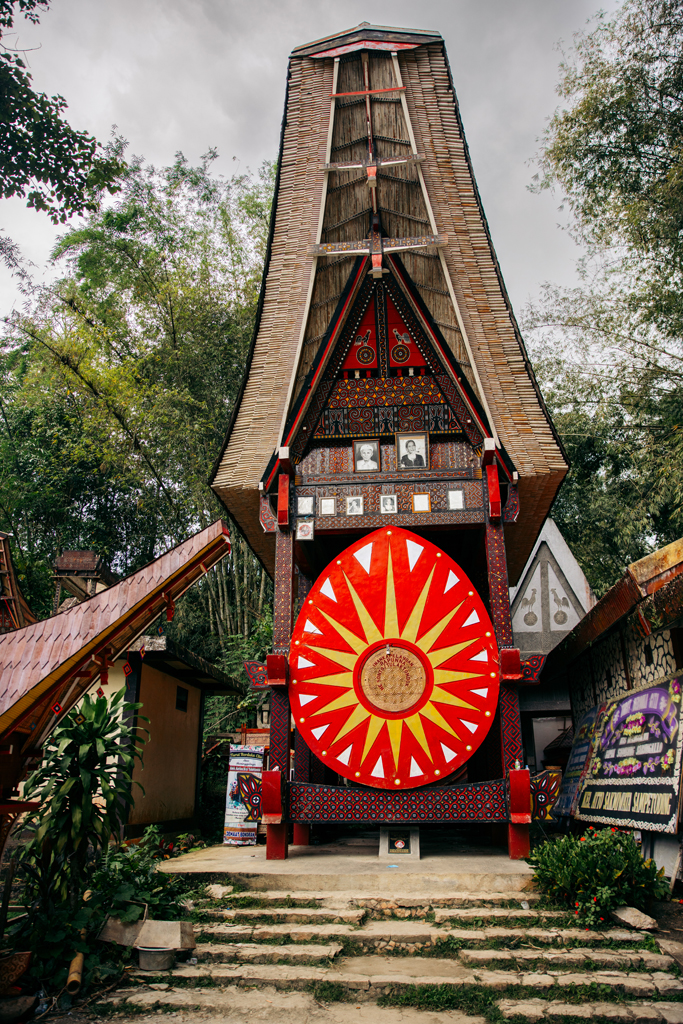

This is also a very old burial site, that’s why it’s also famous and touristic, it’s an impressive place no matter what.




“The village is over 400 years old, and is said to have not changed at all in the last 400 years.”
You can read a lot more about Ke’te’ Kesu’ here, or just google it. 😉
My last day in Tana Toraja was a bloody was, it was the day they sacrificed most of the buffalos at the Rambu Solo I attended before.
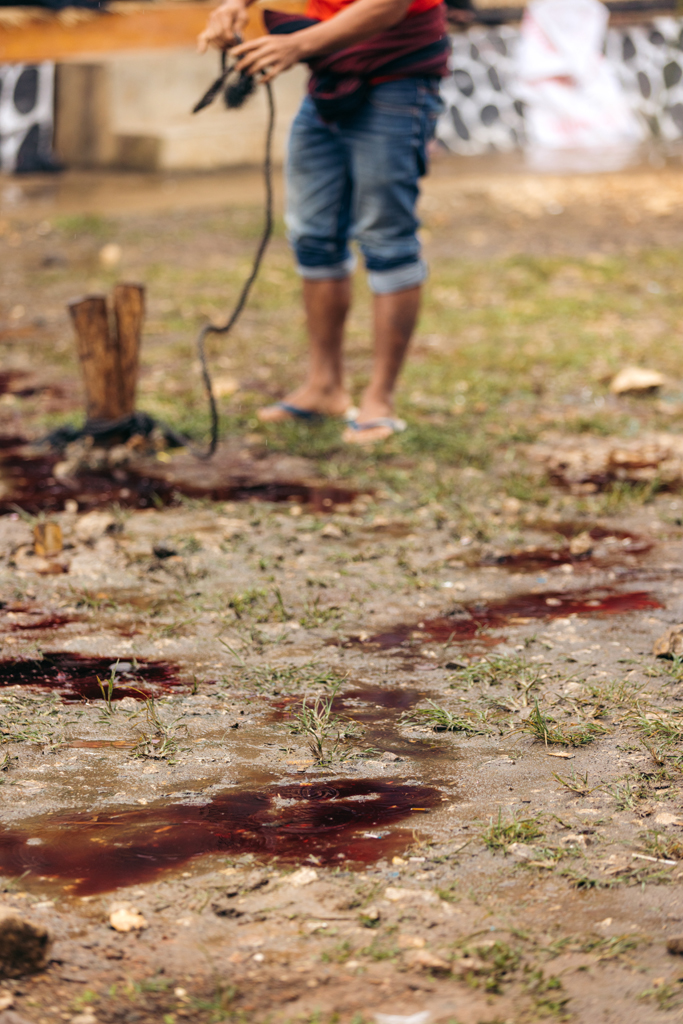
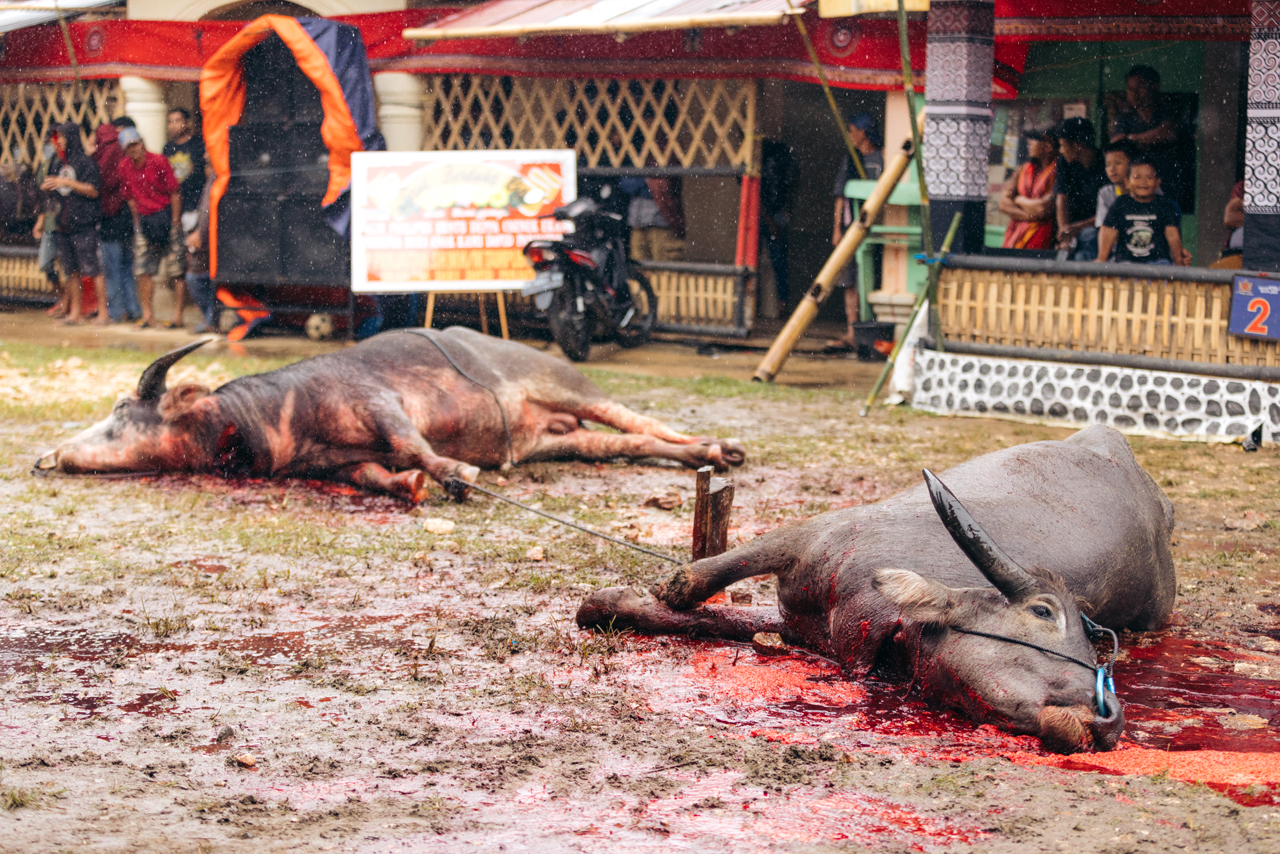
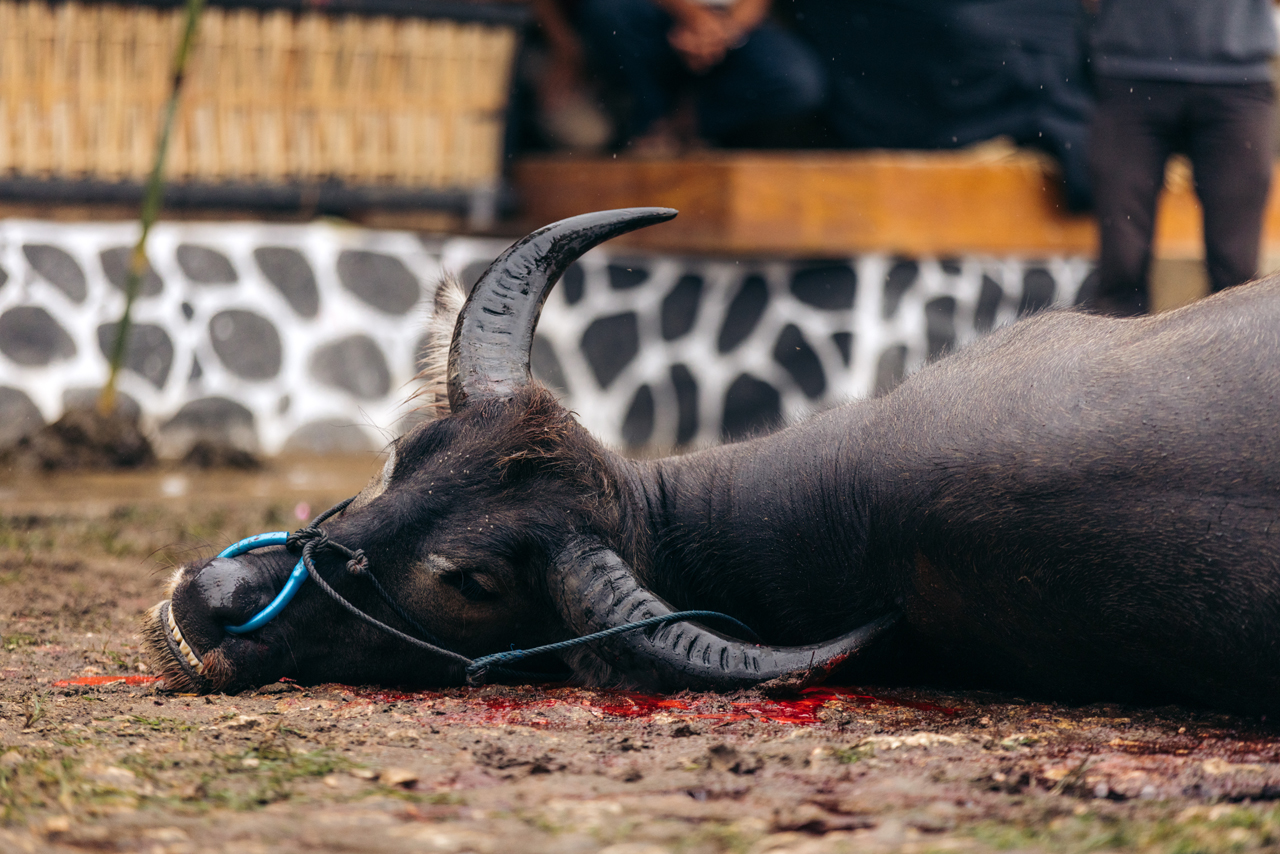
The owner of this buffalo was able to sell it for ~2700$ and gave the profits to the local church and the buffalo was spared that day.


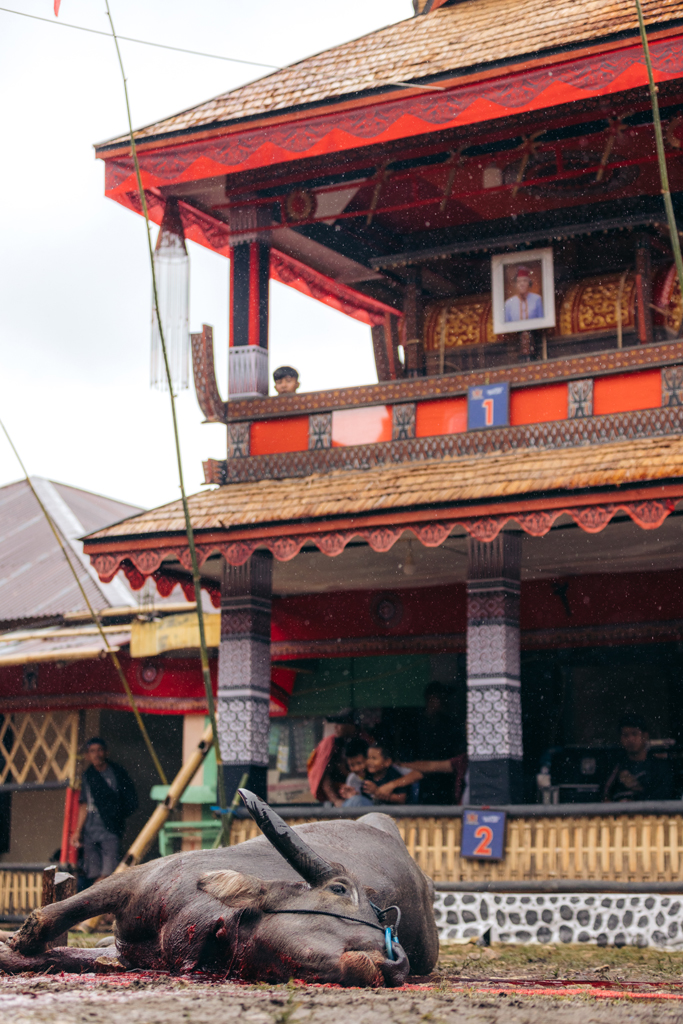
Sadly I couldn’t attend the final part of the ceremony, it was 2 or 3 days later and I had to keep moving, I have a lot more to see on this island.
I spent about 10 days in Tana Toraja and it was such an unreal experience.
The nature, the culture, the people. Just amazing.
This is the end of part 1 for the Sulawesi posts.
It’s quite long but I did spend about 70 days riding my bike in Sulawesi and as you can see there are a lot of things happening on that island.
Even 70 days was not even close to being enough to see what this island(s) has to offer.
But there is a lot more coming in part 2 and 3.
*This text was crafted with the assistance of ChatGPT 3.5.

